Climate of fear clouds focus on emissions
dominance of our economy but we are fighting for everything and we are easily manipulated in the position we are in.
NEW Zealanders are “all over the show” on what they need to do to respond to climate change – and full of fear about the future model, says political scientist Bronwyn Hayward.

But it is farmers who will bear the brunt of the land use challenges that will come with global warming.
Hayward was addressing a NZ Institute of Agricultural and Horticultural Science conference convened under the title “Can New Zealander Farmers Mitigate Climate Change?”


Action on adaptation has increased, said Hayward, but progress is uneven and “we are not adapting fast enough”.
“New Zealanders are all over the show in what they think they need to do.







“People are scared of the future model, there’s a handprint of FEARS”, which, she said, stands for frustration, environmental exclusion, authoritarian decisionmaking, retributive justice and silenced imagination.
“We need better structured faceto-face communications, thinking long term around shared values to build community development for the future we want.
“When we are fighting everything, we are not winning.
“Farming is the single biggest sector that has influenced the


“We need to give our leaders some latitude to get braver,” Hayward said.
There are increasing gaps between action taken and what is needed, she said.



These gaps are largest among lower-income populations and they are expected to grow.
“In a highly urbanised world we are losing sight of the environmental outcomes we want.
“In 2050 seven out of every 10 people will live urban, the world population will be in cities cascading and compounding risks in all regions.”


Research shows farmers will be impacted the most by climate change, she said.
“And in NZ I don’t think we have really taken into account properly the reality of climate change weather events sweeping the country.”
Hayward said the world is best placed to tackle climate change when there is an overall focus on sustainability, locally appropriate policies and governance systems.
Keeping global warming to well below 2degC can be achieved only by reducing greenhouse gases from all sectors while at the same time land must remain productive to maintain food security as the population increases and the negative impacts of climate change
Learning and growing on farm and off it
Chloe
that’s
for farming


The



NZ

Prices shown include GST. Offer available while stocks last and until 24th December 2022. *Santa Dollars voucher cannot be exchanged for cash. Santa Dollars voucher includes GST and must be redeemed before 31st March 2023. CRF125f FROM ONLY $5,595 inc gst $300 Santa Dollars* GET CRF50F ONLY $2,595 inc gst $150 Santa Dollars* GET $200 Santa Dollars* GET CRF110f ONLY $4,595 inc gst RIDE RED THIS CHRISTMAS GET up to $300 SANTA DOLLARS* TO SPEND IN-STORE AND A HONDA RACING T-SHIRT WITH EVERY NEW CRF KIDS BIKE 1
Butcher-Herries, pictured with wife Makita Butcher-Herries, says the opportunities for Māori to participate and succeed in agriculture are better than ever. Photo: Alphapix PEOPLE 24 Leadership
fit
effectiveness of rural leadership has faced intense scrutiny as sector chiefs tread a fine line between activism and blunting the sharpest edges of government policy. SPECIAL REPORT 26-33 A four-fold increase in landowners wanting to register forests for the Emissions Trading Scheme has created a logjam. NEWS 8 Researchers say a disproportionate loss of soil comes from winter forage grazing, urging farmers to consider other systems. NEWS 16
has no room to feel smug about prime ministers whipping in and out of office, says Steve WynHarris. OPINION 20 Vol 20 No 42, October 31, 2022 View online at farmersweekly.co.nz $4.95 Incl GST Thumbs up for 5G roll out 13
Annette Scott
NEWS Climate
change
Continued page 3
Bryan Gibson | 06 323 1519
bryan.gibson@agrihq.co.nz
Robertson
claire.robertson@agrihq.co.nz
Neal Wallace | 03 474 9240
neal.wallace@agrihq.co.nz
Gerald Piddock | 027 486 8346
Journalist gerald.piddock@agrihq.co.nz
Annette Scott | 021 908 400
Journalist annette.scott@agrihq.co.nz
Hugh Stringleman | 09 432 8594
Journalist hugh.stringleman@agrihq.co.nz
Richard Rennie | 027 475 4256
Journalist richard.rennie@agrihq.co.nz
Nigel Stirling | 021 136 5570
Journalist nigel.g.stirling@gmail.com
Lana Kieselbach | 027 739
Andy Whitson | 027 626 2269 Sales &
andy.whitson@agrihq.co.nz
Steve McLaren | 027 205 1456 Auckland/Northland
Manager steve.mclaren@agrihq.co.nz
Jody Anderson | 027 474 6094
News in brief Farms for sale
Coast
be
is putting five profitable
to
climate.
saying they
in the
Colin Glass said Dairy Holdings has always sought to “get bigger or get out” in the areas where it’s located,

Chief
the lack of options in the area
“the ability for us to grow is quite
Waikato/Bay of Plenty
Manager jody.anderson@agrihq.co.nz
Donna Hirst | 027 474 6095
Lower North Island/International Partnership Manager donna.hirst@agrihq.co.nz
Grant Marshall | 027 887 5568
South Island Partnership Manager grant.marshall@agrihq.co.nz
Debbie Brown | 06 323 0765
Marketplace Partnership Manager classifieds@agrihq.co.nz
Grant Marshall | 027 887 5568
Real Estate Partnership Manager realestate@agrihq.co.nz
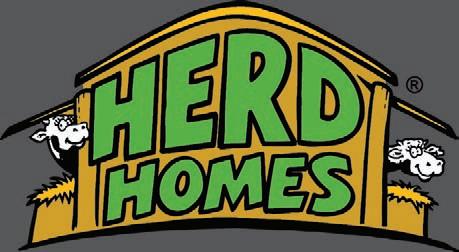
Andrea Mansfield | 027 602 4925 National Livestock Manager livestock@agrihq.co.nz
PUBLISHERS
Dean and Cushla Williamson Phone: 0800 85 25 80 dean.williamson@agrihq.co.nz cushla.williamson@agrihq.co.nz

Farmers Weekly is Published by AgriHQ PO Box 529, Feilding 4740, New Zealand Phone: 0800 85 25 80
www.farmersweekly.co.nz
Fill your boots
shares rose 3.7% in early afternoon trading on the prospect of yet another record profit for the rubber goods manufacturer.
While global conditions remain uncertain, the company said it expects net profit of $48 million to $52m in the year ending June 30, 2023, beating the record $47.8m posted for the 2022 June year.
Bugging out
The Environmental Protection Authority is seeking views on whether rules around the use of a neonicotinoid insecticide to stop brown marmorated stink bugs invading New Zealand should be changed.
The Ministry for Primary Industries has applied to increase the use of Actara insecticide up to a maximum of 19 in a single area, only in response to a serious incursion.

Rockit takes off
Rockit Global Limited is identifying suitable land and growers in Canterbury and Nelson and seeking new partners in Hawke’s Bay and Gisborne.
Rockit’s GM commercial, Tom Lane, says with international demand for the snack-size apples booming, the brand is tasked with finding fresh ways to keep up across more than 30 countries including China, India, Vietnam, the US and UAE.
COME AND SEE OUR NEW DESIGN Come and take a look at our new design Open Day – 15th Nov 10am to 2pm 426 Hedgehope Block Road, Hedgehope HERD HOMES NZ LTD LK0113286© Enjoy all the benefits of a HerdHomes shelter while enjoying a faster construction with a steel only design. Contact Marcel 027 227 6186 Invented by NZ Farmers for NZ Farmers 2 New Zealand’s most trusted source of agricultural news and information Contents SALES CONTACTS
Marketing Manager
Partnership
Partnership
Website:
ISSN 2463-6002 (Print) ISSN 2463-6010 (Online) EDITORIAL
Managing Editor
Claire
Sub-Editor
Journalist
PRODUCTION
4295 production@agrihq.co.nz ADVERTISING MATERIAL Supply to: adcopy@agrihq.co.nz SUBSCRIPTIONS 0800 85 25 80 subs@agrihq.co.nz PRINTER Printed by Stuff Ltd Delivered by Reach Media Ltd AdvertiseGet in touch FIELD GOAL: Reacting to criticism that the DIRA bill tilts the playing field in Fonterra’s favour, chair Peter McBride says the new structure will in fact help level the playing field with foreign-backed competitors and is in NZ’s best interests. STORY P12 News . . . . . . . . . . . . . . 1-16 Ag&Ed . . . . . . . . . . . . . . 17 Opinion . . . . . . . . . . 18-22 World . . . . . . . . . . . . . . . 23 People . . . . . . . . . . . . . . 24 Technology . . . . . . . . . . 25 Special Report . . . . 26-33 Real Estate . . . . . . . 34-59 Marketplace . . . . . . . . . 60 Livestock . . . . . . . . . 60-65 Markets . . . . . . . . . . 66-71 Weather . . . . . . . . . . . . . 72
Dairy Holdings
West
farms up for sale,
should
attractive
buyers
current
executive
and
means
challenged”. Skellerup
Crunch on land use looms for Canterbury
Gerald Piddock
ANEW report predicts the possibility of major land use change in Canterbury in the early 2040s when water use consents renewals coincide with the need for dairy farmers to replace their milking sheds.
The report by Our Land and Water found that about 40% of all dairy milking sheds in the district were built between 2007 and 2015, according to resource consents.
Using the IRD calculation of a 33.3-year economic life for a dairy shed, those 230 sheds will reach the end of their economic life between 2040 and 2048.
This means nearly half of all dairy sheds are likely to need replacing during that period.

The report’s authors noted that replacing an aging dairy shed is a significant capital investment. Their research found that any farmer making that kind of decision is going to look at climate suitability, regulations and the prevailing economics of dairying compared to other land uses.



They also found that in the 2030-40 period, 78% of all water use consents in the district will expire.

The area of land involved in this process will, however, be even greater, as the water consents of all three irrigation companies in the district also fall due in this period.





Over the past 20 years, irrigation has transformed Ashburton District in the central South Island away from its traditional use as a sheep and grain-growing region.

Irrigated farming now covers 65% or 220,000ha of the Ashburton district plains. Dairy farming now accounts for $1 billion of the local economy and 63% of net farm income for the district.
“The renewal process is significant because the implementation of the National Policy Statement for Fresh Water Management (2020) may introduce new or different consent conditions for water use,” the report said.
“This could change the viability or feasibility of some land uses under those new conditions, especially if the fortunes of dairy farming do not compare as favourably as other land use options.”

The research was led by Ashburton District Council agriculture portfolio advisor Richard Fitzgerald. He is involved in an intensive irrigated mid-

Canterbury family farm, and is a past chief executive of New Zealand Young Farmers and the Red Meat Profit Partnership.




It also looks at how the changing climate can be included in farmers’ decisions about their business lifecycle, on-farm infrastructure and consent conditions. It was funded by the Our Land and Water National Science Challenge, via its Rural Professionals Fund.
Part of this research included running farmer focus groups and examining data from the Ashburton District Council and Environment Canterbury to analyse the economic life of key assets such as dairy sheds and irrigation consents.

It found that these thoughts did not faze the farmers in the focus groups, however, with one farmer saying that they would follow the profits and go where the market led, and another talking about planning investments to cope with extreme events.
“For owner-operators and family farms, making any decision to change will involve looking at return on investment, but they’ll also consider their own personal stage of their farming career, succession plans, and asset value considerations of alternative land uses. At the moment there are not many land uses (with the required
supporting infrastructure) that compete with dairy on a returnon-investment basis, but that may change in the future,” said Nick Giera, a dairy farmer at Ruapuna, mid-Canterbury.

The research also found that meaningful climate information at a 5km x 5km resolution would give farmers confidence to make changes that would improve their farm’s circumstances.
“My guess is that most farmers will wait until there are reliable trends and patterns of long-term changes to climate before making significant changes to their business. This means farmers are likely to have other factors that drive change first, such as returns






and asset replacement decisions,” Giera said.



“Climate data is notoriously inaccurate and models that predict future changes in climate have a long way to go to give farmers any confidence in investing based on future predictions. Soil type and localised climate are big drivers of what is possible and that’s where we need data.”

The researchers observed, “Farmers are a logical bunch who are keen to understand the changing climate at a granular, local level as their whole business model is based on climate. “It makes good business sense to understand what is coming so they can future-proof their business.”
‘Give our leaders latitude to get braver,’ professor urges










Continued


on vegetation increase.










But “there are limits to the contribution of land to addressing climate change, for example energy crops and afforestation. It also takes time for trees and soils to store carbon effectively.”

Hayward said surveys show New Zealanders’ willingness to make climate-positive change has remained relatively steady in 2022 compared to 2021.
More significant increases in change come in walking, cycling and using public transport instead of driving a car or motorbike; not
flying; and eating fewer dairy products, replacing dairy with alternatives.
Eating less meat is unchanged.
He Waka Eke Noa programme director Kelly Forster told the conference that collaborative conversations are key.
She said 75% of farms now










know their GHG numbers – with a target of 100% by December 31, 2022 – but “it is not necessarily the numbers that are important but the quality conversations we are having in this space in industry workshops with farmers’ understanding”.
With farmers set to pay for
emissions by 2025 in a world-first climate plan, all voices need to be heard in the pricing consultation process.

“There’s plenty more to workthrough and more opportunities to come through a partnership approach to implementation by 2025.”





PROUDLY NZ OWNED alleva.co.nz TURBO® is a registered trademark of Alleva Animal Health Ltd. TURBO Initial (A011703) is a registered pursuant to the ACVM Act 1997. See www.foodsafety.govt.nz for registration conditions. INITIAL Stage one of the TURBO 3-stage Cattle Drench Programme. Exclusive to veterinary practices nationwide. THE PROVEN WAY TO WEAN. COMBAT Parasites + Coccidiosis in a single dose 15L NOW AVAILBLE 3 FARMERS WEEKLY – farmersweekly.co.nz – October 31, 2022News 3
NEWS Dairy
DAIRY GONE? A new report by Our Land and Water says the convergence of water consent renewals and dairy shed replacements could lead to land use change potential in Canterbury in the next few decades
from p1
Nimbler route into India gaining favour
“But the issue of building relationships between the two countries was canvassed.”
TRADE Minister Damien O’Connor has winkled a commitment out of his Indian counterpart to conclude a free trade deal with New Zealand “at some stage”.
But improved access for NZ’s largest exports to India’s heavily protected market of more than a billion consumers could be years away if a recent meeting between the two countries’ trade ministers is anything to go by.
O’Connor said he did not push India’s Minister of Commerce and Industry, Piyush Goyal, for a resumption in talks for a free trade agreement (FTA) when the pair met in New Delhi earlier in October.
Negotiations began in 2011 under the previous National-led government but there has been no negotiating round for six years.
Asked whether he had asked Goyal to agree to resume talks O’Connor said he had not.
“No. The issue of the FTA was not discussed in detail.
Australia concluded a free trade deal with India earlier this year despite starting its negotiations a year later than NZ. A number of other countries and blocs, including the United Kingdom and European Union, are also knocking on the door for an FTA with India.
O’Connor said India has not shut the door on NZ but a number of sensitivities on the Indian side mean progress could be slow.

“In the brief discussion I had with the minister he reassured me that we could do a FTA at some stage in the future.
“But he took the opportunity to highlight once again the sensitivity of dairy into their country and that the door was not open for dairy at this point.”
O’Connor said the discussion had revolved around what further steps NZ could take to help boost productivity in the Indian horticultural and agricultural industries.

He said India is interested in the animal traceability systems used in NZ.
“There is the issue of the animal traceability and the NAIT system that we use.
“Breeding and feeding are things that are of interest to India.
“They do appreciate the expertise that we have in that area and that is where we can work with them to make a difference
for their dairy farmers.”
O’Connor highlighted the contribution being made by Binsar Farms, a small-scale dairy farming joint venture near New Delhi backed by several Indian tech entrepreneurs and Waikato dairy farmer and former Fonterra director Earl Rattray.
Rattray, who led the business delegation to New Delhi that O’Connor joined, afterwards told Farmers Weekly that NZ should park for now its demands for its powerhouse commodities like butter and skim milk powder if it wanted to make progress in trade talks and not be left behind by competitors.
Rattray said there are plenty of second-tier dairy products that are not a threat to the Indian dairy industry for which tariff reductions might be able to be agreed upon.
O’Connor said he is working on a similar approach.
“That will be the approach that we will be taking rather than a formal commitment to an FTA and negotiation that might take a long time and hold up opportunities that are present now and could be processed quickly.
“People are trading into that market now in some limited areas and if we can make progress on that whether it is through a formal FTA or some adjustments to the current trade restrictions then that is something we will actively pursue.”
Govt backs North Canterbury water project
Staff reporter NEWS Water

THE government is backing a farmer-led strategy in North Canterbury’s Amuri Basin to boost water quality, Agriculture Minister Damien O’Connor has announced.
The project will help farmers in the Amuri Basin work together to improve water quality in their drains and streams and assist the government’s goal of restoring waterways, O’Connor said.
The project is led by Amuri Irrigation Company (AIC)
with co-investment from Environment Canterbury and DairyNZ. It seeks to build on AIC’s existing strategy to farm beyond the regulatory minimums.

The government is committing $1.49 million over three years to the $2.69m project through the Ministry for Primary Industries’ Sustainable Food and Fibre Futures Fund.
The Amuri Basin encompasses the towns of Culverden, Rotherham and Waiau.
O’Connor said the project will seek to develop tools, including a spatial risk-based integrated land and water

management system.
The system will combine on-farm and catchment mitigations to identify environmental risks within the Amuri Basin.
The project will also develop and pilot a localised pricebased mechanism that seeks to financially incentivise sustainable land use.
This will explore whether it is possible for farms to receive financial benefits proportional to their on-farm nutrient losses.
The project aims to be a blueprint for other catchments faced with freshwater quality challenges, O’Connor said.
We’re online
NZ’s most trusted source of daily agricultural news and information is now a website.
farmersweekly.co.nz/everyday farmersweekly.co.nz
4 FARMERS WEEKLY – farmersweekly.co.nz – October 31, 2022 News4
Nigel Stirling MARKETS
Trade
OPPORTUNITIES: Trade Minister Damien O’Connor, here with his Indian counterpart Piyush Goyal, says NZ will be pursuing opportunities in India beyond focusing only on a formal commitment to an FTA ‘that might take a long time and hold up opportunities that are present now and could be processed quickly’.
Photo: twitter.com/PiyushGoyal
JOINT VENTURE: O’Connor highlighted the contribution being made by Binsar Farms, a small-scale dairy farming joint venture near New Delhi backed by Indian tech entrepreneurs and Waikato dairy farmer Earl Rattray.
Photo: Wikimedia Commons
Creditors top 120 after failed shipment
Annette Scott NEWS Business


MORE than 120
creditors have lodged claims following the liquidation of livestock export company Genetic Development (NZ) Exports Limited Partnership.
In the first report to creditors, PwC liquidator Malcolm Hollis said the GDEx creditor list is made up of farmers in the main, with livestock agents, trucking companies and ports also in the pool.
Most creditors are in the $20,000-$50,000 bracket, but there are some significantly larger ones.
It is understood creditors are collectively owed millions, with about $2.7 million alone owed to two trucking companies.
Hollis could not provide an overall tally of the creditor claims.
“At this time we are still receiving creditors’ claims in the liquidation. Updated figures will be provided in our next statutory report,” he said.
At this stage all creditors rank
equal as unsecured creditors.
GDEx was put into liquidation by the high Court in Hamilton on September 5, 2022, with directors blaming the company’s financial challenges on a failed shipment of cattle to China.
The livestock ship MV Al Kuwait never came to New Zealand in early May to collect 12,000 head of cattle that were waiting on two pre-export isolation farms.

Total direct costs and losses for the failed shipment added up to more than $5m.
Hollis said the potential of a litigation claim on the charter of the ship that never arrived is one of three key focuses of the liquidation investigation.
“We are in communication with relevant parties and this is a main aspect we are working on.”
The second focus is on whether the GDEx limited partnership traded insolvent.
Equalisation between creditors – whether creditors were treated equally prior to liquidation – is also under investigation.
“We have got the powers to go through and determine any element of unfairness with some [creditors] paid in full and others not paid at all,” Hollis said.
“We need evidence of people’s knowledge, if some are aware they were getting paid in full and others not at all then it can be voidable.
“From what we are hearing, many did know the payment process ... knowing how the process was happening indicates it is not fair and equal.”
GDNZ Management Ltd was incorporated on October 9, 2020, with the ultimate holding company being China-based HASLIC Limited, which had listed as a private company on July 7, 2020.
HASLIC holds 60% of the shareholding and GDNZ 40%.
The five listed directors include Hamilton-based David Hayman and David McEwen, alongside three China-based directors, Jin Ding, Sicong Wang and Kangyun Yang.


Hollis said it is an “unusual” situation with the entity in liquidation a partnership, as part of a general partnership.
The NZ livestock exporting arm of the limited partnership is the entity in liquidation.

Meanwhile Hayman is back in the live export business with another company, Herdbuilder.
Hollis said while it is frustrating
for creditors, liquidation does not stop a director running other businesses.

Implementing the restructuring of a company into a phoenix company that rises from the ashes of an old, failed company is just as much a legal exercise as it is an accounting and public relations one.

“Phoenix company” refers to a failed company that at any time before, or within five years after, the commencement of the liquidation is known by the same or a similar name.

A new company with a new name is formed and largely the old company is transferred into the new one with selected staff, assets and business, though the old

company’s debts are not.
“Understandably if a director does this it can be a source of contention for creditors of the failed company and they naturally get frustrated.
“But unless they are contravening the Companies Act under the phoenix companies rules, we can’t stop them.



“We will look at that though –but at this stage I don’t believe they are [contravening the rules],” Hollis said.


Herdbuilder Export Services Limited lists its two directors as David Hayman and David McEwen under the ultimate holding company Hayman GD Consulting Ltd, of which Hayman is the sole director.
New vessel helps Ravensdown ship greener
reporter
Shipping
COASTAL Bulk Shipping has added the MV Rangitata to its fleet, shipping Ravensdown product on its maiden voyage from Napier to Dunedin.
trip by ship reduced CO2 emissions by about 39t when compared to moving the
same volume of product by road.
The boat is the newest vessel for Coastal Bulk Shipping, one of four preferred suppliers in a $30-million government investment for coastal shipping funding through the National Land Transport Programme (NLTP) to improve domestic shipping services, reduce emissions, improve efficiency,
and upgrade maritime infrastructure.
Ravensdown sustainability manager Allanah Kidd said coastal shipping is forming a key part of Ravensdown’s national emission reduction strategy.

“We are endeavouring to supplement road with coastal shipping, where the opportunity arises, to reduce our impact on climate change.
“It’s a more efficient way to move product, takes trucks off the road and reduces congestion.”






For its first journey, MV Rangitata took phosphate rock from Napier to Dunedin, then 2000t of superphosphate from Dunedin to New Plymouth.
Beyond this maiden voyage, Ravensdown will look to engage the vessel as required to move cargo into smaller ports, namely
Whangārei, Whanganui, Gisborne and Nelson.
Ravensdown has used Coastal Bulk Shipping for many years. This is the first journey on their new vessel, which has a greater payload so offers additional benefits.
The new ship can carry 2000t of superphosphate, compared to the company’s smaller 800t vessel, Anatoki.
suzuki.co.nz






T&Cs: Promotion available between 26/9/22 to 31/12/22 on new Suzuki JR80, DR-Z125, DR-Z125L, LT-Z50 and LT-Z90. Free Tool Set is covered by the manufacturer’s warranty, and valued at $79.98. Available through participating authorised Suzuki dealers. An interest rate of 5.99% p.a. is available to approved applicants of UDC Finance. Offer is available between 26/09/22 to 31/12/22 on a loan term of 24 months, from no deposit on regular monthly payments. Normal UDC lending and credit criteria apply and includes a $305 documentation fee and $10.35 PPSR. Thiswonpresent ’t fit underthebed. But it will fit your Christmas budget! 61 PIECE TOOL SET PLUS FROM NO DEPOSIT 24 MONTHS TO PAY!FREE TRACTA_65244_KidsBIke_FW 5 FARMERS WEEKLY – farmersweekly.co.nz – October 31, 2022News 5
The
Staff
NEWS
BACK IN BUSINESS: Directors of the failed company – at least one of whom is back in the live export business – blame its financial challenges on the failure of livestock ship MV Al Kuwait to collect 12,000 head of cattle from New Zealand and deliver them to China.


































































RAV31OCT-FW 0800 73 73 73 www.hawkeye.farm Start ordering with HawkEye HawkEye by Ravensdown With increasing national regulations and compliance, knowing where and when your nutrients have been applied on-farm is vital. From ordering to recording to reporting, we have you covered. Ensure you have the data you need when you need it. Order your fertiliser nutrients through HawkEye today. Order your Ravensdown fertiliser nutrients Record your proof of placement and activities Reporting made simple for nutrient tracking and compliance 6
DINZ eyes $5m push into key US market

GOOD progress is being made on growth in the United States’ venison retail market, with plans firmed up for a proposed $5 million investment over the next three years.
Deer Industry New Zealand (DINZ) board member and First Light group MD Gerard Hickey said the message is clear: “We need to earn more for our venison, and US retail is part of that.”
Hickey was one of four venison marketers giving market updates to NZ Deer Farmers Association (DFA) branch chairs at a meeting in Wellington. The others were Peter Robinson of Silver Fern Farms, Nigel Jones of Alliance and John Sadler from Mountain River Venison.
The venison exporters have been working together in the US for the past two years, and will continue to do so for the next three years.
The proposed $5m investment is to champion a US retail push and will involve industry funding supported by the government’s Sustainable Farming Future Fund (SFFF), Hickey said.
DINZ venison marketing
manager Nick Taylor said growth opportunities in the US foodservice space continue to be good, with the initial US retail programme going really well.
He said DINZ has submitted the application for SFFF funding to help the companies accelerate sales and growth in the US.
So why the US?
“We need three legs to our stool,” Hickey said, referring to market diversification into the US, Europe and other markets which include China and, for First Light, the Middle East.

Hickey said. “The next step will be about transitioning to venison leg products, from medallions to a whole range of charcuterie and smoked and cured products.”
One example of recent success, after years of trying, is Force of Nature’s (FoN) NZ venison being added to US craft burger chain Hopdoddy’s menu for a monthlong trial.
During that time Mountain River Venison’s partner hopes to sell 14,000 harvest burgers equating to about 2500kg of product, Mountain River Venison director John Sadler said.
Hopdoddy currently has 30 restaurants and a programme in place to expand to more than 100.
If the trial is successful, the new venison product will be added to the Hopdoddy menu.
Gerard Hickey DINZ
Deer farmers also need to produce venison at the most profitable time of the year for them.
“Another reason is we need to find a leg solution to reduce the industry’s reliance on Europe.”
At this stage venison companies have put ground (minced) venison into about 3000 US retail stores.
“Now we are transitioning over to a broader product assortment,”
Force of Nature has also launched a venison Ancestral Blend, NZ ground venison with heart and liver that will be going exclusively into the 380-store Sprout supermarkets on the US West Coast for three months.
“It’s part of Force of Nature’s philosophy around looking after the environment, regenerative agriculture and grass-fed meats,” Sadler said.
He said it is expected demand will “stay solid” in the US foodservice market in the future.

NZ Rural Land Co diversifies into forestry
Hugh Stringleman
NEW ZEALAND Rural Land
Company (NZL) is moving into forestry land ownership at a cost of $63 million for five properties in the Manawatū/Whanganui region.
The listed landlord has entered an agreement with private company NZ Forest Leasing to acquire the forest estate of approximately 2400ha and lease it all back to NZFL for a period of 20 years.
The settlement date for the acquisition is April 15, 2023 and the first year’s lease payment will be $4.98m.
Thereafter annual lease payments are subject to CPI-linked adjustments.
NZL and NZFL have not yet disclosed where the forests are, although NZL chief executive
Chris Swasbrook said they were all planted out between 1994 and 1996.
Therefore, they are close to logging and the tenant is responsible for all harvesting, replanting and forest maintenance.
The tenant also benefits from the
carbon credits, not NZ Rural Land Company.
NZFL is owned by Matthew Walsh and Bruce Miller, who have been in the business since 2010 and who have other forests not subject to this sale and leaseback agreement.
The purchase will be funded with
debt and equity and NZL may fund with reallocation of capital within the group and borrowing capacity.
The listed company owns 11,710ha in 11 dairy farms in Canterbury, Otago and Southland with asset values of $289m at last balance date, June 30. It also had net debt of $100m at that date.
All farms are leased to dairy farmers and sharemilkers liable for CPI-linked lease payments.
NZL chair Rob Campbell said the forestry investment was to broaden its high-quality rural land assets and tenants.
“On completion of the acquisition, NZL will have further diversified its tenant base, entered the North Island and a new rural asset class in forestry land.
“NZL’s assets, including this acquisition, are all underpinned by triple net leases with CPI-linked rental adjustments, ensuring the company remains well positioned
in an inflationary environment.”
NZL directors want to change the company’s balance date to December 31 and therefore it will report on a six-month financial period in February next year.
This fits better with the May/ June season when pastoral farms traditionally trade ownership.
Swasbrook said there will be an annual meeting in December and more details on the forestry assets will be provided nearer the acquisition date.
NZL will have further diversified its tenant base, entered the North Island and a new rural asset class in forestry land.
Rob Campbell NZ Rural Land Company
Mark Copeland LLB, CMInstD, AAMINZ
Available throughout NZ to assist with resolving rural disputes, including as an appointed Sharemilking Conciliator, Rural Arbitrator or Farm Debt Mediator

an appointment
copeland@copelandlawyers.com
Rural Disputes Expert Ph: 07 345 9050 for
e-mail:
7 FARMERS WEEKLY – farmersweekly.co.nz – October 31, 2022News 7
Annette Scott MARKETS Deer
We need to earn more for our venison and US retail is part of that.
LEAN MEAT: Deer Industry New Zealand board member and First Light group MD Gerard Hickey said the deer industry needs market diversification.
NEWS Forestry
DONE DEAL: NZL chief executive Chris Swasbrook says details of the land involved will be revealed closer to the acquisition date.
ETS logjam ‘may cost landowners millions’
and the number of staff working on processing applications has doubled.
AFOUR-FOLD increase in applications this year from landowners wanting to register forests for the New Zealand Emissions Trading Scheme has created a delay in their registration and the ability of owners to trade NZ Units.


Owners of forests that qualified from January 1 2018 to December 31 2022, have had five years to register with the NZ Emission Trading Scheme (ETS) and those lodged before April 30 will be processed by the NZ Forest Service before the end of the year.
There is a chance applications received by October 25 will be processed in time, but such has been the demand, those received after that date are likely to be completed only next year.

Susan Harris, a principal scientist with carbon management consultants GreenXperts, said the impact could mean landowners missing out on millions of dollars in backdated carbon credits traded through the ETS.



“Hundreds of properties throughout the country have qualifying regenerating native forests and other forests that
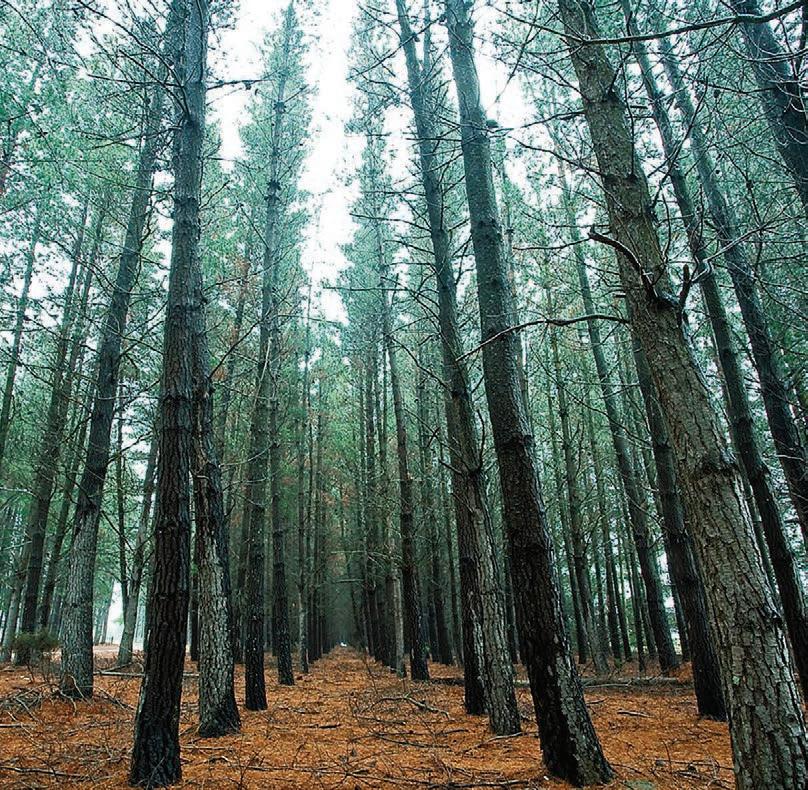

could earn hundreds of thousands of credits worth tens of millions of dollars for their participant owners, provided they make an application to join the scheme by 31 December 2022, the statutory deadline,” Harris said.
She is calling for a timeline extension.
Oliver Hendrickson, the director of forestry and land management with the NZ Forest Service, said the registration process has been streamlined
“The hectares submitted in 2022 are a more than four-fold increase compared to the same time last year.”
GreenXperts has written to the Ministry for Primary Industries (MPI), voicing their displeasure.
Harris said the significant increase in ETS applications should have been foreseen by officials given the rapid rise in carbon credit values since early 2021.
Staffing issues are the responsibility of management, not a policy problem.
She warned that the reduced supply of carbon credits to the ETS will accentuate an existing liquidity issue and make it more difficult and expensive for NZ to meet its emissions reductions obligations under the Paris Climate Agreement.
It will also damage the credibility, reliability and reputation of the NZETS and MPI, and could force some applicants to seek compensation from the Crown.
Hendrickson said requests have grown in part due to the ending for the five-year mandatory emissions return period but also because of changes to the ETS.
Officials expect to have processed more than 198,000ha in the past 12 months and, in total, have over 500,000 ha of forest land entered into the ETS.
“It took over a decade for just over 300,000ha to be registered in the ETS,” he said.

“This year nearly 200,000ha will have been assessed, showing the steep increase in demand and the need for the Forest Service to quickly react to this increased demand.”
In addition to processing new land applications, in the first six months of the year the New Zealand Forest Service processed 893 Voluntary Emissions Returns, resulting in a net allocation of 6,488,659 NZUs (emissions units) to forestry participants worth over $524 million at the current price.
The resulting 6.4 million tonnes of sequestration is the equivalent of the annual emissions from 2.3 million vehicles.
Stop BVD in its tracks. The most devastating impacts of BVD are on pregnant cattle and their unborn calves, so protecting heifers and cows from infection during mating and gestation is critical. Protect the health of your herd by keeping your herd BVD free with Ultravac BVD®. A premium foetal protection vaccine proven in New Zealand.1 See your vet today. • Decreased milk production • Poor conception rates • Persistently infected calves • Abortions, mummies, and stillbirths R Packianathan, WJ Clough, A Hodge, DK Holz, J Huang, GL Bryant & C Colantoni (2017): Prevention of fetal infection in heifers challenged with bovine viral diarrhoea virus type 1a by vaccination with a type 1c or type 1a vaccine, New Zealand Veterinary Journal, DOI:10.1080/00480169.2017.1291376. Zoetis New Zealand Limited. Tel: 0800 963 847; www.zoetis.co.nz. ULTRAVAC is a registered trade mark of Zoetis Inc. or its subsidiaries. ACVM No. A10730: RVM; Available only under Veterinary Authorisation. A BVD
outbreak could cause:
8 FARMERS WEEKLY – farmersweekly.co.nz – October 31, 2022 News8
SIGN ON: Carbon consultants are calling for an extension of the December 31, 2022 deadline to join the ETS, to avoid “hundreds of properties throughout the country” missing out on “credits worth tens of millions of dollars”.
Neal Wallace
NEWS
Carbon credit
The hectares submitted in 2022 are a more than four-fold increase compared to the same time last year.
Oliver Hendrickson NZ Forest Service
MPI backs bid for top US certification
MARKETS
Sheep and beef
THE Ministry for Primary Industries is backing a project to help more New Zealand sheep and beef farmers capture the premium US market.
MPI has committed $142,480 over two years through its Sustainable Food and Fibre Futures fund towards a $356,200 project with Lean Meats Limited (trading as Atkins Ranch).
It aims to scale up the number of verified lamb producers that meet the regenerative certification requirements of the Savory Institute’s Land to Market Programme in the United States.
New Zealand-owned company Atkins Ranch has been a partner of the Land to Market Programme since 2019.
It sells premium grass-fed lamb into the US market and has supply contracts across five regions of New Zealand.
The company has been piloting regenerative farming practices since 2019 with a core group of 23 farmers, and this is now expanding to more than 70 farms.
“I see regenerative agriculture as leaving the land in a better state for future generations,” Atkins Ranch chief executive Pat Maher said.
“That includes improving soil health, minimising tillage, and encouraging biodiversity rather than monocultures.
“Land to Market is the world’s first verified outcomes-based regenerative certification. It requires partners to undertake a range of measures annually, which cover soil health, biodiversity, water infiltration and ground cover.
“Atkins Ranch was one of the first companies in the world to join the Savory programme. Part of the reason the programme piqued my interest is that I believe we already have a competitive advantage over other countries due to the way we farm in New Zealand. By showing that we meet internationally recognised regenerative agriculture standards we’re able to access high-value markets overseas.”
Lifelong farmer Stuart Ellingham was one of the first farmers to sign up to the pilot.

He is managing director of Horizon Farming, which comprises
To meet Savory’s regenerative certification requirements we just needed to tweak a few things, such as not undertaking full tillage cultivation, and being more aware of the soil.
Stuart Ellingham Horizon Farming
eight farms on 10,000ha in Hawke’s Bay, and has a degree in agricultural commerce from Lincoln University.
Salmon swim upstream to new inland farm
“I was sceptical at first,” Ellingham said.
“However, I saw it as an opportunity to put the microscope on New Zealand to see how we stack up under the Savory Institute’s measurement systems.
“With conventional farming practices in New Zealand I believe most farmers are undertaking continuous improvement anyway.

To meet Savory’s regenerative certification requirements we just needed to tweak a few things, such as not undertaking full tillage cultivation, and being more aware of the soil.”
MPI’s director of investment programmes, Steve Penno, said
the project is a good fit with the goals of the government and food and fibre sector’s Fit for a Better World roadmap, which aims to improve productivity and reduce the impacts of food production on the environment.
“Consumers are increasingly willing to pay a premium for meat produced regeneratively, and sustainability is taking a front seat more and more in the way we produce food,” Penno said.
“This project will help open up a new opportunity for more of our farmers to demonstrate the good work they’re doing – and with a few tweaks they can be rewarded for it.”
MOUNT Cook Alpine Salmon intends to double its fish production by pioneering a $16.7 million land-based aquaculture facility in either the Waitaki or Mackenzie districts.
The company has produced king salmon from cages in hydro canals for the past decade and the new facility will take six years to build, chief executive David Cole said.
The project was launched by company chair Sir Bill English with Fisheries Minister David Parker attending.
The plan is to at least double annual production to between 6000t and 8000t and to aim for zero waste, with all water returned to its source after filtering in wetlands or a wasabi farm.
The government has committed $6.7m from the Sustainable Food and Fibre Futures Fund, administered by the Ministry for Primary Industries.
Mount Cook Alpine Salmon wants to introduce sockeye salmon alongside its king salmon species.

Cole said the plan is to create a sustainable 1000t hybrid structure that will use a part flow-through system to emulate the unique conditions of the glacial-fed canals.
The facility will optimise energy use through gravity-fed water and integrating renewable and lowenergy solutions.
Being land based it will have greater opportunities for automation and monitoring systems in an all-weather working environment.
The private company was founded in 2009 and one of its largest shareholders was the late Sir Eion Edgar until his death in 2021.
Long-standing LIC board member retires

Staff reporter PEOPLE Agritech
LONG-SERVING LIC director
Gray Baldwin has retired from the board after 10 years serving the co-op.
At its annual meeting in Palmerston North, LIC chair Murray King thanked Baldwin for his contribution.
“Gray has been an outstanding director, always representing what’s good for our farmers and supporting what’s best for the co-operative. We have been very fortunate to have his expertise on the board for the past 10 years,” King said.
Shareholders elected Corrigan
Sowman as their new director, resulting in even representation of farmer-elected directors between the two islands (three North Island; three South Island) as voted for by shareholders in 2020.
Baldwin said it had been a pleasure to be part of the co-op and serve his fellow farmers during such a transformative time.
“LIC is a fantastic co-operative with a great heart and future, and a butt-kicking balance sheet.
“The co-op I’m leaving is a more efficient and lean machine than when I started 10 years ago, and it’s one of the strongest companies I govern.”
9 FARMERS WEEKLY – farmersweekly.co.nz – October 31, 2022News 9
Staff reporter
NEW LEAF: New Zealand can access high-value markets by meeting regenerative certification requirements such as not undertaking full tillage cultivation.
Hugh Stringleman
NEWS Fisheries
FULL CYCLE: The aim is to return all water used in the land-based salmon farm to its source after filtering in wetlands or a wasabi farm.
TRANSFORMATIVE: Gray Baldwin has stepped down after 10 years as a director of LIC.
NZ Merino continues record-busting run



 Hugh Stringleman NEWS Wool
NEW ZEALAND Merino
Hugh Stringleman NEWS Wool
NEW ZEALAND Merino
has reported earnings growth of 8% to $6.9 million before interest and tax, from which it will pay farmer-shareholders 41.6c a share.
The dividend will pay out 50% of the after-tax profit and it represents a yield of 6.1% on the year-end share price of $6.87.
Since NZ Merino (NZM) listed on the Unlisted Securities Exchange (USX) in late 2020, the share price has risen steadily from $3.80 to the current $6.75 and the market capitalisation is $35.5m.
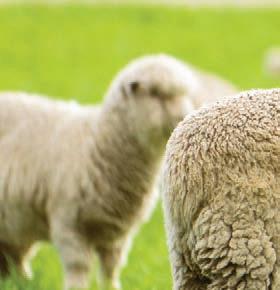


A share capital raise of $10m prior to listing added 2.6 million shares and the number now stands at 5.3 million.
A concurrent share buyback and cancellation absorbed $2.3m and after costs the net share capital raised was $7m.
The annual report for the 2022 financial year to June 30 said that
135,000 bales were sold and that was 30% increase on the previous year.
Fine wool bales increased by



39% to 79,000 and strong wool bales were up 19% to 56,000, and significant volumes of wool were procured in Australia and South
Massey shines a light on mixed solar-sheep farming
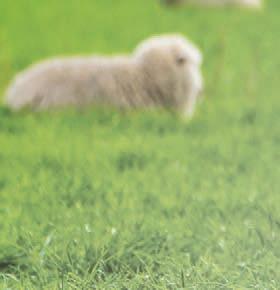
 Charlie Williamson TECHNOLOGY Solar
Charlie Williamson TECHNOLOGY Solar

SOLAR farms can often address one issue, the need for renewable energy, while creating another –the loss of productive farmland.
This dilemma has inspired a Massey University project that aims to understand the scope for solar farming to co-exist with sheep farming – ultimately giving the farmer more sources of income from the same land.
The project team, led by professors Danny Donaghy and Paul Kenyon from Massey’s School of Agriculture and Environment, will measure pasture composition, growth and quality around and under solar arrays.
“Solar farming in conjunction with sheep grazing is an exciting mixed system allowing farmers to obtain two income streams while ensuring the land area is still productive,” Kenyon said.
The overall aim of the project
Solar farming in conjunction with sheep grazing is an exciting mixed system allowing farmers to obtain two income streams while ensuring the land area is still productive.

is to provide data on pasture production and quality, which can then be used to model sheepcarrying capacity or various sheep systems.

Using this information, economic analysis can be undertaken to determine the income potential of both solar energy production and sheep productivity on a per hectare basis.

“Due to the structure of the arrays, the amount of shading and light each area of land receives will differ each day and across seasons,” he said.
“Therefore, it is important that within a solar farm all these areas are measured across seasons to allow for a total picture of pasture production and therefore animal carrying capacity.”
There is also the risk that
Africa to complement the NZ supply.
Total revenue was up 44% to $197m, contract revenue being $153m and auction revenue $29m.
NZM chief executive John Brakenridge said FY22 was the third consecutive year of record profit. Over the past five years the compounded annual growth rate in earnings had been 13%.
“Our continued improved performance is founded on a clear strategy with strong grower and customer focus and execution.




“The foundation of our ZQRX regenerative initiative, which was set out pre-covid, has resonated strongly with the market, our brand partners, and our growers and has driven the very good growth in demand seen during the year.”
He expected wool volumes to continue to grow in 2023 and the company’s presence in Australia to deepen.
The active outdoors and lifestyle market was strong for merino wool, with brands like Helly Hansen, Icebreaker, Smartwool

and Mons Royale experiencing record growth.
Stronger wools sold well to Bremworth, Glerups and Swanndri and innovations from Shear Edge included the Torpedo 7 Kakapo Kayak with 35% strong wool fibres in polyethylene.
The ZQRX sustainability brand has 500 growers signed up, half of whom have had their initial baseline assessment against the regenerative index.
Brakenridge is a 9% shareholder and about 450 of the company’s 550 shareholders hold 80% of shares in total, in amounts under 10,000 an individual.
One


shading, especially in the more humid periods of the year, could result in fungal growth, with potential health issues such as facial eczema becoming an issue. This will be monitored.
Shading may also result in species compositional changes, with the potential for weed species to become prevalent,

or even dominant. This is also being monitored, as the level of weed species affect pasture production as well as quality, both of which have an influence on sheep-carrying capacity and performance.






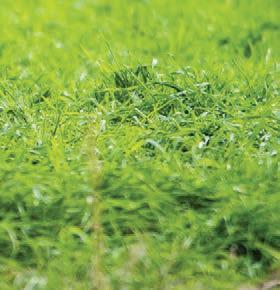




Initial results from the study will be available in a year’s time, Massey University said.

IT’S BACK!
of New Zealand’s most trusted brands in flystrike protection has returned. Ask for Vetrazin from your preferred rural Veterinary clinic. Vetrazin® Spray-On Registered Pursuant to the ACVM Act 1997, No. A005717 Vetrazin® Liquid Registered Pursuant to the ACVM Act 1997, No. A005835 10 FARMERS WEEKLY – farmersweekly.co.nz – October 31, 2022 News10
BIG SOFTIES: Fine wool bales increased by almost 40% in the year to June 30, with significant amounts of wool being procured in Australia and South Africa to complement New Zealand supply.
Our continued improved performance is founded on a clear strategy with strong grower and customer focus and execution.
John Brakenridge New Zealand Merino
WHERE MAY SHEEP SAFELY GRAZE: A new Massey University study will explore the potential for combined solar and pastoral farming in New Zealand.
Paul Kenyon Massey University School of Agriculture and Environment

SUMMER IS IN, LET THE SHOPPING BEGIN. 30NOV -3 DECfieldays.co.nz BUY TICKETS 11
Fonterra fires back at DIRA bill critics
FONTERRA’S capital restructure and the enabling legislation will give the company a fair go at competing for a sustainable supply of New Zealand milk on more equal terms, the cooperative says.
Chair Peter McBride presented Fonterra’s submission to the

Primary Production Committee of Parliament on the Dairy Industry Restructuring (Fonterra Capital Restructuring) Amendment (DIRA) Bill.
He said an internationally competitive, farmer-owned co-operative of scale is in the country’s best interests.
The new flexible shareholding capital structure will help to level the playing field with foreign-backed competitors in an environment of declining NZ milk
production.
McBride said the reduced minimum required shareholding is intended to make it easier for new and young farmers to join the co-op, and for existing farmers to stay.
He pointed out that most of Fonterra’s competitors do not require their supplying farmers to own shares.
Flexible shareholding will put more emphasis on company performance and innovation,
Fonterra cuts collection forecast by 1%

VOLATILE spring weather has seen Fonterra revise its milk collection forecast for the 20222023 season from 1495 million kilograms of milk solids (kgMS) to 1480 million.
Fonterra chief executive Miles

Hurrell said weather conditions in parts of New Zealand have caused a slow start to the season.
“The variable weather conditions which caused a slow start on farm have continued, contributing to lower collections through September and early


October, which has caused us to further revise our collections forecast.
“As a result, we have revised our 2022-2023 forecast down 1% to 1480 million kgMS.”
Fonterra last reduced its 20222023 milk collections forecast in early September.
creating a structural tension to deliver both a competitive return on farmers’ invested capital and a sustainable milk price.
Fonterra claimed a strong mandate from its farmer shareholders to make the capital changes, knowing that there would be a significant impact on the value of shares.
The bill will amend the DIRA to remove the legal risk associated with capping the size of the Fonterra Shareholders’ Fund (FSF).
“The bill introduces additional measures to mitigate the perceived risks arising from our new capital structure,” McBride said.
“Many of the proposed DIRA amendments seem to address perceptions around the transparency and independence of the milk price regime.
“We object to inference that the co-op or any individuals involved are somehow gaming the system.




“In fact, Fonterra has been advocating for greater transparency of milk prices across the industry in all of our DIRA submissions.”
All dairy companies should be required to publish details of their milk prices to address the current imbalance of information available to farmers and support contestability in milk supply, he said.
FIELD GOAL: Reacting to criticism that the DIRA bill tilts the playing field in Fonterra’s favour, chair Peter McBride says the new structure will in fact help level the playing field with foreign-backed competitors and is in NZ’s best interests.

Fonterra said that amendments to the majority independent Milk Price Panel and the Commerce Commission review process are unnecessary and should be removed from the bill.
McBride said farmers and unit holders are stuck between two capital structure regimes and he wants expedited legislation to see the DIRA amendments passed and in effect by the end of 2022.
The pasture landscape is


BBG0037 NEA12 Pre-Xmas_AgriHQ DPS-545x190.indd 1 12 FARMERS WEEKLY – farmersweekly.co.nz – October 31, 2022 News12
Staff reporter
LESS MILK: Fonterra last reduced its 2022-2023 milk collections forecast in early September.
Hugh Stringleman
NEWS Dairy
5G call means full speed ahead for rural
 Richard Rennie TECHNOLOGY Communication
Richard Rennie TECHNOLOGY Communication
RURAL cell phone users are likely to be among the biggest winners from the government’s decision to allocate rather than auction the new 5G mobile spectrum.
Mike Smith, spokesperson for Wireless Internet Service
Providers (WISPA), has hailed the government’s decision to forgo the millions of dollars it could have made in a spectrum auction for a more rapid, lower cost 5G infrastructure as forward-thinking – and likely to put the tech into the hands of many communities far earlier than anticipated.
He said the allocation of spectrum will include 20% to iwi and a similar amount allocated across regional spectrum. This will include WISPA members, with the remainder going to the large mobile network operators, namely Vodafone, Spark and 2degrees.

“The key thing is this is a completely different approach,” Smith said.
“Government will be putting some expectations around regional rollout of 5G in return for not charging for the spectrum. It also gives industry a far more
“This is a new way of putting the spectrum out there and the government should be applauded for making the call on this, it is an investment in long-term, 20-yearplus technology.”
The rollout will include having the network provider Dense Air working with the government to develop 5G services in underserved areas using a networking solution that provides band access.
Smith said once the regional spectrum is announced, WISPA members – which include about 30 wireless providers – are available to use the allocation in combination to ensure 5G rollout does not set back WISPA’s ability to offer high-speed connectivity alongside it.
Mike Smith WISPA
affordable way to roll out 5G without the significant upfront spectrum cost you would usually expect.”
He said industry estimates based on overseas auctions are that the auction cost of the entire New Zealand 5G spectrum could have been as high as $300 million.
“There has been an ongoing concern from our organisation that too much focus on 5G mobile would limit the benefits of this band for regional NZ,” Smith said.

The lure of 5G usually lies in getting volumes of users on board, and these are typically found in larger urban areas. This initiative will ensure that this is not the key driver.
Some fast-growing rural areas,


such as the Selwyn district in Canterbury, are likely to be among the first beneficiaries of the rollout, Smith said.


“The 4G is well loaded up and Selwyn is a hotspot. I would suggest it is an area that will see



5G investment sooner.”
Smith said he believes the rollout will ensure that the more than 75,000 homes and businesses that WISPA members are connected to will be better served over coming years.

CHANGING...



20/10/22 10:10 AM 13 FARMERS WEEKLY – farmersweekly.co.nz – October 31, 2022News 13
SPEEDY: WISPA spokesperson Mike Smith says the government’s decision to allocate rather than auction the new 5G spectrum is a bonus for smaller rural towns and centres.
Government will be putting some expectations around regional rollout of 5G in return for not charging for the spectrum. It also gives industry a far more affordable way to roll out 5G without the significant upfront spectrum cost you would usually expect.
GHG sums put 23,000 farmers in hot seat


from between 2% and 10%.
THE government estimates 23,000 farmers will have to account for their greenhouse gas emissions each year from 2025.
The statistic is included in its response to He Waka Eke Noa, where it also says that an alternative system would require 80 processing entities to collect a levy based on farm production.
Cabinet papers released by the government reveal that the threshold for farmers or growers to report their emissions is an annual proxy equivalent to 200t of carbon – more than 500 stock units or over 50 dairy cows, or a farm that uses 40t of synthetic nitrogen.
The modelling shows that the GHG targets can be met, but some land use change will occur, reducing production levels and hence net revenue for the agricultural sector.
report
Farmers and growers will each year have to file information into a centralised calculator stating their farm area, livestock numbers, livestock production and nitrogen fertiliser use to determine their emissions liability.
Farmers will be charged from $2.86 to $3.93/tonne for methane and $10.86/tonne for nitrous oxide. Using 2030 as a baseline, modelling of various scenarios in a report by the Ministry for Primary Industries (MPI), Impact of Climate Change Mitigation Policy, shows that under the government’s preferred pricing scenarios, the sheep and beef sector consistently shows the biggest reduction in net revenue, from 17% to 32%.
This is followed by the dairy sector, 7% to 10% reduction, while arable and horticultural net revenue is expected to increase
The various farm split-gas levy options would reduce greenhouse gas emissions by between 14.4% and 15%, but this is expected to significantly reduce the area of sheep and beef farming.
It estimates the sheep and beef area could fall by between 3% and 17.8% and dairy by between 2.3% and 3.1%.
Horticulture and arable, however, could grow by 3% to 6%. The area under forestry is expected to increase by between 2% and 3.9%.
Milk solid production would fall between 4% and 5%, lamb 16% to 20%, wool by 16% to 18% and, depending on the final pricing scenario, beef could grow by 8% or fall 14%. Venison would fall 13% to 17%.
In 2020-21 New Zealand exported 480,618t of beef, 406,577t of sheep meat, 104,542t of wool and 14,545t of venison, and processed 1.947 million kg of milk solids.
The potential impact on beef production is mixed.

“Beef production increases in some scenarios, because more cost-effective mitigation technologies are assumed for beef cattle compared with sheep, which would allow a degree of switching from running sheep to running beef within the model,” the report states.
The modelling assumes no
uptake of farm-system changes and emission-mitigation practices, and no cost-effective mitigation technology.
The government said its emissions reduction plan will help achieve its target of netzero emissions for long-lived greenhouse gases (GHG) by 2050, a 24% to 47% reduction below 2017 in biogenic methane emissions by 2050, and a 10% reduction below 2017 in biogenic
methane emissions by 2030.
“The modelling shows that the GHG targets can be met, but some land use change will occur, reducing production levels and hence net revenue for the agricultural sector,” the MPI report states.
Primary sector groups failed to get increased vegetation classes recognised as on-farm sequestration in any agricultural emissions pricing system.
This was rejected by the Climate Change Commission (CCC) as it would increase pricing complexity and would be difficult to implement and monitor.
The MPI report estimates that in 2018, pre-1990 natural forests removed 1796 kilo-tonnes of CO2-equivalent each year, but this is not recognised by the NZ emissions inventory because the vegetation pre-dates 1990.
The government proposal will not recognise perennial cropland, scattered forest, shelter belts, woodlots and tree-lots up to 1ha, or indigenous vegetation established on or up to 1 January 2008.
It proposes to acknowledge managed indigenous vegetation that increases carbon sequestration from 2025, provided stock is excluded.
It will also recognise riparian margins planted after 2008 provided they meet management and stock exclusion criteria.
There was also dispute between primary sector groups and the CCC over the pricing of synthetic fertiliser, which makes up 6% of all agricultural emissions.
The commission wants fertiliser emissions to be included in the NZ Emissions Trading Scheme along with other long-lived gases, because it is economically efficient to do so.

The government is still to make a decision on how it will be priced.
HWEN outcry disappointing, says minister
Neal Wallace POLITICS He Waka Eke Noa
AGRICULTURE Minister Damien O’Connor says he is disappointed at the response of some primary sector leaders in their feedback on He Waka Eke Noa.


He said his disappointment stems from his view that the government’s response was largely consistent with the sector’s original HWEN report to the government.
He described criticism from sector leaders as “slightly misleading for farmers looking for guidance”.
O’Connor acknowledged that it had been difficult for sector leaders to achieve consensus on a plan to reduce greenhouse gas emission, and he urged those who had issues with the government’s response to the HWEN plant to read its document.
He said that would reveal that the two documents are more closely aligned than has been
acknowledged by some sector leaders. They will form the basis for a sector-wide agreement, he said.
O’Connor said he doubts the sheep and beef sector will shrink 20% as the government’s own modelling forecast in its response to HWEN.
“I don’t see that reduction happening at all,” he said.
He said farmers have continually confronted challenges by innovating and making changes, and he cannot see why
sheep and beef farmers will not do that again to reduce agricultural greenhouse gas emissions.
He acknowledged that the recent growth of forestry and carbon farming is not ideal and said the government is addressing that. But land use is always changing and new uses, other than forestry, will evolve, he said.
O’Connor urged farmers to read the government’s report and either make a personal submission or contribute to those being prepared by the sector.
Dung is a free gold mine of fertiliser and carbon, if buried. There is only one way to do that rapidly and sustainably. AVAILABLE NOW Boost Your Profits. Improve Water Quality. Contact us Dung Beetle Innovations Shaun 021 040 8685 shaun@dungbeetles.co.nz For more information or to order online go to www.dungbeetles.co.nz LK0113016© Farming For Our Future Generations 14 FARMERS WEEKLY – farmersweekly.co.nz – October 31, 2022 News14
Neal Wallace NEWS
He Waka Eke Noa
BEEFING UP – OR DOWN: Depending on the final pricing scenario, beef could grow by
8% or fall 14%.
MPI
Open Farms names the day
Staff reporter
GET out your gumboots –


New Zealand’s national open farm day is set for Sunday March 12 2023.
Now in its third year, Open Farms reconnects New Zealanders with land, food and farmers through a nationwide series of open farm events.
“It’s about getting urban Kiwis back out on-farm to experience where their food starts,” founder Daniel Eb said.
“In the two years we’ve run Open Farms, more than 7000 people have visited 82 farms – from sheep and beef stations, to permaculture orchards, dairy farms, honey producers and more.”
The 2022 event was delayed, and Open Farms 2023 kicks off with a call for farmers to sign up to host an open day.
“There is no lack of interest from urban Kiwis to get on farm,” Eb said.
“We book out half of our capacity in 24 hours and more than 80% of events are overbooked. To give
more Kiwis a chance to reconnect with their rural roots, we’re asking more farmers to host with us.”
Ahead of the 2023 event, Open Farms has made changes to make hosting easier, including a private event format for first-time hosts and a subsidy to help cover farmers’ time.
“We made these changes to help reduce some of the anxiety around hosting and show farmers that we value their contribution to the project,” Eb said.
“We can’t do it without them.”
After two years of running the event, the Open Farms team have seen the impacts of on-farm experiences first-hand.
“There’s a mindset piece –farmers feel a renewed sense of pride when seeing their farm through fresh eyes or sparking a passion for food production in others. There are tangible economic benefits to hosting too. We’ve seen farmers use their open day to build team morale, hire new people or market a direct-tocustomer business model.”
To host an event with Open Farms, farmers sign up on the website, set and track their
visitor numbers and download a handbook covering activity ideas, checklists and more.
Open Farms supports farmers to plan their day, manages all visitor marketing and registrations and provides a “box of kit” for the day.
“When it comes to bridging the urban-rural divide, there is nothing more effective than an onfarm experience,” Eb said.
Across two post-event research projects, visitor feedback is clear – people feel more connected to farmers, view sustainability in farming more positively and better understand the complexities of farming after an open day.
“If nothing else, it’s just good fun – hosts and visitors rate their open farm experience 4.6 out of 5 and 91% of visitors are keen to visit again,” Eb said.
Sam McIvor, CEO of Beef + Lamb New Zealand, said that creating opportunities for New Zealanders to connect with farming and food production has never been more important.
“The primary sector is being called on to step-up and lead New Zealand’s covid recovery. People are looking for ways to support sustainable farming and our farmers also want to connect and demonstrate how we grow the nation’s food and manage our





environment. Having a platform to connect customers and producers together is critical – that’s why we’ve supported Open Farms since its inception and continue to encourage sheep and beef farmers to get involved.”
Open Farms is backed by three partners, Beef + Lamb New Zealand, the Our Land and Water National Science Challenge and the Ministry for Primary Industries’ Sustainable Food & Fibre Futures fund.
MORE: For more information, prospective farmer hosts and visitors can visit www.openfarms.co.nz
endophyte


Available exclusivelyin ShogunNEA12 forautumn 2023. BBG0037 NEA12 Pre-Xmas_AgriHQ HP-262x190.indd 1 20/10/22 10:10 AM 15 FARMERS WEEKLY – farmersweekly.co.nz – October 31, 2022News 15
GOOD REVIEWS: More than 90% of Open Farm visitors say they are keen to repeat the experience.
PEOPLE Community
Winter forage grazing a washout for soil erosion
Neal Wallace NEWS Soil
NEW research has found that a disproportionate loss of soil comes from winter forage grazing, concluding that where they can, farmers should consider alternative wintering systems.
Research for Our Land and Water looked at the national impact on soil loss from winter forage grazing and found that while the practice accounts for less than 1% of land area, it is responsible for 15% of soil loss within some catchments.
Chief scientist with Terra Informatics Dr Mitchell Donovan said this loss of soil – or, as he prefers to call it, natural capital –has environmental and financial costs, and may also affect future yields from those paddocks.

A geomorphologist, Donovan studies earth-surface processes and landform evolution. He said rather than trying to reduce erosion through reactive management such as detainment bunds and sediment traps, farmers who can, may want to consider preventing erosion by shifting away from wintering practices altogether.

However, “I’m not a farmer and I recognise this is not necessarily feasible for all farmers given their location and ability to grow grass in winter”, he said.
The problem is caused by several issues: a mixture of bare ground cover, damaged and pugged soil following grazing, as well as slope and rainfall.
Donovan said the erosion risk is particularly concerning when
damaged soil is left exposed after forage crop grazing.
Buffers and riparian planting can prevent soil loss entering waterways, but Donovan said this won’t stop soil from being lost or eroded within a grazed paddock.
Riparian planting sieves nutrients and other elements, limiting the amount entering waterways.
“There is literally no debate that this reduces soil from entering waterways,” he said.
The research calculated soil loss as a function of seasonally variable rainfall erosion, ground cover, soil properties, grazing practices and terrain information within two catchments across New Zealand.
The modelling captured longterm rainfall and land-use conditions, but not year-to-year variability.
It also found that soil loss from various land use in two river catchments, the Clutha in Otago and Waikato, was not uniform.
“These analyses generally indicate that broad and sweeping statements about specific land use classes are generally unfounded unless specific context and conditions are met.
“Exceptions to this are forage crop paddocks, landslide scars, and to a lesser degree, exotic forestry land, which had relatively high surficial erosion rates.”
Researchers concluded that while individual forage crops are not a significant contributor to overall sediment yields within a catchment due to the relatively small area they cover, conditions of these paddocks are such that even if 1% of land is in forage crops, they could account for 10-
Winter-forage crop paddocks represent a ‘low-hanging fruit’ when considering options for reducing sediment loads in catchments.
Dr Mitchell Donovan Terra Informatics
20% of surface erosion across the catchment.
“Thus, when considered as a whole, winter-forage crop paddocks represent a ‘low-hanging fruit’ when considering options for reducing sediment loads in catchments.”
The study looked at the impact of specific land use in the two catchments.
Exotic forestry in the Waikato catchment accounts for 17% of land cover and contributes 22% of soil loss.
While natural or native forests occupy over 20% of the land in the Waikato catchment, it contributes only 15% of soil loss.
It showed proportionately less impact than winter grazing, but it suggests that despite high ground cover for part of a 30-year cycle, forestry land may contribute substantially to long-term sediment loads when it is exposed following harvest.
In the Clutha catchment, pastoral grasslands occupy 44% of erodible land area, but contribute only 29% of surface erosion.
“This likely reflects a combination of lower rainfall erosivity, lower soil erodibility and relatively lower grazing
Category champs named as top Rural Women
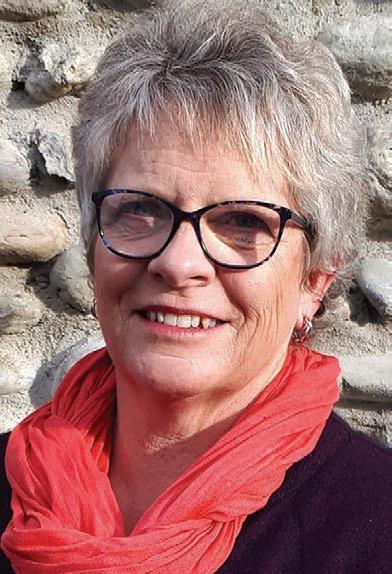 Annette Scott PEOPLE Awards
Annette Scott PEOPLE Awards
THE category winners of the Rural Women New Zealand business awards 2022 have been recognised ahead of the overall supreme winner announcement next month.
Rural Women NZ (RWNZ) and Premier Partner NZI announced the seven category winners as part of the International Day of Rural Women on October 15.
“There is no better way to recognise the International Day of Rural Women than by celebrating the incredibly innovative and entrepreneurial women who own and operate businesses in rural and regional Aotearoa
New Zealand,” RWNZ national president Gill Naylor said.

“The winners of the seven categories showcase the phenomenal range of enterprises undertaken by rural women from all around the country.
“The calibre of this year’s entries indicates that living and working rurally need not be an impediment to achieving excellence across a wide range of sectors,” Naylor said.
Christina Chellew, representing NZI on the judging panel, said it is a privilege to be a judge and incredibly inspiring to learn about the entrants’ enterprises.
“Some of the standout features of this year’s award winners are the resilience, adaptability and initiative they have shown when
faced by the challenges of the last two years and their commitment to the wellbeing of their rural communities.
“It is always extremely difficult to select our category winners and this year especially so, as there were so many excellent entrants,” Chellow said.
Amelia Dunbar of Darfield took out the creative arts category with her rural entertainment business The Bitches’ Box and her at-home artworks Amelia Guild Art.
The emerging business was won by Kate Cullwick of Waipukurau with her online homewares business Foxtrot Home, while Jody Drysdale of Gore took out the innovation category with Hopefield Hemp, growing and producing hemp seed oil.
The Love of the Land was awarded to Dianne Downey of Wairoa with The Limery, home to 4000 lime trees producing 100% citrus products and juices.
Whānau Consultancy Services’ Serena Lyders of Invercargill won the Rural Champion category, and the Bountiful Table category was won by Westland’s authentic NZ food experience The Craypot of Dayna, and Nicole Buchanan at Jacksons Bay.
The rural health and wellness award went to Sarah Martelli of Reporoa for Strong Woman.
Presentation of the awards to the category winners and the announcement of the overall supreme award winner will take place in Wellington on November 18.
intensity compared to the Waikato catchment,” Donovan said.
The Clutha catchment has relatively high erosion contributions (53%) from ungrazed natural grasslands, which occupy only 35% of the catchment’s erodible land area.
This land class is often located at high elevations on steep lands with highly erodible soils and is often left natural due to the high rates of erosion.
But the catchment does have relatively high contributions from winter forage cropping as well as landslides.
“These analyses generally indicate that broad and sweeping statements about specific land use classes are generally unfounded unless specific context and conditions are met,” Donovan said.
16 FARMERS WEEKLY – farmersweekly.co.nz – October 31, 2022 News16
BANK ON IT: Chief scientist with Terra Informatics Dr Mitchell Donovan said there is ‘literally no debate’ that riparian planting reduces the amount of soil entering waterways.
RURAL ROCKS: RWNZ national president Gill Naylor says the calibre of the entries shows that living and working rurally need not be an impediment to achieving excellence.
1
1
2
STRETCH YOURSELF:
2
3
Mount

1
3
4

This is the two-year store steer section at a recent

Have a look at the table and see if
can
the following questions.
1 How many different breeds of cattle were offered?



2 How many Angus steers were there collectively (all together)?

3 Cond stands for condition. In this instance what does condition mean?



4 What does the condition M/G stand for?







STRETCH YOURSELF:

1 Which cattle made the top $/kg

2 How much was this above the similarly
3 Why could Hereford/Friesian

in medium







considered
be

4 What are the characteristics of the top

5 Which cattle


Are you a parent or teacher and want to receive AginED every week directly to your email inbox? Send us an email to sign up at agined@agrihq.co.nz Volume 129 I October 31st, 2022 I email:agined@agrihq.co.nz I www.farmersweekly.co.nz/agined
price?
weighted Angus?
steers
considered
condition while similarly weighted Angus be
good?
two breeds featured here?
made the lowest $/hd price? Why may these have been less popular? word puzzle
Stortford Lodge sale.
you
answer
LORNE PEAK STATION – EMBRACING CHANGE TO ACHIEVE SUSTAINABLE PROFITABILITY Follow this link to watch the episode https:// www.youtube.com/watch?v=yBj8AylZ5KI Matthew Taylor has experienced all of the ups and down of life, but he doesn’t let it put him off giving things a go. He has taken skills learnt in tertiary education and applied them to his business.
Where in NZ is Lorne Peak Station?
Where did Matthew study? 3 How big is Lorne Peak Station?
How many stock units do they winter?
What are the skills that Matthew learnt through tertiary education that can help him now with his work on the farm?
He credits a good TFO with helping him initially, what is a TFO? What do they do? 4 They took part in the Beef + Lamb Innovation Farms programme. What is this? 5 What crops have helped them to get better results from their stock? 6 How does the inclusion of irrigation on the property allow them greater versatility now and in the future? There are many forms of PRODUCTION throughout the food and fibre sectors but how many words can you make from using the letters from that word? There are three 8 letter words that can be made, can you get one? How many words can you make altogether?
Albert Grammer School (MAGS) in Auckland has had its own farmland to use for agriculture and horticulture students for the last 90 years. Recently ASB has donated the land to MAGS so that this can continue for many years to come.
How much land has been gifted to MAGS? 2 How many students at MAGS study agriculture as part of NCEA? STRETCH YOURSELF: 1 What facilities are offered on the farm? 2 What are some of the practical skills that the students learn on the farm?
Do some research where in Auckland in Mount Albert?
The article notes that ASB saw the opportunity to secure the future of the asset as a chance to bridge the urban-rural divide in NZ’s largest city. What do you think that they mean by this? Follow this link https://www.farmersweekly.co.nz/asbgives-150m-city-parcel-to-school-farm/?fbclid=IwAR0 Pmbf6mIVFcZDLhamXTcoz35UVO7_7leo2XTfZa8f85aF Suk0hmotdmwo to read the article and then answer the following questions. logyTechnologyTech We are all familiar with RAT and PCR tests. Now a company called Ampersand Technologies has developed DNA testing that promises to be able to accurately diagnose bacterial and viral diseases, without the expense and hold ups often incurred with centralised lab processing. 1 How did Ampersand Technologies come about? 2 What sorts of organisms can be identified by this technology? STRETCH YOURSELF: 1 What does LAMP stand for? 2 What tests for the horticultural sector have already been developed using this technology? 3 What are some possible uses for sheep and beef production? 4 Can you think of any other ways this technology could prove beneficial in the food and fibre sectors? 17
From the Editor
A better way to serve our sector
Bryan Gibson Managing editor
bryan.gibson@globalhq.co.nz
EDITORIAL
Neal
THE volume of academic literature, think pieces, TED Talks and LinkedIn posts written and recorded on the subject of leadership could probably fill several Olympic swimming pools.

neal.wallace@globalhq.co.nz
And many people believe our farming sector is dog-paddling in the shallow end.
Williscroft
colin.williscroft@globalhq.co.nz
Annette
annette.scott@globalhq.co.nz
Stringleman
hugh.stringleman@globalhq.co.nz

The past few years have seen groups like Groundswell and the Waka Adrift collective publicly and openly challenging the leaders who’ve been chosen to advocate for farmers. They claim those leaders haven’t fought enough and have capitulated to the whims of Wellington.
As always the truth, like everything in this world, is far less black and white.
We’re social creatures, and for the most part society works – but it’s messy.
Decision-making and strategy formation are constant processes of communication, explanation and compromise.
Many of the loudest voices that challenge the current leadership appear to think compromising is out of the question.
They want lines in the sand. They want to be listened to but don’t want to listen themselves.
So how do we fix this? How do we create a structure that gives us leaders who have the backing of those who put them there? How do we ensure the communication channels are there to keep everyone informed of the messy business of decision-making?
prejudices and historical grievances and focus on the facts of the matter.
If this is done well, reasonable people will accept that their opinions have been heard and considered, even if the outcome doesn’t please them.
Many of those challenging the current leadership are calling for more strength, more backbone.
But that’s a leadership style that was cast off some time ago, for good reason. Arrow leadership, as it’s often called, is not effective. It doesn’t empower anyone except the leader. Anyone who says it’s my way or the highway will inevitably find themselves alone on the road, the convoy having turned off in another direction.

There’s a better way, and it involves a little bit of everything you’ll read about in our special report in this week’s Farmers Weekly, starting on page 26.
Letters of the week
It’s the end of the affair, Fonterra
 Geoff Crawford Hikurangi
Geoff Crawford Hikurangi
TO MY dearest Fonterra.
It’s been three years now since you moved back home.
I was excited to have you home, but you have changed.
You are demanding and bossy.
I’m struggling to forgive you for the losses you brought down on our relationship.
It might be because as we age we don’t seem to need the comfort we sought in each other’s company.
The demands you made for nearly two years have cost us some of our hard-earned equity, but you don’t seem to care, and I find trying to love you very hard.
Living together over these last two years has also come with demands and standards that you learnt while trying to appease your lovers overseas.
You promised to be open and transparent, and said that the wealth would return, but I have learnt that working harder has no extra return.
As I watch my aging neighbours and friends disappear, I think of the love we once had and wonder, was it a dream?
I’m clinging to the promises of wealth and renewed love but you have got fatter with age and I’m struggling to support your habits.
My lust for your attention has diminished.
I’m not sure what our future holds.
What is clear is that we have a significant section of the farming community that feels alienated from the process.
Lincoln University’s Professor Hamish Gow has an idea about how to fix this existential issue. It’s a forum that brings stakeholders together at the very start of a process to air all of the dirty laundry and get the tough stuff out of the way early. At its heart is a facilitator, not a leader, someone who can remove the personalities,
Local communities and catchments need to be empowered to do what they do best – look after themselves and their environment.
The next generation of leaders need to be given space to thrive and we need to listen to them. They understand the world we live in right now better than we do.
And we need to build a structure that allows issues to be discussed openly, honestly and respectfully.
It’s the only way to avoid the fractured fix we find ourselves in now.
18 Editorial
FARMERS WEEKLY – farmersweekly.co.nz – October 31, 2022 Opinion18
REPORTS INSIGHT LIVESTOCK Subscribe from only $35* per month agrihq.co.nz/livestock-reports Make decisionsyoureasier Understand your opportunities and barriers with this weekly snapshot of store and slaughter prices, and international market trends. * Prices are GST exclusive Many of the loudest voices that challenge the current leadership appear to think compromising is out of the question. They want lines in the sand. Best letter WINS a quality Victorinox Hiker Knife Send your letter to the Editor at Farmers Weekly P.0. Box 529, Feilding or email us at farmers.weekly@agrihq.co.nz of theWeekLetter Farmers Weekly is published by GlobalHQ, PO Box 529, Feilding 4740. New Zealand Phone: 0800 85 25 80 Website: www.farmersweekly.co.nz Best letter each week wins a quality Victorinox Hiker knife WRITE TO The Editor, Farmers Weekly P.O. Box 529, Feilding EMAIL farmers.weekly@globalhq.co.nz • FAX 06 323 7101 So go on! Stick the knife in EDITOR Bryan Gibson 06 323 1519
Carmelita Mentor-Fredericks editorial@globalhq.co.nz
Wallace 03 474 9240
Colin
027 298 6127
Scott 021 908 400
Hugh
09 432 8594
Gerald Piddock 027 486 8346 gerald.piddock@globalhq.co.nz Richard Rennie 07 552 6176 richard.rennie@globalhq.co.nz Nigel Stirling 021 136 5570 nigel.g.stirling@gmail.com PUBLISHER Dean Williamson 027 323 9407 dean.williamson@globalhq.co.nz ADVERTISING Andy Whitson 027 626 2269 New Media & Business Development Lead andy.whitson@globalhq.co.nz Steve McLaren 027 205 1456 Auckland/Northland Partnership Manager steve.mclaren@globalhq.co.nz Jody Anderson 027 474 6094 Waikato/Bay of Plenty Partnership Manager jody.anderson@globalhq.co.nz Donna Hirst 027 474 6095 Lower North Island/international Partnership Manager donna.hirst@globalhq.co.nz Grant Marshall 027 887 5568 South Island and AgriHQ Partnership Manager grant.marshall@globalhq.co.nz Javier Roca 06 323 0761 Livestock Partnership Manager 027 602 4925 livestock@globalhq.co.nz Debbie Brown 06 323 0765 Noticeboard/Word Only/Primary Pathways classifieds@globalhq.co.nz Grant Marshall 027 887 5568 Real Estate Partnership Manager realestate@globalhq.co.nz Andrea Mansfield 027 446 6002 Salesforce director andrea.mansfield@globalhq.co.nz PRODUCTION Lana Kieselbach 027 739 4295 production@globalhq.co.nz Advertising material adcopy@globalhq.co.nz SUBSCRIPTIONS 0800 85 25 80 subs@globalhq.co.nz LK0107425© ISSN 2463-6002 (Print) ISSN 2463-6010 (Online) Printed by Ovato NZ Ltd Delivered by Reach Media Ltd
System of equity and fairness is our goal
Damien O’Connor Minister of Agriculture
ACOUPLE of years ago when the Zero Carbon Act was put in place, the government made a major commitment to our primary industries. We agreed to not automatically put them into the Emissions Trading Scheme (ETS) along with the rest of the economy.
Farmers and growers said at the time there needed to be a better way for them to pull their weight in reducing greenhouse gases.
We agreed with you.
The hard work done by the He Waka Eke Noa partnership since then to put together their proposed system has gone a long way to providing that solution.
We have accepted nearly all of their recommendations: a farmlevel levy, methane and nitrous oxide as split gases, re-investing the levy into the sector, remaining out of the ETS, and recognising on-farm sequestration.
We found outstanding issues in only two aspects of the proposal – who will set the price for split gases, and how sequestration is accounted for and managed.
Like any levy system, price
setting needs independence – hence ministers taking on this responsibility, based on advice from the Climate Change Commission.
On sequestration, both proposals recognise its complexity and we too believe more work is needed on it.
To be clear, we’ve not ruled out recognising additional on-farm sequestration. I’m committed to doing more work so there’s a fair system for farmers to claim the important work they’re doing to reduce the impacts of greenhouse gases.
We’ve not ruled out recognising additional on-farm sequestration.
I’m committed to doing more work so there’s a fair system for farmers to claim the important work they’re doing to reduce the impacts of greenhouse gases.
It just needs to be done in a way that is efficient and verifiable, and does not create an unworkable burden for farmers.
Those are the challenges that I want to hear people’s thoughts about via the consultation that is happening.
We want a system that has equity and fairness. This is our goal.
Like the partnership’s modelling before it, our response shows the red meat sector will be affected more than others. I do not, however, believe for one second that is where things will end up.
That’s because alongside the sector the government is investing hundreds of millions of dollars in climate research through a joint venture with key sector businesses to deliver emissions reductions tools into farmers’ hands sooner.
Climate change isn’t coming –it is happening now. For the past five years, the Ministry for Primary Industries’ adverse event fund has been blown out of the water by 900% due to floods and drought. For instance, we practically had a nationwide drought spanning 2019 to 2021 and we are also seeing tropical storms sweeping further south.
Talk of emissions leakage – which is production falling in New Zealand and rising in another country – or risking food security are things I simply don’t
subscribe to. The counterfactual is this: doing nothing will create greater food insecurity and price volatility.
The macroeconomic factors are there. The insurance and finance systems are already factoring in climate change. The trade environment is already moving. Our customers overseas are moving.
I’ve steadily assessed the technology coming onstream, the positivity with which exporters are approaching their markets, and the huge investment of $339 million we’re making, which includes the 50:50 joint venture with business that I referred to earlier.
I am confident that our sector
will beat others to reach our 10% methane reduction target by 2030, not because of the pricing of gases, but because of the reductions we will achieve through new technology and practices. Through this we will maintain our productivity and create value.
Why do consumers overseas seek out NZ products? It’s because they have a perception that “if it comes from New Zealand, it must be good for you”. That is brand value.
In the future they will say, “Because it comes from New Zealand it must be good for me and the planet.”
We can do this by continuing to work together.
Nadia’s Farm could use some regen training
Siobhan Griffin Retired dairy farmer and Regenerative grazing coach
THE Nadia’s Farm TV show, sadly, will make farmers far less likely to switch to regenerative farming.
The shocking weight loss of the couple’s ewes before tupping at Royalburn Station shows a glaring need for a holistic grazing plan.
I hope Nadia Lim and Carlos Bagrie get the training their livestock manager and team need around grazing, because their management clearly is not regenerative if it results in overgrazing over an extensive area.
By promoting unprofitable overgrazing and calling herself a regenerative farmer, Lim is undoing my six years of effort trying to explain to farmers in New Zealand that if they are building their topsoil with regenerative practices, they can grow more green vegetative grass, especially in the summer, and can lift profit. Yes, this is true even in a dry year because the planning is all about helping farmers recognise earlier when they need to be making necessary proactive decisions with whatever weather they get.
I farmed regeneratively for eight years in the United States after 10
years of organic and eight years of conventional farming. On our dairy farm in the northeastern US, conventional and organic farming did not result in soil improvement we could measure – but when we added mob grazing, we lifted our soil organic matter 3% in six
years by managing for optimally recovered green vegetative grass, not brown grass.
We used the tool of holistic planned grazing, which helped us avoid overgrazing and promote a succession towards more pasture and wildlife diversity. It cost a total of $70, which was the cost of the two Holistic Management books by Allan Savory and a few extra reels and standards. We gave up our diverse annual crops because they didn’t make money and lowered our soil organic matter.
To be fair I made all the mistakes Lim is making on her farm, 18 years ago, and I teach my clients to avoid these unprofitable practices.
A holistic grazing plan would have prevented much heartache for the livestock manager at Royalburn Station by giving her tools to avoid overgrazing and thus the embarrassing predicament the owners put her in by overstocking in a dry year. Hopefully, Lim sees this opinion piece and gets her team the regenerative farming tools they need – training in holistic management (HM).
John King has been a trusted HM educator in New Zealand for two decades. He and I have trained other farmers in Central Otago and all over New Zealand to create farm-specific grazing plans to help them time grazing for when the plants are well recovered


but still green and vegetative. Lim can see some videos of the outcomes, which include betterfed livestock, on my website at https://www.nextlevelgrazing. com/learning-center.
Diverse cover crops, while appropriate for arable farming, are an unnecessary expense on the pastoral farms that make up the bulk of New Zealand agriculture. I have not met a farmer who can show me that annual crops (including fodder beet) make money if all opportunity costs are accounted. Even diverse cover crops break guidelines around regenerative farming compared to perennial pasture including disturbing the soil (no till or not).
Most New Zealand pastoral farmers were on the right track without planting a single sunflower.
That all said, I love Lim’s recipes and until she learns how to get better farming outcomes (which I am sure will eventually happen), I recommend she stick to giving advice on cuisine.
Regenerating diverse human habitats that can provide abundance for people and wildlife is more important than ever. By greening NZ’s grassland landscape more in summer and building soil carbon, farmers here can be climate heroes, according to Dr Walter Jehne. He explains how, in a
natural grassland setting, livestock methane emissions are completely mitigated, unlike European or US confinement systems where not a blade of grass is in sight.
Livestock farmers can better mimic nature and heal the planet, rather than practising arable farming of monocrops, which includes monocultures of pine trees which so obviously robs the soil and the country’s natural wealth that it is criminal. Millions of years of evolution developed rich diverse forest in New Zealand uniquely adapted to clinging to steep slopes and holding on to soil. Diverse native forest is healing human habitat that provides game, ecosystem services around fresh water, and timber resources sustainably.
19 In My View FARMERS WEEKLY – farmersweekly.co.nz – October 31, 2022Opinion 19
In my view ...
Got a view on some aspect of farming you would like to get across? We offer readers the chance to have their say. Contact us and have yours. farmers.weekly@agrihq.co.nz Phone 06 323 1519
IN MITIGATION: Damien O’Connor says even though HWEN and MPI modelling both show the red meat sector will be affected more than others by emissions measures, ‘I do not believe for one second that is where things will end up’.
BURN: A holistic grazing plan would have prevented much heartache for the livestock manager at Royalburn Station, Siobhan Griffin says.
An unpopular move whatever your position
Alternative view
Asked if voters support cutting livestock numbers, 58% thought it was a bad idea. No age group agreed with livestock reduction. The harshest opposition, understandably, came from the provinces. With the exception of the Greens, the supporters of all political parties disagreed with the move.
Taxing NZ farmers to encourage production moving overseas was also unpopular, with 54% claiming they are less likely to vote for a party that goes down that track.
Alan Emerson
 Semi-retired Wairarapa farmer and businessman: dath.emerson@gmail.com
Semi-retired Wairarapa farmer and businessman: dath.emerson@gmail.com

TO STATE my position:
I accept the climate is changing and we need to do something about it. I believe much of the science we get quoted is dodgy and I don’t believe New Zealand should be leading the world on anything. We’re a small insignificant country in the South Pacific.
I further accept that 19 out of 20 of our politicians wouldn’t know a cart from a horse and that 99% of our civil servants are woefully ignorant of the practicalities of life on the farm.
When it comes to our emissions, I do not accept that markets will open if we reduce them and have seen zero evidence to back that up. With floods, drought, pestilence and the war in Ukraine, food will be at a premium and I don’t believe we’re making enough of our grass-fed status, let alone anything else.
The United States produces 11% of global emissions and India 6.6% and they’re not planning to tax anything.
In addition, the majority of Kiwis support farmers’ current practices as evidenced in a recent poll by Federated Farmers.
Feds paid reputable research company Curia to survey 500 Kiwis about their attitudes to pricing agricultural emissions. The results are fascinating, with only 26% of respondents believing we should price agricultural emissions before other countries do. Of interest is that the majority, 57%, opposed the move.
By party vote, 15% of Labour voters supported the move with one in three opposing it. Of considerable political interest is that 63% of undecided voters are opposed to NZ leading the world. National, ACT and NZ First are similarly opposed.
Feds are to be congratulated for their initiative, which will cause some major concern in the halls of power. As president Andrew Hoggard said, “It seems no matter where you are in New Zealand, you are against the proposed methane tax.”
He added that politicians needed to heed Federated Farmers’ repeated calls “for a review of the current unscientific and unnecessary methane targets”. I totally agree.
The whole sorry saga has nothing to recommend it.
It started with Climate Change Minister James Shaw threatening to include agriculture in the ETS. Why you would want to penalize the only real show in town so harshly is beyond me.
Then we had the option of He Waka Eke Noa, which involved countless discussions and didn’t get very far. The duplicity of the bureaucrats being part of the discussions, then not, then getting involved again after the fact beggars belief.
I was also a little surprised with the actions of the levy organisations who were involved in discussions that would rip the industry they were representing into little bits.
Why would you participate in discussions that would see lamb production reduced 21.4% and beef by 36.7%? Dairy got off lightly with a predicted 5.9% drop in milk solid production, which makes me suspicious of some of the figures used.
Why would you also hamper an industry with Luddite actions?
We have GE ryegrass that can reduce emissions now, but we can’t use it. Instead, we’re going to cut production. You don’t have to be a rocket scientist to see the stupidity in that.
Feds put out a media release when the government’s take on HWEN was released, saying it would “rip the guts out of provincial NZ”. I agree – it will.
Meat plants will close, unemployment will increase and the world will go hungry.
As well as from Feds, vociferous opposition to the government’s moves has come from Māori and the Meat Workers Union, who
told us that meat processing is our largest manufacturing industry.
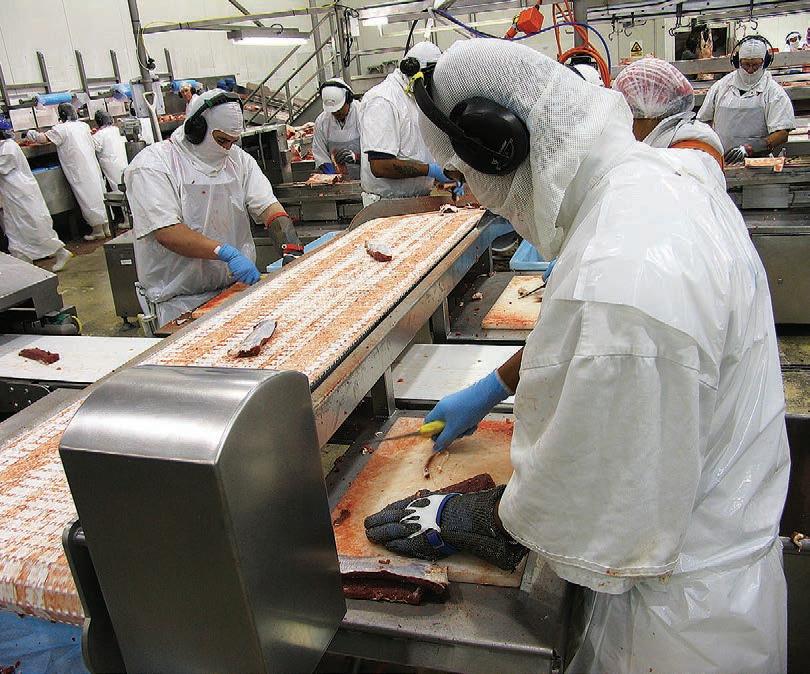
Why would you put that under threat?
It all seems bloody minded and ridiculous.
Putting it in perspective, NZ produces about 0.17% of global
emissions with around half of that coming from agriculture.
By comparison China produced 27% of the world’s emissions with an increase of 3.4% last year. It plans to build 43 new coal-fired power plants and 18 new blast furnaces. That will add an additional 1.5% to its annual emissions.
China has no plans I’m aware of to tax emissions on anything.
The United States produces 11% of global emissions and India 6.6% and they’re not planning to tax anything either.
Against that we have NZ agriculture, producing 0.08% of global emissions, which is going to be hit with punitive taxes.
It is a totally ridiculous state of affairs.
So well done Federated Farmers. You have provided solid, factual and unarguable proof that the country does not want taxes on food production.
Neither does the Paris Agreement.
Politics in two shakes of a lamb’s tail
From the ridge
the office for just 10 months. Bill is a decent fellow and would have made a good PM if he’d had longer in the job.
Going a little further back in time, Keith Holyoake’s first crack at PM in 1957 only lasted 83 days before his defeat by Walter Nash. He made up for it three years later when he repaid Nash by beating him at the election, and that second tenure lasted 11 years.
And John Marshall’s time as PM was only 10 months before he lost an election to Norman Kirk.
However, history shows that even Moore’s brief dalliance with the job was stellar compared to some of his predecessors’.
who rolled him after the 12 days, but Stout wasn’t having any of that and got rid of Atkinson again and enjoyed three years as PM on his second go.
Let us return to Harry Atkinson, for it is he who holds NZ’s record as the PM with the shortest tenure. After Stout’s 12 days, Atkinson basked in a mere six days as this country’s PM before Stout got his revenge.
IDOCKED some hogget lambs today. On the same day that Rishi Sunak became British prime minister.
Because of the wet, I hadn’t been able to start docking the early lambs until the beginning of September. When Boris Johnson was British PM.
The rest were docked during Liz Truss’s brief 50 days as PM.
Three prime ministers in two months.
Truss has beaten George Canning’s record for the shortest tenure as PM by sixty-nine days. Canning was PM back in 1827 and died in office of tuberculosis after just 119 days. I see there have been eight British PMs who lasted less than a year in office.
But are we in any position to mock and be amused by British politics?
Let us have a dive into New Zealand political history.
I guessed that Mike Moore might hold NZ’s record as our shortest-tenured PM with his 59 days when he took over from Geoff Palmer (who held the PM job for just 13 months) and led Labour to a heavy defeat in the polls to National’s Jim Bolger.
Bolger was eventually rolled by Jenny Shipley, who lasted two years in the role before losing her election to Helen Clark.
Bill English is the other shortterm PM in recent times, holding
A chap called Francis Dillon Bell was this country’s PM for just 16 days in 1925. He was our first NZborn PM, but only held the office as a caretaker after the death of William Massey.
Our first PM was Henry Sewell. However, his time in the job was short, lasting just 13 days.
He was rolled by William Fox, but the black marble got him too and his time in the office also spanned only 13 days.
So, the combined time in office of our first two PMs, or premiers as they were called then, was only half as long as Truss’s.
Robert Stout was PM for a solid 12 days in 1884. He’d got the job after knifing PM Harry Atkinson,
But don’t feel too sorry for Mr Atkinson. As well as his six days as PM, he served in the role three other times. Once for 13 months, another time for 11 months and on his fourth go he’d got the hang of it and hung around for a bit over three years before being defeated by the first organised party of Ballance’s Liberals in 1891.
By my reckoning, there have been 18 PMs that lasted less than 12 months in our history.
Mind you, 11 of those were during the first 35 years of selfgovernment when there were no formal political parties, which have a stabilising influence.
So, we can’t be at all smug watching the goings-on in the UK.
The UK is a cornerstone of Western democracy and like the United States has shown recent vulnerability, which is a lesson for us to not take our own democracy for granted.

20 Opinion FARMERS WEEKLY – farmersweekly.co.nz – October 31, 2022 Opinion20
CONSEQUENCES: Meat plants will close, unemployment will increase and the world will go hungry, Alan Emerson says.
PRIME TIME: We may watch in horrified fascination as Rishi Sunak
takes office in the UK, but NZ has no room to feel smug about prime ministers whipping in and out of office, says
Steve Wyn-Harris
Steve Wyn-Harris Central Hawke’s Bay sheep and beef farmer: swyn@xtra.co.nz
Our climate policy is confused and flawed
Meaty matters
emitters to buy carbon credits as offsets, while livestock methane emitters are not. Forests remove carbon dioxide, not methane, from the atmosphere, but Upton argues it should logically be possible for forestry to be used as an offset against warming in general, including methane. He also warned about the impossibility of planting enough trees to solve the warming problem.
market.
Allan Barber
Meat industry commentator: allan@barberstrategic.co.nz, http:// allanbarber.wordpress.com

TWO reputable climate change scientists, Adrian Macey and David Frame, recently published a five-part series of articles in BusinessDesk.co.nz which seriously questions the government’s climate change targets and policy. Macey is New Zealand’s first climate change ambassador and an adjunct professor at the NZ Climate Change Research Centre at Victoria University, and Frame is the centre’s director, which gives their opinions serious credibility.
At the same time Simon Upton, the Parliamentary Commissioner for the Environment, has issued a report that confirms the inappropriateness of planting huge swathes of pine forests to offset methane emissions and a note that questions the rationale for treating long-lived greenhouse gases and biogenic methane differently. He asks why fossil fuel

In his report he states: “Reducing livestock methane emissions could have real economic and social impacts on people and ways of life. A fine balance needs to be struck between having regard to economic and social dislocation and finding a position that New Zealand can defend in international climate change negotiations, while remaining competitive in global food markets with growing consumer demand for low-emissions products.”
This sums up the conundrum for political consideration admirably.
Macey and Frame maintain the climate targets announced by NZ can only be met by buying large amounts of carbon credits on a non-existent market from as yet unknown sources at highly uncertain prices. This will achieve very little in the fight against climate warming, but will almost certainly impose an unaffordable economic cost on the country. This cost has been estimated to be as high as $30 billion, or more conservatively $13b by the Treasury, but either way it is an eyewatering waste of money if it actually does nothing other than invest in a speculative overseas
NZ has adopted an entirely different approach to the rest of the world in an attempt to be seen to be signing up to an ambitious target that does not recognise our world-leading performance in agriculture and renewable energy sources. It is infinitely easier to adopt a virtuous target when the hard yards are still to be done, but for NZ to commit to an unachievable goal seems foolish, given the progress already made.
This problem goes back to 1997 when countries, including NZ, were finalising the Kyoto Protocol, which committed to keeping global warming at 5% below 1990 levels. Upton, climate change minister at the time, negotiated a 5% discount in recognition of our high proportion of renewable energy and agricultural emissions, particularly methane for which there were no mitigating technologies.
Unfortunately the small discount meant we would have to rely on international carbon markets to compensate, whereas the Protocol anticipated the vast majority of the emissions reduction would be achieved domestically. Our capacity to achieve this had already been minimised by our commitment to renewable electricity and heavy weighting towards agriculture. A further voluntary pledge in 2013 also effectively shut NZ off from being able to access Kyoto carbon credits with no other options to replace them.
Macey and Frame argue that we should do what other countries have done and build
climate policy from the bottom up by recognising the capabilities and constraints we already have instead of designing a theoretically ideal policy from the top down. Their recommendation is to submit a nationally determined contribution based on what can be done domestically without reference to international markets. The key point is the unpredictable amounts of money spent on buying carbon credits can instead be budgeted and planned for research and development into mitigating the effects of climate change and global warming.
NZ suffers at present from the United Nations’ insistence on treating methane like other greenhouse gases using the GWP100 measurement, which vastly overstates its impact because of its relatively shorter period in the atmosphere.
The Intergovernmental Panel on Climate Change says this overestimates the effect of methane by a factor of three or four, while similarly underestimating the shortterm (20-year) impact of new emissions. Scientists have come up with an accurate measurement for methane, termed GWP*, though some academics have tried to dismiss it as a means of giving agriculture a free ride.
Despite acknowledging GWP*’s accuracy, the Climate Change Commission still sticks doggedly to its preference for GWP100 as an accurate measurement of methane, while the Ministry for the Environment is reluctant to accept GWP* as the preferred
measure.
Adopting a warming-centred approach, as opposed to one that is emissions-based, would do away with the present inconsistency between how emissions are measured and the warming they cause, as well as clarifying the point at which NZ (as distinct from the world in general) stops contributing to global warming –keeping warming below 2degC is the key goal of the Paris Climate Change Agreement.
The split gas approach proposed under He Waka Eke Noa is an alternative if more complicated method of differentiating between the respective effects of carbon and methane emissions, though there is some misconception about whether this will meet international expectations when NZ submits its 2030 target as part of our nationally determined contribution. Before COP21 in Glasgow, Climate Change Minister James Shaw warned the split gas approach had already caused “international reputational damage”, though there appears to be no evidence of this.
It is hard to understand why there is reluctance here to listen to sound science that enables accurate measurement of emissions, especially when the less accurate alternative severely penalises the NZ economy. I would have thought the duty of both politicians and government officials would be to obtain the best and fairest deal for the country and its wealth-producing farming sector, not to buy in to illinformed pressure from local and international lobby groups.
Get used to rising interest rates as banks battle inflation
Straight talking
INFLATION remains public enemy number one. Living costs are rising rapidly and family budgets are stretched as inflation-adjusted incomes fall. Inflation creates uncertainty. It is hitting farm input costs and putting pressure on business margins. Asset prices are under pressure as interest rates rise.
For farmers, there have been some good aspects. A tough US Federal Reserve has sent the USD north and the NZD south, the latter accentuated by deteriorating
fundamentals.
The current account – our national chequebook with rest of the world – has widened to $27.8 billion. We deserve a lower currency.
Can we get the inflation thief back in jail? Yes, but the cost could be substantial, and we face many challenges. To appreciate these, we need to appreciate where we have been, relative to where we are likely going.
Many themes helped keep inflation low for decades, amid central banks taking interest rates lower and lower, and printing money (quantitative easing).
Key suppressants included:
• Technology driving down costs, increasing competition and pricing transparency, and globalisation, or the outsourcing of manufacturing production to Asia.
• In New Zealand, tradable or imported inflation averaged 1% per year for 30 years. Tradable inflation is about half of aggregate inflation. If tradable inflation is only 1%, it is easier to hit a 2% target.
• Contained wage growth as globalisation, technology and the diminished wage bargaining power of unions combined.
• Demographics as people saved
and abundant global savings was apparent.
• It was self-reinforcing, with low inflation driving low inflation. Many other factors contributed too, including migration patterns. Lower inflation drove lower interest rates for fear of deflation taking hold.
Throw together low interest rates, massive quantitative easing, government spending largesse and supply shocks and you have an inflation problem.
That was then. This is now. The laws of economics have not disappeared. So interest rates are rising rapidly.
A key problem for central banks is that getting inflation down now looks a lot harder.
Technology is still influential via the likes of Moore’s Law or the “law of exponential growth”. Moore’s Law is an expectation that the speed and capability of our computers increase rapidly every couple of years and we pay less for them. Think of the power of the iPhone today, or those cheap televisions.
Globalisation faces challenges as the world becomes more fractured. Security looks to be trumping economics for trade direction. Security in food, energy and technology products such as
micro-chips is paramount. One of those is good for New Zealand. Onshoring is gathering pace. Security over the supply chain is coming more to the fore. That does not look like an environment where tradable or imported inflation will average 1% per year for the next decade.
Workers are flexing their muscle amid labour scarcity and low unemployment rates. Wages are moving up rapidly. Lacking productivity growth, that adds to unit labour costs and puts pressure on firms to rise prices. There are structural issues at play, too. They include an ageing population. We have under-invested in talent, relying too much on immigration. The race for global talent is here. Government policy is squarely aimed at raising workers’ share of the economic pie.
Demographics are shifting. A more aged population means people are spending more and saving less.
On top of that you can add other factors. Climate change and the environmental, social, and governance movement add to costs.
Questionable government policy and covid have detracted from the economy’s capacity to operate. The economy does not appear to
have the same productive base it had pre-covid. That has driven a bigger wedge between demand and the economy’s capacity to supply. Schooling outcomes today are a bad omen for the economy in a decade.
Can governments around the globe step back and deliver tight fiscal policy and spend less? We seem to be in an era of populism and sugar candy-driven politicians. All these factors add to the cyclical challenge of returning the inflationary thief to jail and suggest a larger economic adjustment.
Central banks remain strong in their resolve to get inflation down. Headline inflation is on the retreat, but core inflation is still stubbornly high. That is where the war is set to be fought.
And so, interest rates will continue to rise and could remain elevated for some time.
When will central banks pause and watch?
When you start seeing aggressive cost-cutting and layoffs, you can start to take comfort that the interest rate peak is in. The labour market needs to turn. We do not appear to be there yet.
It is a battle of inflation versus jobs and that has politics written all over it.
21 FARMERS WEEKLY – farmersweekly.co.nz – October 31, 2022Opinion 21
Cameron Bagrie
Managing director of Bagrie Economics and a shareholder and director of Chaperon
Magic methane bullet getting hard to digest
The braided trail
cellulose. The ruminants do this with the help of trillions of bacteria that live within the rumen system. These bacteria ferment the cellulose in the grass to form volatile fatty acids that can pass though into the bloodstream of the ruminant.
This process of ruminant nutrition leads to carbon dioxide and hydrogen as waste products. At this stage another group of micro-organisms, methanogens, come into the picture. They turn the waste products into methane, with four hydrogen atoms attached to each carbon atom. The ruminant then burps up the colourless odourless methane.
REDUCING methane production from pastoral agriculture lies at the heart of efforts to make pastoral agriculture more climate friendly. If only sheep and cattle could be made to stop producing methane!
Unfortunately, the challenges of making that happen are not easily solved. It is a lot harder than the uninitiated might think.
This is not just an issue for farmers. It is an issue for all New Zealanders, given that almost half our exports come from pastoral agriculture – currently more than $32 billion per annum. According to the Ministry for Primary Industries, approximately 82% of all exports come from primary industries once timber, fish, horticulture and wine are included.
Without primary industries in general, but particularly pastoral agriculture, we are in very big trouble as to how to pay for all the imports of goods that we cannot produce here in Aotearoa New Zealand. Solving the methane issue would be a real big deal.

The starting point to understanding something about methane is to appreciate why ruminants produce methane. The quick answer is that it is a fundamental component of how ruminant animals, with their distinctive four-stomach system, have been designed by nature to digest grasses.
For humans, pigs, chickens and other species with single stomachs, known in biology as monogastrics, it is not possible to digest grass efficiently. Accordingly, if humans try to eat a meal of grass, they will get a sore stomach and very little sustenance. Indeed, it is simply not possible for humans to survive on a grass diet.
In contrast, ruminant animals such as sheep, cattle, goats and deer have a four-stomach system, designed by nature through evolutionary processes to be able to digest grasses and other highfibre forage crops that contain
When nature first designed ruminants through evolutionary processes, there was no need to minimise greenhouse gases. These gases only became an issue once humans interfered with natural processes by digging up huge quantities of fossil fuels that had been buried for millions of years.
Modern science tells us that it is water vapour first and then carbon dioxide that are the main greenhouse gases. But methane also happens to be a greenhouse gas that absorbs infrared rays at specific wavelengths as they travel back from Earth into space. So methane, which ruminants have been happily burping for millions of years without a problem, is now considered to be part of the modern greenhouse gas issue.
The problem is that nature’s ruminant nutritional system was designed for a purpose over millions of years by trial and error. That is how evolution works. And nature does not necessarily take kindly when humans want to interfere with the basics of that ruminant system. Change part of the system and there is always a good chance that the overall system will fall apart.
One way or another, the excess hydrogen has to be removed from the rumen. Otherwise, the rumen will turn from a fermentation vat to an acid vat. The animal will not be impressed and will get very sick.
Accordingly, it is not just a case of killing the methanogens. Something else has to take over the job that the methanogens do naturally. If there was an easy solution that was energetically better than producing methane, nature would in all likelihood have figured that out itself.
So, what are the technologies that humans have been exploring?
One of the most fascinating technologies is to feed some bromoform-releasing seaweed to ruminants. These trials have been going on in New Zealand and overseas. The bromoforms are particularly good at killing off the methanogens, but unfortunately, they tend to also mess up other
parts of the rumen system. Particularly important is the finding in a recent scientific paper that bromoforms pass from the rumen into milk.
Alas, bromoforms are a suspected carcinogen and certainly have the ability to interfere with many human processes. My own assessment is that, despite some ongoing hype, there is close to zero chance of this technology being acceptable to food-safety authorities. Indeed bromoforms, which are similar in their action to chloroform, are already widely banned in foodstuffs.
Nature’s ruminant nutritional system was designed for a purpose over millions of years by trial and error. And nature does not necessarily take kindly when humans want to interfere with the basics of that ruminant system.
The second feed additive that has generated considerable hype is a chemical called 3-NOP. This has been developed through to earlystage commerciality by Dutch firm DSM with the trade name Bovaer.
This technology appears to be much safer than bromoforms and does reduce methane production in feedlot situations for dairy and beef cattle. However, the evidence to date is that it does not work under pastoral conditions because it needs to be evenly distributed throughout the feed.
Fonterra has been working with DSM to try to develop the technology for pastoral situations. The barriers are formidable. Whispers on the breeze are that Fonterra’s research has not gone well and that there are some very glum faces. At the very least it is a
long way from commercialisation for pastoral conditions. Also, there are good scientific reasons as to why it is highly unlikely to ever work anywhere near as well in pastoral situations as it might do in a feedlot.
The other area of hype, which has been around for the best part of two decades, is a vaccine that leads to methanogen destruction. Research has shown that it is possible to get the animals to produce antibodies that travel via the saliva to the rumen, but getting the antibodies to actually work in the rumen is another matter. This technology has remained somewhere out beyond the 10-year horizon for more than a decade, and commercialisation has not been getting any closer. Once again there are some glum faces.
Another technology has been genetic selection for low-methaneemitting sheep and cattle. This is definitely feasible and may be a modest success. In sheep, where the research is most advanced, the lower-emitting animals have smaller rumens and produce more propionic acid than what occurs in the higher-emitting animals. Also, it seems these characteristics are inheritable.

However, there will be limitations to how far that technology can be taken. There are good reasons why fatty acids other than propionic acid, and which produce more methane, also have to be produced. It could be a useful tool in the toolbox but once again there is some risk that it is being overhyped. Caution is appropriate until there is more evidence as to how these animals perform under rugged pastoral conditions.
Pulling all of this evidence together, the big picture is that there are no magic technology bullets that can drastically alter the reality that ruminants emit methane for a good reason.
This methane is the outcome of evolutionary processes that produce animals that are fit for the grassland environment in which they live naturally.
However, that does not mean that no progress can be made in terms of emitting less methane per unit of meat and milk output. Indeed, the past 30 years have produced an amazing but seldom told New Zealand story as to how methane emissions per kg of sheep meat have reduced by about 30%. Dairy emissions per kg of milksolids (fat plus protein) have reduced by about 20%.
The way these spectacular efficiency improvements have been achieved is by the breeding of more productive animals and incorporating these animals within improved farming systems. Fortunately, improved biological efficiency has also led to efficiency improvements relating to methane emissions.
In the coming years there will be further improvements to be gained in relation to reduced emissions per unit of output, but it will be hard work. Each percent of gain is more challenging than the previous one.
One particularly promising field of endeavour is the methane produced in effluent ponds rather than inside the rumen. But across the all-species ruminant system, methane from effluent ponds comprises only about 4% of the total methane emissions.
None of these advances will change the bottom line that there will be no magic methane bullets. As long as ruminants live on the grasslands, they will continue to do what nature designed them to do, and that includes emitting lots of methane.
Given that reality, together with the fundamental importance of pastoral agriculture to the exportled economy, there is lots to ponder.
22 FARMERS WEEKLY – farmersweekly.co.nz – October 31, 2022 Opinion22
FIELD STUDY: The past 30 years have produced an amazing New Zealand story about how methane emissions per kg of milksolids have reduced by about 20% – through better breeding and improved farm systems, not a seaweed pill.
Keith Woodford
MD at AgriFood Systems
kbwoodford@gmail.com
China faces water crisis it can’t dam up
CHINA is facing increasing pressure on water resources from a combination of climate change, continued economic development and an increasing population.
The increasing impact of drought in China will have profound impacts across the globe with regard to food security and social stability.
The climate change issue, drought and an economic slowdown are creating a challenging set of circumstances for a country used to economic expansion, and an improving quality of life – especially in the cities.
China is no stranger to drought, though, having suffered crippling dry spells that led in part to the development of dam systems designed to capture and hold fresh water – mostly to assist with agriculture.
This dam network has done well in times of temporary drought but struggles with multi-year drought events.
The current dry spell has broken records all over the country, with lakes and rivers drying up amid searing temperatures.
China recently issued its first national drought alert of the year as authorities battled forest fires and mobilised specialist teams in an attempt to protect crops from the scorching temperatures across the enormous Yangtze River basin.
Regions from Sichuan in the southwest to Shanghai in the Yangtze delta have experienced weeks of extreme heat, with government officials repeatedly citing global climate change as the cause.
In one of the Yangtze’s important flood basins in central China’s Jiangxi province, the Poyang Lake – the largest in the country – has shrunk to a quarter of its normal size for this time of year, according to the state news agency Xinhua.
The scenario ultimate ly threatens to play out as severe hunger or famine as China struggles to feed its people and has to import large amounts of grain and other produce. That in turn could have a profound im pact on world grain prices.
As many as 66 rivers across 34 counties in southwestern China have reportedly dried up due to the scorching heat, with rainfall in some parts of the country down by as much 60% from usual levels.
The drought is also placing greater demands on China’s power generation capacity, with some regions reducing hydropower electricity generation by up to 50%.
The 11-week heat wave is causing havoc in a region that depends on dams for more than three-quarters of its electricity generation. Many cities around the country have imposed rolling blackouts or are limiting energy use. In some places factories have had to close.
The reduced hydroelectric dam output has also forced China to burn more coal, a large contributor to air pollution and to the greenhouse gas emissions that cause global warming.
The ruling Communist Party is already struggling to reverse a wider economic slowdown in China, caused by the country’s strict covid lockdowns and a slumping real estate market that has sparked a mortgage revolt in some cities.
Young people are finding it hard to get jobs, and concern over the immediate economic outlook has residents slamming their wallets shut.
Economists in the country are also concerned about the impact of a lasting drought on the autumn harvest, which accounts for 75% of China’s total grain output.
However, China has limited potential to increase water supply as demands on major rivers are already hugely significant. Instead it must look to managing water demand, especially in agriculture.
Increasingly China is seeing it has to change its approach to managing drought to become far more proactive, with more attention paid to monitoring,
Lamb, butter early victims of cost of living crunch
LAMB and butter are the first casualties of the cost of living crisis in the United Kingdom’s meat and dairy market, as consumers switch to cheaper options.

According to agricultural levy body AHDB, using data from research analyst Kantar, retail lamb sales were down 18% year on year, with butter falling 10%, as shoppers seek alternatives to combat food inflation of more than 13%.
The figures, which cover September 2021 to the same month in 2022, also show consumer confidence fell to its lowest level since records began in 1971, with 59% of households revealing their planned food spend was lower than that of the previous year.
According to a YouGov AHDB tracker, 26% of people said they would be eating less meat, with more than half of those saying it was down to price. Lamb is seen to be the main casualty, as people opt for cheaper options, such as pork and poultry.
AHDB retail insight manager Rebecca Gladman said the results showed that, as in the recession of 2008, consumers moved quickly to find cheaper alternatives.
A prime example of this is block butter, which has once again been one first items to be switched after increasing more than 14% in price in June alone.
“The price differential between block butter and margarine has elevated recently despite input costs for margarines increasing as well,” Gladman said.
However, Gladman flagged one difference: in 2008 consumers substituted block butter for margarine in sandwiches and as a spread, but they remained faithful to the product for baking, which she described as its “traditional heartland”. However, recent rises have seen butter sales drop in this area too.
“This creates a bit of a risk as shoppers look to trade down or potentially cut items from their basket altogether,” she said. While the findings were of concern, the market does provide plenty of opportunity for these two products to bounce back.
Kim Heath, senior retail insight manager at AHDB, said: “Obviously items at a higher price point are the first thing to be hit –that is not a surprise.
prediction and modelling of rainfall levels and the impact on freshwater resources.
By some estimates, two billion people or more in some 18 countries across the region depend upon a dozen or so major rivers, most of which originate on the Tibetan plateau in the southwest of China. These waterways include the Indus, Brahmaputra, Mekong, Yangtze, Yellow, Irrawaddy and others.
China has built thousands of dams on these rivers, although the amount of water captured by them is radically reducing in some years.

The issue also has a political dimension, with China’s neighbours accusing it of exerting undue influence in damming rivers like the Brahmaputra, which runs through Bangladesh and India to join with the Ganges-Padma River, ending up in the Bay of Bengal.
China’s leaders are well aware of the role water has played in the demise of many of the country’s pre-communist dynasties; brought down by the impact of food shortages and hunger among the population.
Climate change will continue to intensify the impact of drought as higher temperatures increase
water use across agriculture and urban areas while reducing runoff into dams.
The scenario ultimately threatens to play out as severe hunger or famine as China struggles to feed its people and has to import large amounts of grain and other produce. That in turn could have a profound impact on world grain prices, also currently higher than normal due to the war in Ukraine. It is interesting to note that China lifted a ban on Russian wheat imports just hours after Russia attacked Ukraine in February.
Although China is the world’s largest wheat producer, the country has been a sizable importer as demand, including for animal feed, continues to outstrip domestic supply.
Wheat imports in 2021 and so far in 2022 are way above normal, with China forecast to import at least 9.5 million tonnes of wheat and 6 million tonnes of rice, according to the latest United States Department of Agriculture (USDA) projections. It’s worth noting the USDA also calculates China has a near record 144 million tonnes of wheat currently in storage facilities.
Perhaps the most effective lever to address China’s water shortage issue would be to simply make water more expensive. But the country’s heavy industrial base and its water-dependent farmers plan their businesses on the bedrock of cheap water, and changing that mindset would be extremely difficult.
Managing shortage and demand in a system that has ignored the finite nature of usable ground water in China will have been one of the biggest issues for the Communist Party to grapple with as its 20th Party Congress got underway last week.
But the good news is: in many parts of China right now, the rain is falling at last.
“But there are plenty of opportunities for these two areas to make ground. Firstly, scratch cooking sectors and treats at home – where more people are trying to recreate restaurant-standard food at home or batch cooking in order to save money – lamb is great for that.
“And also for butter and its use in baking.
“With Christmas and Easter coming up there is plenty of opportunity for the dairy industry to make the most of the benefits of traditional recipes and home baking.”
23 world FARMERS WEEKLY – farmersweekly.co.nz – October 31, 2022World 23
Asia Media Centre
DISAPPEARING: A record-breaking drought has caused parts of the Yangtze River to dry up – affecting hydropower, shipping routes, limiting drinking water supplies and even revealing previously submerged Buddhist statues.
Photo: Wikimedia Commons/Copernicus Sentinel data 2020-2022
UK Farmers Guardian
OFF THE TABLE: Retail lamb sales in the UK are down 18% year on year as food inflation hits 13%.
Learning and growing on farm and off it
Only the third woman to win the award put her Ahuwhenua Young Māori Farmer trophy on the shelf and her boots on the ground, getting back to the land she loves. Before she did, Chloe Butcher-Herries spoke to Richard Rennie about what the award means to her.

THE morning after winning one of Māoridom’s most prestigious farming awards was pretty much the same as the rest for Chloe ButcherHerries: heading out into the hills with her dogs to move bulls and shift fences.

Only the third woman to win the award, she says she would not have it any other way, such is her love for what she is doing, and where she is doing it.
“To walk out the back door and be surrounded by the land, the trees, the whenua, it is a privilege.”
School holidays and weekends spent on her uncle’s Hawke’s Bay farm confirmed to her that it was the open space of the country that she wanted to build her life in.
Today the 30-year-old straighttalking assistant farm manager has risen strongly through the industry, gathering even more respect in light of her recent win.
But she attributes her success as much to the people who have helped her along the way as to her passion for what she does.
That includes her wife Makita and her latest bosses, Robert and Helen Pattullo of Newstead Farm, a bull-beef operation in Puketapu, near Napier.
“Rob is amazing. I have been doing this since I was 15 and the five years I have had with Rob outweigh everything else I have learnt before,” Butcher-Herries says.
She credits his mentoring role with helping her develop an understanding of the primary sector and its issues well beyond the farmgate, ensuring she is more than simply “someone on a motorbike with a few dogs”.
This has included regularly attending Beef + Lamb NZ field days and seminars, including on He Waka Eke Noa, to fuel her with the confidence to hold a view and be informed about the big-picture events affecting those on the land.
The Pattullos run an intensive bull-beef cell grazing system, buying in 1150 Friesian bulls from late April, running them through a cell rotation every four days within
It is something we want to do, to really encourage more Māori, young and old, to get into farming.
Ahuwhenua Young Māori Farmer alumni – an honour usually reserved for the winner.
Severne said the move was warranted by the sheer calibre of the three finalists, with the other two being Puhiere Te-Akainga Tamanui Tau and Rameka Eli Edwards.
“It is something we want to do, to really encourage more Māori, young and old, to get into farming. There are plenty of good resources out there now that weren’t there as much when I started, including the Primary ITO.”
their 20ha blocks, with destocking starting in November.
The management practice fits in well with Butcher-Herries’ interest in having a smaller environmental footprint, lightening the load on the farm during Hawke’s Bay’s increasingly severe summer dry periods, allowing the property’s pastures to recover.
“Our view is that pretty much any animal on the farm for a short time is a good animal.”
The Pattullos have supported Butcher-Herries’ off-farm education as she completed her level 3 and 4 studies in sheep and beef farming with Primary ITO, and she steps in to start her diploma in primary industries studies.
Butcher-Herries and her wife have turned the inherent benefit of having a house to live in on the farm into another advantage by investing in three houses of their own as part of their journey to farm ownership.
Recognising the challenges that housing brings to many in the region, they have made a point of making them available to rent as healthy homes for Ngāti Kahungunu iwi.
“Over the next three to five years I know Makita is keen to buy three more, and to have 10 within 10 years, and in 15 years we would like to use them to buy a farm for us and our future,” ButcherHerries says.
In announcing Butcher-Herries’ award, Māori Trustee Dr Charlotte Severne also announced the unprecedented step of inducting all three finalists into the
Butcher-Herries said she welcomes the Pattullos’ open-door policy on their farm, which gives plenty of opportunity for people of any age to visit the property and see what she is up to.
She acknowledged many iwi could be too humble about their successes, and that the trophy represents a great opportunity to shout that success, in a sector that is an increasingly significant and valued part of NZ’s primary industry.
Trust takes Ahuwhenua Trophy for top farm
Staff reporter PEOPLE Awards
THE Wi Pere Trust, a large sheep and beef farming operation at Te Karaka near Gisborne, was awarded the 2022 Ahuwhenua Trophy for the top Māori sheep and beef farm.
Minister of Agriculture Damien O’Connor made the announcement at the Ahuwhenua Trophy awards dinner in Hawke’s Bay. He said Māori account for 25% of the production of sheep beef and wool in New Zealand, and have brought a highly professional approach to their farming operations.
He encouraged everyone to go along to Ahuwhenua Trophy field days to better understand the complexity of the farms and passion of the farmers.
Trudy Meredith of Wi Pere Trust said winning the Ahuwhenua Trophy was absolutely amazing – especially given this was the first time they had entered the competition.
She said winning the competition will make people recognise the excellence that Wi Pere Trust strives for and the
high standard of its operations, and how as a trust it looks after people.
“It’s not all about profit – and although it does help, it’s not the be all. This has also set the bar for the next lot of trustees,” she said.
Nukuhia Hadfield, chair of the Ahuwhenua Trophy Management Committee, said the farms of all of the finalists were impressive and the judges had their work cut out for them to come up with a winner. She said despite a challenging year, all of the finalist field days were excellent and each organisation is a great role model for farmers. She said Wi Pere Trust is a very worthy winner “and for those of us who took the opportunity to attend their field day will see why. Wi Pere Trust runs an outstanding farming operation and measures up well in all the other criteria that are part of the judging process.”
Hadfield said the competition has once again demonstrated the strength and excellence of Māori farming.
The other finalists were Onuku Māori Lands Trust near Rotorua, and Hereheretau Station located in Whakakī, Wairoa.
24 People FARMERS WEEKLY – farmersweekly.co.nz – October 31, 2022 People24
IWI WINNER: Chloe Butcher-Herries, right, with wife Makita Butcher-Herries, says the opportunities for Māori to participate and succeed in agriculture are better than ever.
Photo: Alphapix
HAPPY PLACE: Ahuwhenua Young Māori Farmer of the year Chloe Butcher-Herries works hard to make sure she is more than simply ‘someone on a motorbike with a few dogs’.
Chloe Butcher-Harris Ahuwhenua Young Māori Farmer winner
NZ methane mitigation begins in Aus cows


Construction has begun on what is set to be the largest facility in the world for growing methane-mitigating Asparagopsis armata. Hugh Stringleman spoke to the GM of the company behind the massive expansion drive in New Zealand and Australia.
CH4 Aotearoa is expanding land-based aquaculture facilities for growing Asparagopsis armata seaweed for methane mitigation in ruminant livestock.
The private company has opened its own research and small production facility with 10 tanks in what has been until now a NIWA fin fish aquaculture site in Bream Bay, Northland.
Climate Change Minister James Shaw visited the Ruakākā site recently for the opening, along with local Whangārei MP Emily Henderson.
At the same time stage one of a much bigger seaweed production eco-park has begun construction at Ocean Beach in Bluff, the site of the old freezing works that closed in 1991.
CH4’s New Zealand general manager, Nigel Little, is a former Fonterra executive leading the local arm of CH4 Global, just at the start of plans for massive expansion here and in Australia.
“At Ruakākā, we have built a commercial-scale hatchery and nursery to support marine farming, which is now being refocused on land-based farming of asparagopsis.
“This is alongside the construction underway of the Ocean Beach, Bluff, commercialscale facility, which we intend will be the first of many land-based production units.”
What CH4 calls the Ocean Beach eco-park is planned to have 500 bioreactors, which are vertical tank systems, manufactured in New Zealand, at a construction cost of $10 million.
“Assuming all goes to plan, we will be looking to build up to four
Assuming all goes to plan, we will be looking to build up to four of these eco-parks a year, so as to produce enough aspara gopsis to feed all NZ dairy cows by 2035.
of these eco-parks a year, so as to produce enough asparagopsis to feed all NZ dairy cows by 2035.”
In production, a bioreactor containing 30,000 litres of seawater grows filaments of asparagopsis that can be harvested at a rate of 10% a day while being continually replenished.
Typical seaweed-growing systems on shore are either ponds or horizontal raceways.
The CH4 bioreactor vertical configuration is a reticulated aquaculture system provided by Fresh by Design, an aquaculture equipment specialist commissioned to design and construct the facility.
“We are not the only ones around the world developing aquaculture technology for asparagopsis, but we think we are different in using bioreactors this large.
“Ocean Beach will be what we think is the largest asparagopsis growing facility in the world.”
When harvested, asparagopsis filaments are air-dried and
then freeze-dried before being packaged, transported and fed to cattle.
CH4 Aotearoa is also working on lower-cost alternatives to freeze drying.
Production will go initially to meat processor CirPro and its feedlot partners in South Australia, where the addition of asparagopsis to continuous feeding systems has been validated and approved.
The first methane-reduced beef from that feedlot has been processed and consumed.

In Australia over the past five years, the CSIRO subsidiary FutureFeed has proven the methane-reducing efficacy of asparagopsis fed to cattle and now licenses the intellectual property to companies like CH4 and SeaForest, a company based in Tasmania with Fonterra as a partner.
FutureFeed is a consortium with Meat & Livestock Australia and the James Cook University. Its livestock trials show up to

90% reduction in enteric methane at low rates when making up about 0.5% of food intake.
Feedlot cattle typically fed about 10kg of dry matter daily require only 50g of asparagopsis.
“Our asparagopsis production in NZ will go to Australia because of the demand from feedlots, and the protocols and approvals are in place,” Little says.
“In Australia the science is complete and there are 1.5 million cattle on feedlots at any one time, so that is the immediate market.”
In NZ the research on feeding of asparagopsis in the grass-fed system has to be commissioned and completed.
Milking herds fed in the farm dairies twice a day offer the best opportunity for this trial work, now underway with DairyNZ.
“Our initial studies show with the right dose and formulation we will get a good result in methane mitigation,” Little says.
Considerable investment is needed for the animal trials to
establish efficacy and safety.
The new Centre for Climate Action on Agricultural Emissions would be an ideal funding vehicle, he suggested.

Any inhibitors subject to claims that they reduce methane emissions must now be registered as veterinary medicines, under an Order in Council for the Agricultural Compounds and Veterinary Medicines (ACVM) Act made in July.
To achieve such registration may take millions of dollars and up to 10 years, Little says.
He thought asparagopsis for methane mitigation had been caught up in the regulatory changes as an unforeseen consequence of a Ministry for Primary Industries caution following the dicyandiamide nitrification inhibitor issues.
“For a natural ingredient like seaweed, the ACVM requirement is an unnecessary overhead.”
Another concern among officials is bromoform, a leading indicator of methane reduction through asparagopsis, but not the only active compound.
“The fear appears to be that it will get concentrated through milk and beef.






“At very high levels it is a volatile and toxic ingredient, but not at the very small quantities of asparagopsis being fed to cows,” Little says.
CH4 was founded four years ago by United States-based chief executive officer Steve Mellor and Guy Royal of Tuia Innovation in Wellington, with some backing from Tom Sturgess of Lone Star Farms.

To become CH4 Global the holding company was moved to the US in 2020 and funding of $20m raised, with participation by Sir Stephen Tindall.
A second round of funding for $100m is underway, being marketed to venture capital funds in the US.
CH4 also has several marine sites like Big Glory Bay, Stewart Island, where it monitors growth and conditions such as water temperature for asparagopsis, endemic to NZ and Australia.
heirloom baby blankets







Premium New Zealand Merino
www.naturesgiftforbaby.com At Natures Gift For Baby we believe the key to a good nights sleep is a great blanket! Gentle on Baby’s skin and gentle on the environment. 5 timeless colours. $99ea LK0113340© Free deliverywithinNZ 25 Tech FARMERS WEEKLY – farmersweekly.co.nz – October 31, 2022Technology 25
ENTHUSIASM: Staff members at the CH4 Aotearoa aquaculture facility at NIWA Ruakākā , in Bream Bay, Northland.
BEGINNING: At the start of CH4’s vertical bioreactors for the continuous production of red seaweed.
Nigel Little CH4 Aotearoa
Special Report Leadership
Managing expectations
Leadership in the farming sector
Farmers Weekly that the sector is well served by its rural leaders. It is the environment in which they operate that is the issue.
THE effectiveness of rural leadership has faced intense scrutiny in recent years as sector chiefs tread a fine line between activism and blunting the sharpest edges of government policy.
Leaders say they have tried to work constructively with a government that has a Parliamentary majority, but it has been challenging – and in the past two weeks the gloves have come off.
There has been a noticeable increase in defiance in the pointed language used by farming leaders, angry at the government’s response to their He Waka Eke Noa (HWEN) proposal.
Industry observers have told
Morrison says solutions have to be found.
“We need to address these problems, not kick the can down the road because they are not going away.”
He says leaders are forceful when lobbying the government.
“There is a difference from drawing a sword and a public letting of blood.
“We are working responsibly yet forcefully. Respect and understanding from both sides is very important with these debates.”
Morrison says the HWEN model has successfully united 11 primary sector groups and could be used for other issues such as nutrients and freshwater.
Those leaders who have taken a co-operative stance with the government have sometimes done so at the expense of their relationship with members and levy-payers who feel primary sector leaders have been too placating.
This has led to rise of splinter groups such as Groundswell, which attracts a large following of rural people prepared to take their anger and frustration onto the streets.
Federated Farmers president Andrew Hoggard says leaders have been dealing with a government that appears to be trying to catch up with a legislative programme that was stymied in its first Parliamentary term by its coalition partner NZ First.


“It sucks up time and is incredibly frustrating trying to get changes at the same time as farmers are wanting to take pitchforks into the street,” he says.
The government’s response to HWEN shows they are not being listened to, he says.
“The fact they came back with a document that says one in five sheep and beef farming families will be required to move off their land, that they are effectively happy with that, is just crazy.”
Hoggard says HWEN leaders are now shifting the message, telling New Zealanders that the government is content to see 20% of sheep and beef farmers leave their land.

Two years ago, Hoggard says, interaction with the government was more diplomatic as rural leaders contributed to solutions and also had the ear of coalition
partners, but that has now changed and the government does what it wants.
The toll on farming leaders was illustrated earlier this year when three of the federation’s sevenmember board retired citing the workload of dealing with government policy.
They said they were buckling under the rushed and poorly timed process of implementing complex and far-reaching legislation such as that affecting freshwater.
Now the government has set aside just six weeks leading up to Christmas for consultation on its response to HWEN.
Beef +Lamb NZ chair Andrew Morrison says leadership is about empowering or enabling the performance of those you work with or represent.
While accepting some people will be angry with outcomes,
Andrew Hoggard Federated Farmers
“I think this is a real maturity for the agriculture sector as it does not pit sector against sector.
“It was highlighted when DairyNZ chairman Jim van der Poel said the government’s response to HWEN will not work because it does not meet the needs of sheep and beef farmers.”
Hamish Gow, the Sir Graeme Harrison Professorial Chair in Global Value Chains and Trade at Lincoln University, says the HWEN debate does not reflect a lack of leadership, but an adversarial decision-making process.
“There is not a lack of leadership, we have good leaders. What we don’t have is a space to deal with complex challenges and challenging conversations.”
He is advocating a system used in the United States and Europe where facilitators bring together society, agriculture, industry and the government along with relevant knowledge and research to freely discuss and debate issues and potential solutions.
The system has “someone in the middle who translates in an unbiased way and facilitates frank and open discussion”.
Such a conversation is missing in the government’s decision to be the first in the world to tax methane emissions, making NZ a first mover when, he says, a safer option would be being a fast follower.
“We are dealing with the economic wealth of NZ. We need to sit down, take a breath and ask what is our strategy ... The cost of getting it wrong is so high that this is where we need a facilitator asking what is the economic cost to society if we get it wrong or the cost if we are a fast mover and what is the difference?
“Those are the conversations we are not having.”
26 Special Report
Neal Wallace
NEWS
Leadership
MUSTERING THE MOB: Industry observers say the farming sector has good leaders, but su ers from a lack of ‘space to deal with complex challenges and challenging conversations’.
It sucks up time and is incredibly frustrating trying to get changes at the same time as farmers are wanting to take pitchforks into the street.
Looking for one voice amid all the yelling
Morrison by a farmer resonates: “Does NZ have trouble with leadership or followship?”
ANDREW Morrison knows he is not participating in a popularity contest.
As chair of Beef + Lamb NZ, Morrison realises that not all farmers agree with the body’s decisions, but he says these challenges will not go away and must be addressed.


That is the challenge of leading through change.
Accepting the sector is facing challenging times, Morrison says finding consensus is difficult given farmers are, by nature, individualistic and generally unreceptive to being told what to do.
A question recently posed to
“Leadership at its very essence is not about the individual, but all about the team,” he says.
In the lead-up to the He Waka Eke Noa (HWEN) debate, Morrison says the partnership engaged with 3000 farmers, which he considers an achievement.
Decisions not only have to reflect farmer feedback but also the best information available, including information and knowledge that is not always widely known.
This is especially true with the current debate on reducing agriculture greenhouse gases.
“Consumers we meet in market, people who have been in market and market research, gives us a broad picture of the challenges we face or will face,” he says.
Leadership at its very essence is not about the individual, but all about the team.
That feedback reveals consumers are increasingly concerned about the impact of food production on climate change.
“The reality is that more than 90% of our primary sector production is exported and we have to listen to what the concerns are of our customers.”
Information gathering also includes input from climate scientists such as Miles Allen at Oxford University, David Frame from Victoria University, the Climate Change Commission and the Parliamentary Commission for the Environment.
They regularly meet and discuss climate change issues with farmer bodies from other countries.
“We want the right metrics globally for ruminant methane,” Morrison says.
Perception is also relevant and Morrison says business leaders have told him that agriculture should be paying for its emissions, as business does, over and above fuel and coal usage.
Having a government with a Parliamentary majority changes the dynamics and the way groups interact with politicians.

“The Labour Government were given a mandate by New Zealanders through a democratic process,” Morrison says.
Knowing the challenge this posed, farming groups spoke to two former prime ministers about
how to be effective with their lobbying.
Morrison said one told them the sector was “terrible at getting themselves aligned”, and historically officials “could drive a bus through anything they presented”.
Another said the sector was “very good at yelling at each other”.
The solution was to create HWEN, a collective of 11 sector groups to provide a united solution to agricultural greenhouse gases.
Part of its strength is that it is one voice speaking across the spectrum of the primary sector.
“The size of the organisation is not the point, it is a shared approach to the challenges we all face.”
While this united body has fronted the climate change issue, Morrison says it could be a vehicle for other issues as well, such as ongoing nutrient and water quality legislation.
He has faced criticism over issues he has fronted, and says he can handle this when it is about the topic.
As soon as that criticism turns personal, he knows the critic has lost the argument.
Morrison says reaching decisions is not easy but he is relaxed when they are collectively supported by the sector and backed by science.
“If we believe we have issues that need to be addressed, if a decision is supported collectively and backed by science, then I can sleep at night.”
Smarter farming for a better New Zealand®
“At Ravensdown, we are committed to leading the ever-evolving challenge of enhancing land growth potential, as well as leading and exceeding the sustainability and emissions obligations of New Zealand’s primary production sector.”
Garry Diack, Chief Executive Officer
0800 100 123 ravensdown.co.nz 27 FARMERS WEEKLY – farmersweekly.co.nz – October 31, 2022Special Report 27
Neal Wallace PEOPLE Beef + Lamb NZ
CONCERNS: BLNZ chair Andrew Morrison says that with more than 90% of New Zealand’s primary sector production being exported, ‘we have to listen to what the concerns are of our customers’.
CROSSFIRE: Andrew Morrison says one former prime minister told him the sector was terrible at getting themselves aligned, and historically officials could drive a bus through anything they presented. Another said the sector was very good at yelling at each other.
Andrew Morrison Beef + Lamb NZ
More heat than light on complex issues
and facilitate the free discussion of issues and potential solutions.
NEW ZEALAND does not have a leadership crisis, but a policy making system that prevents constructive decision making on complex issues, says a leading academic.
Hamish Gow, the Sir Graeme Harrison Professorial Chair in Global Value Chains and Trade at Lincoln University, says given that adversarial system, the agricultural sector is being well served by its leaders.


He believes a new process is needed to address complex and far-reaching challenges such as climate change.
“What NZ is missing is an unbiased forum that can bring everybody together,” he says.
Such systems exist in the United States, through the Land-Grant University, and in the Netherlands with the Wageningen University.
Their role is to bring society, agriculture, specialists, industry and government together with the relevant knowledge and research
“It puts someone in the middle who translates in an unbiased way and facilitates frank and open discussion,” Gow says.
This system also ensures discussion centres on impartial facts so that agreement attracts greater buy-in from the various parties.
Currently, science is often delivered within its silo of expertise, but Gow says it needs an entity to provide details on its application and economic context.
That facilitator role was fulfilled up to the 1980s by the former Ministry of Agriculture and Forestry, but was left vacant when that structure was dismantled.
Given the economic importance of NZ’s primary sector, Gow says an unbiased decision-making process for complex issues is important but requires intellectual and cultural horsepower.
The current consultation process allows a rehash of opinions that have already been considered.
“It’s all based on someone testing the tide of opinion. We don’t go and get evidence to do modelling and undertake intellectual debate.”
Gow experienced this facilitating process when working at Cornell University in the 1990s on an accord for the drinking water catchment for New York City.
to mitigate the risk of water contamination.
“There was plenty of conflict but we brought everyone together, worked out a process and rolled it out to every farm. It was all done through a facilitated process.”
Gow can see a facilitator’s role for NZ’s two land-based universities, Lincoln and Massey, and has next year invited the presidents and deans of selected Land-Grant Universities in the US to visit and discuss the merits of the process.
A University of Otago leadership expert says leadership struggles to retain unity when trying to address multiple issues, as the primary sector is trying to do at present.
Dr Lynnaire Sheridan, a senior lecturer in management, says ideally leaders identify and focus on one goal and encourage their followers to focus on that issue – “it’s that ability to make a decision about what to tackle first, regardless of what the consequences are and explain that to their followers”.
Change is always frightening and Sheridan says leadership in a crisis creates order rather than control.
If there is a leadership vacuum, Sheridan says, followers can find another leader and cause to rally behind.
Hamish Gow Lincoln University
Silver Fern Farms builds leadership at board level
Richard Rennie NEWS Governance

AGOVERNANCE course
run by Silver Fern Farms, Farmlands and LIC is helping develop the skills and talent demanded by modern co-operative agribusiness boards.
Silver Fern Farms (SFF) chair Rob Hewett said the To the Core governance development programme came from a conversation between himself and former chair Robbie Burnside about the need to develop a better

That is not to exclude anyone who may have been on the farm their entire time. The reality is, however, that these are big complex operations. People with corporate experience do tend to put their hands up.
Rob Hewett Silver Fern Farms
talent pipeline for emerging director talent at the company.
“We kicked it off six years ago, ran solo for a while and then realised there were other coops having very similar issues. Farmlands came on board, and more recently LIC.”
Hewett says SFF is also taking a holistic view of leadership development, recognising the skills learnt through any course can also be applied within the communities the company is active in, down to the level of volunteer sports club and charities.
The To the Core programme gives interested and aspiring director talent an introduction to the demands of director leadership.
“We make it clear if you want to go on there are lots of other opportunities we can help you with, but if you do not then fine, the skills learnt will help beyond Silver Fern, in the communities as well.”
For those keen to progress, the process has an advanced stage, familiarising individuals with a higher level of the business’s operations.
The final “leg of the stool” is
the extended development group, identifying the cream of the crop who are fully committed to directorship roles and leadership.
Candidates are encouraged to find a mentor who fits with their personality. Hewett says a key trait he looks for is a candidate’s level of curiosity about the world, New Zealand’s place in it, and the company’s role in the bigger picture.
He says he is noticing that, of those candidates advancing, there are a number of farmers who exhibit a high level of corporate experience having come back to farming from finance and business backgrounds, often overseas.
“That is not to exclude anyone who may have been on the farm their entire time. The reality is, however, that these are big complex operations. People with corporate experience do tend to put their hands up.”
He hastens to add that simply following the governance programme is no guarantee of a board placement.
“Shareholders vote these candidates in. The fact the board thinks they are good does not guarantee a place on it.”
It involved the Cornell Cooperative Extension department working with dairy farmers in the catchment to change their systems
Fractured membership risks creating the public perception that the sector does not care about the issues – and that is the time leaders need to promote what is positive about the sector.
The existing SFF co-operative board includes three members who have come through to the extended development group stage.
Hewett says while there are no guarantees of placement, the courses ensure a level of depth, and provides a bench of potential candidates.
“You have got to have options there.”
Compared to even a decade ago, the demands on director leaders are intense.
Directors’ legally enforceable
fiduciary responsibilities have grown in the wake of events like Pike River, while digitisation and the internet mean the speed of business is simply faster.
Despite there being fewer larger farms, the calibre and interest from farmer shareholders wanting to develop their skills beyond the farmgate remains strong.
“We are still getting talent that includes corporate farmers putting their hands up with a generally well-rounded skill set,” Hewett says.
28 FARMERS WEEKLY – farmersweekly.co.nz – October 31, 2022 Special Report28
UPSTATE UPSET: Professor Hamish Gow had first-hand experience of consensus building on seemingly intractable issues when he was part of a process involving dairy farms and New York City’s water supply.
Neal Wallace POLITICS Policy and regulation
What NZ is missing is an unbiased forum that can bring everybody together.
LEADING: Silver Fern Farms chair Rob Hewett says the skills picked up in the company’s To the Core programme can also help build better community groups and clubs.
‘We were formed to give farmers a voice’
Neal Wallace POLITICS Leadership
THE perception that rural leaders were capitulating to politicians prompted two southern farmers to act.

They were increasingly hearing from farmers that their producer bodies were not representative of their views. Laurie Paterson and Bryce McKenzie felt they needed to give them that missing voice.
Groundswell was formed to try to breach that perceived gap between grassroots farmers and sector leaders – but also with the goal of having the sector speak with one voice in confronting issues such as climate change.
“We were formed to give farmers a voice and would have happily got in behind Beef + Lamb NZ (BLNZ), Dairy NZ and Federated Farmers to provide some unity prior to negotiating with the government,” says co-founder McKenzie.
“But once we got in the room with them, they weren’t interested in that. They were only interested in what the board or
they themselves thought farmers needed.”
That included pushing their preferred version of He Waka Eke Noa (HWEN) despite, McKenzie says, substantial resistance from their levy-paying members.
“Farmers are feeling disconnected,” says McKenzie, a West Otago farmer.
behind Groundswell.
“We are standing up for them and defending what they are doing, which is something they haven’t heard before.”
They are not against change, they say – farmers constantly adapt and change, but those historic improvements have been ignored.
Paterson says they oppose regulations that lack common sense and logic. He cites new rules for managing freshwater, intensive winter grazing and significant natural areas.
Fellow founder Paterson says in regard to climate change and water quality, farmers feel politicians and sector leaders are not recognising that they are among the most carbon-efficient food producers in the world.

“Blanket planting of trees or kicking sheep and beef farmers off the land will not solve anything,” the Waikaka farmer says.
McKenzie agrees.
“Farmers need to know somebody has their back, which is why people have hooked in
McKenzie says ideally he would like leaders to listen more to farmers and to be united in opposition to legislation that is obviously unworkable.
He says HWEN is an example of something that began with the right intentions, but to achieve consensus the various parties had to concede ground and the result is unpalatable.
Farmers have never been more frustrated and he despairs of the impact on younger generations entering the industry.
“We are really concerned about what we hear from young guys
who are asking ‘Why would we do it?’ ”
They reject the notion that dealing with a government that has a Parliamentary majority changes the relationship between politicians and representative bodies.
Paterson says that makes it even more important for leaders to advocate more strongly on producers’ behalf, to be united and speak and act with a single voice and to listen to their grassroots members.
That is especially important given that the government doesn’t appear to take notice of the
submissions from farmers, they say.
Groundswell has used social media to spread its message and to organise members.
Paterson says monitoring in the past month of social media engagement reveals that BLNZ had 12,300 engagements, Federated Farmers 14,300, DairyNZ 27,300 and Groundswell 473,800.
Paterson says some think farmers should not protest, but the fact they are prepared to take to the streets reflects farmers’ frustration.
“We don’t want to be too scared to put our hand up,” he says.
To be carbon neutral, we need to be positive
Taking action now means taking control of our own future
The world’s population will reach over 10 billion people by 2050. The scientific and political consensus is that we must contain global warming to 1.5° C.
Food producers are faced with the challenge to feed a larger population while reducing carbon emissions. However, there are also opportunities.
Find out about the challenges and opportunities for New Zealand’s agribusinesses at rabobank.co.nz

29 FARMERS WEEKLY – farmersweekly.co.nz – October 31, 2022Special Report 29
ONE VOICE: Laurie Paterson, left, and Bryce McKenzie say they started Groundswell in the hope of giving New Zealand farmers a united voice before negotiating with the government.
Farmers need to know somebody has their back.
Bryce McKenzie Groundswell
Catchment groups the key to grassroots connections
Gerald Piddock PEOPLE Communication
THE government and primary sector leaders need to re-establish their connections with grassroots farmers, says a leading Bay of Plenty farmer.

If they do not, they risk more groups like Groundswell emerging and filling that leadership vacuum, Rick Burke says.
The best way to re-connect with grassroots farmers is to empower and better utilise farmer catchment groups.
These groups are the ideal vehicle for getting key government people and policy makers out onto farms to better understand the issues farmers face, he said.
“I think this is where you can overcome a lot of the issues around not connecting properly


with grassroots farmers or industry.”
These groups operate in the middle connecting both grassroots farmers as well as industry and the government.
If set up right, catchment groups operate like discussion groups where farmers can better engage.
It can take years for a farmer to have the confidence to try something, but if their neighbour is doing it as part of a catchment group initiative, it gives them an avenue to become involved.
“It’s that close to you that you can’t avoid it,” Burke says.

“If the government puts the resources and the funding in behind those groups, the leaders are sitting within those groups to connect with the government – and I think that’s a massive opportunity.”
It is a powerful concept that the government is not properly
utilising. It has the potential to expose policy makers to ideas they may not have considered.



It would also be the ideal vehicle to empower the next generation of farmers, he says.
Burke has been heavily involved in farm advocacy over the years, including rallying against the Waikato Regional Council’s Plan Change One (PC1) and, more recently, being a signatory in the “Waka adrift” open letter addressed to farmers and published in Farmers Weekly.
He predicts a blow-up if predictions prove correct of 20% of sheep and beef farmers exiting the industry if the government’s farm emissions reduction policy is passed.
“There’s no certainty for farmers out there at the moment. That’s why I believe the solution is to create a vehicle to get farmers to connect with farmers who can
drive things through the middle. We have lost that connection with grassroots farmers.”
Groups such as Groundswell have filled the resulting vacuum and Burke questions whether farmers who advocate for Groundswell know what it wants.

“They just turn up because they’re pissed off. If we had that connection, then they would understand what we had to do and they would know what success would look like, but they have no idea because we are not connecting with them.
“What we are ending up with is that we’re forgetting about the people. As Māori say, ‘He tāngata, he tāngata’, and I think we’ve moved away from that and it becomes more about economics and big business looking after themselves and we forget about the people.”
The farming industry has tried to do something in a collaborative way through He Waka Eke Noa but is failing because it is trying to please everyone.
Trying to meld outcomes for both sheep and beef and dairy farm systems is like trying to put a square peg in a round hole, he says.


Consultation becomes prescriptive because of tight deadlines around submissions and the end result is farmers at the bottom having little input and it becomes very “top down” in approach.
“Then you get the uprising, with us and particularly with Groundswell. They recognised it a long time ago that grassroots farmers weren’t being engaged with and you end up with this polarisation of farmers and it gets really messy.”
Intensifying the issue is the sheer volume of legislative change that has been thrown at farmers over a short period of time, along with the disruption caused by covid, which prevented people from gathering to thrash out the issues.
This all exacerbated the problem, Burke says.
TAKING RURAL NEW ZEALAND FORWARD
Backing Primary Producers
The National Party stands alongside you - the farmers, businesses, families, and workers who are the lifeblood of the primary sector and the backbone of New Zealand’s economy.
In visits to farms, stockyards, and packhouses, National MPs and I have been listening. We know that being in business is much harder under Labour.
National takes its environmental commitments seriously. We are committed to achieving net zero by 2050 in a way that does not cripple the economy or our rural communities.
As proud champions of New Zealand’s primary sector, a National Government will make it easier for you to get on and do what you do better than so many of your global competitors.

“It’s been compounded by the fact that we have had so much loaded onto industry and it’s just been too much for farmers. Beef + Lamb NZ, Federated Farmers and DairyNZ, they have had to take a lot of it on board themselves and have had to drive it fast, and it’s ended up being very top-down.
“Advocacy is not working all that well. The collaboration principles need to be looked at and managed a lot better in terms of managing conflicts of interest, and hidden agendas.”
Rick Burke Bay of Plenty
Burke believes in splitting advocacy between the different sectors to ensure policy outcomes suit their farm types, whether they be vegetable growers or dairy or sheep and beef farmers.
Tailoring emissions policy frameworks for those different sectors will also prevent infighting between the sectors because they have different emission profiles and challenges around freshwater.
Once those frameworks are settled, those policies can then be dovetailed rather than building frameworks across the whole industry, he says.
“Our drivers and principles are totally different and we’re trying to do something across the board. If we can work together on different waka but collaborate across the different waka to land on something that’s enduring for both sectors, I think we would have a far better outcome.”
NATIONAL’S COMMITMENTS TO YOU
Enable water storage to improve climate resilience and raise the productivity of farms and orchards.
Cut red tape. Stop loading unnecessary new rules onto you.
Embrace science and technology to ensure New Zealand continues to be a world leader in food production.
Resolve staff shortages. Free up immigration rules and invest in education to expand the skilled workforce.
Back farmers to reduce emissions sensibly, without destroying rural communities.
Authorised by W Durning, 41 Pipitea St, Wellington 30 FARMERS WEEKLY – farmersweekly.co.nz – October 31, 2022 Special Report30
FOOT IN THE DOOR: Catchment groups can play a key role in re-connecting farming leaders and the government with grassroots farmers, whose voices have been lost in the debate over lowering farm emissions, Bay of Plenty farmer Rick Burke says.
There’s no certainty for farmers out there at the moment. That’s why I believe the solution is to create a vehicle to get farmers to connect with farmers who can drive things through the middle. We have lost that connection.
Ask Jessie Chan what makes a good leader
Annette Scott
JESSIE Chan is standing down as chair of the Ruralco rural supply chain next month, acknowledging it is time for fresh blood to take on the role as she looks forward to new governance challenges.
She says it is important for leaders to recognise when the time is right to step aside.
The first female to head a major New Zealand agribusiness cooperative, Chan, at 54 years of age, boasts an impressive governance career spanning almost 20 years. It includes leadership and director roles with Alpine Energy, Ngāi Tahu Farming, DairyNZ, Fonterra Shareholders’ Council, Federated Farmers, Business Mid Canterbury, and nine years with Ashburton Trading Society (ATS) Ruralco.
She was the 2017 Dairy Woman of the Year, the Canterbury Institute of Directors aspiring director 2014, and in 2022 was bestowed the Member of the New Zealand Order of Merit for services to dairy and agriculture.



Chan is currently a director of Bio Protection Aotearoa and NZ Pork.





She is quite deliberate in what she takes on and is always looking to ensure her governance roles inter-connect in a way that serves the community and wider industry.
“It is also important to know when your job is done and the time is right to step aside and make way for fresh blood,” Chan says.
This, she says, is key to effective leadership.
In her leadership style Chan strives to inspire people to take up leadership roles and to help others to achieve their goals.
She says skills are important, but ultimately it is attitude that determines the effectiveness of
those skills to lead with integrity, consistency and flexibility.
“There is a fine line between humility and leadership around making bold decisions and taking a lead while also bringing people with you.
“It is important to know why we do what we do and what is the end goal.”
In co-operative governance the shareholders must not be overlooked.
“Farmers have skin in the game so governance and leadership often rely on shareholders to make changes on farm for strategy to go forward.
“You are not there to represent farmers; you are there to take a lead and grow shareholder wealth.





“It’s important to understand and listen, as if you don’t take the shareholders on the journey, you come unstuck.”
Being clear about core purpose
and being purpose-driven is key.
“The best form of communication is what you do and how you do it.
“How you connect with shareholders and stakeholders will make or break a successful outcome,” Chan says.
“Farmers are actually quite sick of the spin; they want tangible difference – difference in terms of everyday life as farmers.
“Get some runs on the board, do what you say you are going to do and do it really well, again be clear about purpose and take the shareholders on the journey with you.”
Being positive, realistic, brave and open-minded is especially important.
And there is another fine line: “You want to be brave, but not brave and arrogant.”
There are a lot of pathways to leadership, with governance programmes across the sectors and opportunities for people to put their name forward.
“I don’t think that is a problem, but we need to work on the producer mindset.
“Industry bodies and cooperatives sometimes suffer from more of the same [people in leadership roles] because we elect people the same as us.
“It’s not always about the structure of the leadership but more so the mindset of leadership and sometimes producer apathy. Hopefully that will change with the next generation of our shareholders and industry bodies.”
Effective leaders must have humility and truly listen and they need to have the ability to take constructive feedback without getting defensive.
“Being arrogant is not effective or attractive. Often the loud ones get the limelight but that doesn’t always attract the right people.
“With humility you can still be strong in what you do but still take the people with you.”
Any leadership group needs open-minded people with a range of thinking.
“We need independent thinkers. Regurgitating what others say is not leadership, that’s the ability to listen and repeat.
“Independent thinking and diversity in thought is really important.”
If repeatedly asking the same questions is not getting answers, clearly it relays to doing something different.
Jessie Chan Director
“There are industry bodies out there struggling with this mentality in leadership.
“Good leaders look at a range of different angles to get a good outcome.”
There will always be risks but it is how risk is managed that counts.
“Smart leaders adapt and adjust as need may dictate, for example the covid pandemic, but keep core purpose the same as they amend and tweak to meet the challenges.
“Those who knee-jerk everywhere lose sight of the core purpose and that’s another trap leaders can fall into.


“Changing the core purpose will not solve tactical problems.”
Chan said good leaders have open minds and are also often involved in other industries and entities, and that combined knowledge can be good in any governance role.
But yet again, there is a fine line.
“If you do too much and spread yourself too widely you risk over-committing, and to be an effective leader you must be fully committed to the task at hand.”
Backing rural businesses
In 1963 Ruralco was created by farmers for farmers. Today, nothing has changed. Ruralco continue to meet the needs of farmers, contractors, and support businesses in our communities with products, services, advice and know how. Simply put, Farmers. We’ve got your back.

To get involved visit ruralco.co.nz/gotyourback
31 FARMERS WEEKLY – farmersweekly.co.nz – October 31, 2022Special Report 31
ATTITUDE IS EVERYTHING: Industry director Jessie Chan says it not always the structure of the leadership but more the mindset that matters.
Photo: Annette Scott
PEOPLE Leadership
If you don’t take the shareholders on the journey you come unstuck.
‘Next stage of growth’ for iwi agri leaders
Richard Rennie PEOPLE Leadership

IWI farming interests are asserting themselves as shareholders in processor coops and as entities in their own right, opening up leadership options for the next generation.

Nukuhia Hadfield, drystock farmer and chair of the Ahuwhenua Trophy award committee, says Onuku Māori Lands Trust, one of the finalists in this year’s trophy awards, highlights the efforts made to engage a younger generation in leadership roles.
“They are talking about not only mentoring the younger generation, but also getting them engaged a bit earlier than usual. And it is also about not forgetting about that middle generation.
“It is not something that is just handed to them, but something they are proactively doing to ensure success becomes ongoing,” Hadfield says.
Just as any business faces the challenge of replacing an aging generation of leaders with younger faces, iwi trusts and corporations are also having to deal with the issue.

“We used to be at a stage earlier on when you had to keep those old heads there, as iwi enterprises started up. But we are now at a stage where governance and foundations have been reasonably sorted.
“Our Māori businesses are going in leaps and bounds, and you can afford to bring on younger ones with less experience. The foundations have been set through trial and error, and we are moving to the next stage of growth and the new ideas the next generation
brings.”
She says some organisations are handling succession well, others not so much.
“Of course, it is always easier to get people to come on board when something is going forward, than when something may be struggling.”
She believes younger Māori are realising the opportunities that lie in moving through iwi land-based businesses.
“In the past it was perhaps looked down on somewhat, but not so much now. There are so many opportunities to bring up a family and be part of an industry where covid showed you are actually contributing to the country. There is a lot of pride in that.”
She says the Ahuwhenua Trophy has played a big part in helping iwi shout their successes louder than they may normally do – as well as helping to identify emerging leadership and talent within the sector.

The structure of the trophy’s judging process aims to encourage early achievers in a way that does not bring any fear of failure if it is their first time. Judging is initially done anonymously, with the top talent selected for further judging.
“It is below the radar and the entrants get feedback to take back to their trust and board members and hapū. It is black and white evidence that they can use to improve their businesses, even if they don’t go further.”
Hadfield says the awards are encouraging for iwi farming entities and young Māori farmers because the win is not necessarily just in getting the trophy.
“All the finalists come away with different wins for themselves. This is an opportunity to celebrate what is great about Māori agriculture.”
‘Lead for the people who come after us’
Neal Wallace POLITICS Leadership
LEADERS have a responsibility to use their position to create a better future, not just a better present, says Agriculture Minister Damien O’Connor.
“We need leaders who lead for the people who come after us.”
O’Connor says leaders are not a guarantee of leadership, but the type of leadership is influenced by the objectives of those in that role.
It has been claimed that the government is not listening to rural leaders, but O’Connor says that is not the case.
Agriculture sector leaders have made contributions on issues such as Mycoplasma bovis, the covid pandemic and the climate change debate.
Similarly, he says, sector leaders have pushed their case to the government, describing discussions as “blunt and harsh
at times”, which was what he expected.
That does not mean the government blindly follows their every wish.
“Ultimately the government has to arrive at what they think is the best long-term outcome. Some industry leaders agree with our decisions and some don’t.”
Leadership also means encouraging discussion and debate on issues such as climate change, which O’Connor says is a topic that has “for 25 years been kicked around”.

The growth of social media has altered the debate and the shape of lobbying, providing a vehicle for what he calls “uninformed and irresponsible comments”, which can undermine the efforts of sector leaders.
Agriculture has always had splinter groups and O’Connor says the difference now is that social media gives them an effective platform to spread their message and to solicit, communicate and organise their supporters.
Meet the people behind the farm gate
36 FARMERS WEEKLY – farmersweekly.co.nz – October 31, 2022 Special Report32 Subscribe on YouTube
On Farm Story is a celebration of farmers and farming - told in under five minutes.
TIMELY: Nukuhia Had eld says as Māori farming interests come of age the opportunities for young iwi to lead a new generation of farmers are more exciting and greater than ever. Photo: Alphapix
BLUNT: Agriculture Minister Damien O’Connor says he has learnt in discussions that are ‘blunt and harsh at times’ that ‘some industry leaders agree with our decisions and some don’t’.
New reality confronts young rural leaders
Neal Wallace PEOPLE Leadership
ROOM needs to be made for the voices of young rural leaders to be heard in the debate over current challenges facing the farming sector.
New Zealand Rural Leaders chief executive Chris Parsons says those young leaders come from a different generation and are highly motivated, purpose driven and educated in a different way to current leaders.


“We absolutely have good leaders but we need more and a pipeline of them coming through,” Parson says.
For the past 30 years or so, the sector has had relatively few challenges compared to what is faced today, he says.
Current challenges require a new skill set.
Given the speed and breadth of change occurring in the rural sector, leaders are needed that can identify and articulate what he calls “a new status quo”.
The game is changing and Parsons says leaders cannot ignore change and still expect to be successful.
There are two common
responses to change: an angerdriven reaction or re-imagining a new system.
Parsons says a new generation of leaders will have a role in that transition.
“I genuinely have a high confidence in the young people coming through and their ability to step up.”
They do need some coaching, but also an invitation to lead.
is one of the most studied but least understood topics.
The role comes with scars and stress, which Parsons says feeds into NZ’s biggest industry: chopping down those who poke their heads above the parapet.

“Leadership is a lonely place, which is why some people do not step into it.”
He urged people to respect and support leaders who are trying to find solutions to challenges.
Leadership also requires a healthy conversation or debate by the wider sector to discover the best ideas.
Parsons says success will come from the sector working collaboratively as a team instead of as individuals.
“It’s not the best brain that will go on and win, but the most brains working together.”
“Young leaders need to step up into the breach, but there needs to be a bit of space created to give them confidence and to let their voices be heard.”
Parsons says research and studies completed by Kellogg and Nuffield scholars have helped inform the current debate, but he says leadership
That requires leadership to organise groups, identify and use the different skills and styles needed, which differs from how leaders have operated in the past.
“Leadership is not about egos, pride, coercion or manipulation; it’s about connecting people to purpose, championing a cause, coaching and vision, and seeing the possibilities over the horizon.”
Leaders in agribusiness
On
Farm Agribusiness • Strategic financial advice, practical and tailored to you • Access to digital insights and reporting • Find opportunities to grow your farm business • Succession plans that work best for your business and family We have partnered with farmers for generations. Navigating through environmental, financial and regulatory changes. Our local agribusiness specialists are backed by insights and are powered by cutting-edge financial software to help you make possible happen Speak with your local On Farm Agribusiness specialist today kpmg.com/nz 33 FARMERS WEEKLY – farmersweekly.co.nz – October 31, 2022Special Report 33
Young leaders need to step up into the breach, but there needs to be a bit of space created to give them confidence and to let their voices be heard.
Chris Parsons New Zealand Rural Leaders
YOUNG GUNS: New Zealand Rural Leaders chief executive Chris Parsons says highly motivated, purposedriven young leaders have been educated differently to current leaders.
Rural market update
In recent seasons, there has been clear data reflecting a significant upswing in rural sales. Reversing a constrained market from 2017 to 2019 as a result of a swath of environmental policy reforms, OIA rule changes, and regulatory pressure to deleverage rural debt. Our dairy sector absorbed the brunt of these pressures, highlighted in 2019 when dairy farm sales dropped to post-GFC levels despite significantly improving payouts.
So, where is the rural property market today? First, we probably need to consider the impact of current government policies and rising interest rates on our primary sector.
The most obvious is the current legislated ETS policy settings and associated forestry land use options for qualifying pastoral land. This ETS scheme has profoundly impacted the valuations of extensive pastoral land across the country; you have to go back to the mid-’70s and early ‘80s of the Muldoon era to find a comparable period of upward rural land revaluations. Back then, it was Livestock Improvement Schemes and Land Development and Encouragement loans, compounded by Supplementary Minimum Price Schemes, all of which was collectively capitalised into forward pricing of rural land that saw farm production assets grow at 20%+ pa. Noting inflation was running away at double digits over that period too.
The salient lesson for today is 1984, when the then Labour government deregulated the market almost overnight, rolling back all farm support, floated the dollar, and let farm interest rates rise to 20% p.a.
Consequently, pastoral valuations crashed by 1987. It was not until the government offered significant tax incentives in the early 1990s for new production forestry that pastoral farm valuations began to recover. Post-2000, it was the million hectares converted to dairy that had the most significant impact on sheep and beef land. Again, the DIRA Act of 2001 was the catalyst, resulting in the formation of Fonterra. On-farm sheep production has improved significantly since, and we export almost the same volume of lamb today (90%), with two-thirds fewer sheep compared to the 1980s.
Forestry, it could be argued, has not been the enemy many perceive of pastoral farming as the competition for rural land underpinned farm valuations for decades, keeping loan-to-value ratios in check. All ships rise on the incoming tide, and this current ETS policy has been a game changer for hill country farm valuations nationwide. But realistically, how long do we think this can last?
The ETS scheme is the most significant market distortion in 40 years, and it’s not going to last forever. The reason we can be so confident of this is quite simple: it was a


government policy that created the ETS, and it will likely be a government policy that drastically alters it. We’ve seen signs already this year, as policymakers initially sought to make changes to various ETS forestry settings, particularly around permanent forests, which was then followed by a backdown. Mainly because the property rights associated with carbon sequestration are now much better understood by landowners, notably Iwi, who would have been significantly impacted, given the scale of their land holdings and the long-term stewardship view of their whenua.
All indications are that ongoing banking support for new rural loan applications continues, and the deleveraging of recent seasons, particularly our dairy sector, places our farmers and growers in a much stronger position compared to the last decade. Interest rate hikes will continue to bite, and some farmers I have spoken to recently are now paying double the interest costs compared to the same time last year. These interest costs, combined with double-digit on-farm inflation, impact the market. For the month of August, farm sales are back 30% on the same time last year, and the rolling 12-month average is back 220 farm sales to 1349 farms sold. Rural values, however, are holding up well, with the market overall up $486m to $4.5b, the best overall rural market result in the post-GFC era despite reduced farm sales activity.
However, the political drivers for a change in ETS policy have not gone away, and momentum appears to be building for a change from the current “plant and pollute” policy, as recently described by Climate Change Commission Chair, Dr Rod Carr.




Our view is the same as last season; this is a short-term ETS window for pastoral farmers and for those looking for a farm exit; the inevitable correction is likely to be significant; however, it probably won’t be a crash in values like 1987. Instead, there will be an adjustment where the volume of farm sales reduces significantly. It could take several seasons before vendors are prepared to meet the market again.
Nothing really drops, given a robust commodity cycle and improved production but equally, very little sells unless there is a genuine motivation to do so.

Pastoral sheep and beef farming is in good heart, generating record export receipts; none of this has come easy. Long run, these properties will continue to grow in value, but those contemplating an exit in the next 2-3 years might want to bring the family conference forward. This is the same advice as we offered up last year, but probably don’t wait for Christmas. Much of this will come down to confidence in the home team running the farm, labour constraints, and general frustration with bureaucracy and central government policy red tape. Recent hill country capital gains are without precedent. However, the current cost of borrowing will be a much more significant factor weighing on farmer purchase decisions. So, if forestry conversion slows as many anticipate it will, farmer-tofarmer transactions will have to reflect the significantly higher cost of borrowed capital.
Government policy constraining RSE schemes has hit horticulture production hard and hopefully will improve soon, but it all appears very slow with more cost and red tape. Kiwifruit orchard sales are likely to come off recent seasons ‘momentum buying’ as returns moderate and the real costs of operating rise. However, we continue to see genuine buyer interest for horticultural production systems but expect to see some adjustment in valuations on last season to complete sales.
This season the geopolitical risks, knock-on impacts on supply chains, and an international energy crisis all speak to strong inflationary pressures continuing, not to mention pulling back record monetary policy stimulus packages in response to the global pandemic. While inflation is never welcome, historically, our farming sector assets have performed well over these periods; the real value of the debt is devaluing, and the ‘cost of food indexes’ tend to follow the inflation cycle. Hence farmgate returns tend to track up, and inevitably these returns are capitalised into farm asset values over time.
In closing, our business takes great pride in maximising the full value of our farmer and grower assets. This current season the discipline of anticipating buyer information requirements will be a prerequisite to concluding contracts, ensuring they have complete confidence in the representation of the property.
For rural and lifestyle property advice from a national team of committed salespeople, supported by our expert marketing team, right across New Zealand, call 0800 367 5263 or visit pb.co.nz

 Conrad Wilkshire General Manager Rural Property Brokers Ltd
Conrad Wilkshire General Manager Rural Property Brokers Ltd










Years 1996 to 2021

$6,000,000,000
$5,000,000,000
$4,000,000,000
$3,000,000,000
$2,000,000,000
$1,000,000,000
This 2022/23 rural real estate outlook will be the hardest to pick in the last five years.
Food Price Index $/Stock Unit 300 0 Sources: NZWBES Sheep and Beef Farm Surveys 1962 1987, Stats NZ 500 450 300 250 200 100 50 400 350 150 1962 1963 1964 1965 1966 1967 1968 1969 1970 1971 1972 1973 1974 1975 1976 1977 1978 1979 1980 1981 1982 1983 1984 1985 1986 1987 250 200 150 100 50 Price per Stock UnitFood Price Index Between 1976 and 1986, the Average annual Food Price Index inflation rate was 18.4% 1984: Removal of all Government agricultural support packages NZ Meat and Wool Board Economic Service Total Production Assets, nominal values vs. NZ Food Price Index, 1962 - 1987 No of Farms Sold Total Sales Value
$ Source: REINZ Rural Insights Reports Total Sales ValueNo of Sales NZ Rural Sales by Number and Sales Value (20ha+) Calendar
The ETS scheme is the most significant market distortion in 40 years, and it’s not going to last forever.”
34 Property
This is a beauty
Farmed with great pride and attention to detail by the Vendors over the last 48 years, this well presented and located property with a long road frontage comes to the market in excellent heart. 103 ha (STS) north facing farm, with flat to very gentle rolling contour milking 265 cows with a two year production average of 118,243 kgMS. Subdivided into 63 paddocks by wide surface laneways, reticulated with excellent farm water and consistent fertiliser history with strong healthy pastures. There are two good homes on the farm, a four bedroom solid brick main homestead and a modern seven year old, three bedroom cottage providing excellent accommodation for farm staff.



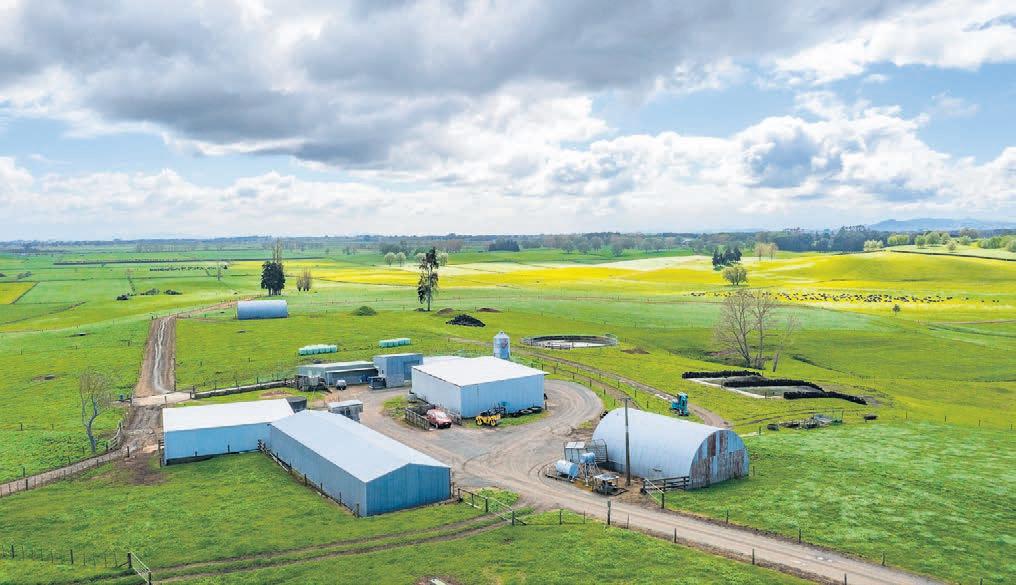
Tender closes 2.00pm, Thu 17th Nov, 2022 (unless sold prior), Property Brokers, 138 Arawata Street, Te Awamutu


View Tue 1 Nov 11.30 - 12.30pm
Tue 8 Nov 11.30 - 12.30pm
Web pb.co.nz/MAR108725
Ian Morgan M 027 492 5878


Chelly Aitchison M 022 697 8779
Karapiro lakefront

Premium farmland on the edge of Lake Karapiro, situated in the heart of the Waikato between Matamata, Cambridge and Tirau. Exceptional beef growing country having won Steak of Origin twice. Subdivided into 26 paddocks, boasting north facing, flat to rolling terraced contour with Tirau Ash soils. Well equipped for horses with amenities including a sand arena, stables, tack room, float storage, and ample additional storage. Substantial 325 m2 renovated home with four bedrooms plus an office capturing panoramic views of Lake Karapiro. Offering the potential to purchase as a whole or in two parts as there are two titles.



4 2 2
Tender closes 4.00pm, Tue 6th Dec, 2022 (unless sold prior), Property Brokers, 94 Duke Street, Cambridge View Tue 1 Nov 12.00 - 1.00pm Sun 6 Nov 10.00 - 11.00am
Web pb.co.nz/CBL95220
Rawiri
•
•
•
•
•
Tender closes 4.00pm, Thu 1st Dec, 2022, Property Brokers, 138 Arawata Street, Te Awamutu View Thu 3 Nov 12.00 - 2.00pm


Thu 10 Nov 12.00 - 2.00pm Web pb.co.nz/TWR107839
 Ohaupo 250 Forkert Road
Tender
Karapiro 2279 and 2291 Maungatautari Road
Tender
David McGuire
Ohaupo 250 Forkert Road
Tender
Karapiro 2279 and 2291 Maungatautari Road
Tender
David McGuire
M 027 472 2572
Rangitaiki,
Taupo 91 Matea Road Tender 'Rawiri Farm'
Farm is very well presented, high-performing lamb and beef finishing property located 43 km southeast of Taupo in the Rangitaiki district.
348 ha with 318 ha in pasture, 66 main paddocks, reticulated bore water
Contour 70% flat-undulating, the balance easy-rolling hill with some steeper faces
Predominantly free draining pumice soils with excellent fertility levels
Three stand woolshed, very good stock handling facilities and farm shedding
Renovated three bedroom plus office family home with internal double garage. After a rewarding forty year tenure the owners have decided it's time to move on, presenting a fantastic opportunity to secure an outstanding property that has a consistent history of producing quality stock.
Dave Peacocke M 027 473 2382 E davep@pb.co.nz Property Brokers Ltd Licensed REAA 2008 pb.co.nz Proud to be here 35
River Run
River Run provides a dairy purchasing option in a central North Island location seldomly offered to the market. The 136.21 ha (more or less) of flat, well draining dairy land could be an ideal two labour unit property or an extension to another farming business. Located just 11 km from Taumarunui township on the edge of the Whanganui River the 106 ha dairy platform has an excellent layout with short walks on flat to easy undulating contour and is under excellent management with the current sharemilkers producing an average of 100,000 kgMS from 300 cows. The 30 ASHB cow shed is centrally located and is supported by calf barns and further hay and implement sheds.
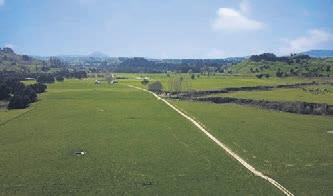
Auction 11.00am, Mon 7th Nov, 2022, Taumarunui Golf Club, 165 Golf Road, Taumarunui View By appointment Web pb.co.nz/TUR102767
Katie Walker M 027 757 7477


Retiring farmers - genuine sale 327 ha on a sealed road 29 km south of Te Kuiti. This property offers an even balance of contour allowing for a variety of farming practices and diversity in stocking options. The 270 ha of effective grazeable area includes approximately 100 ha of cropable/mowable contour, with the balance being medium to steeper hill. Infrastructure includes a four bedroom main dwelling, four stand woolshed, sheep and cattle yards, two haybarns and a five bay implement shed. Fenced into approximately 40 paddocks. Stock numbers normally wintered include: 69 R1 Cattle, 24 R2 Cattle, 840 MA Ewes, 290 Hoggets and 14 rams. Motorbike and helmet required for open days.
Tender closes 4.00pm, Fri 9th Dec, 2022, Property Brokers, 131 Rora Street, Te Kuiti


View Thu 3 Nov 11.30 - 1.00pm
Wed 9 Nov 11.30 - 1.00pm Web pb.co.nz/TER109636
Doug Wakelin M 027 321 1343

Di Janett M 027 554 2227
Ara Farm

This tidy sheep and beef farm is 34km west of Taumarunui, in Otunui. The 466.20 ha (approx) farm has 400 ha effective grazing land and 60 ha of scattered native bush. Rolling flats complement medium to steeper hill country and gives the farm many stock policy options for a future proofed operation. The farm has been faithfully fertilised over the last 37 years of current ownership. There are natural water sources around the farm, good fencing, laneways and satellite yards. A good house and further buildings support the farm, including a haybarn and a four stand woolshed with covered yards. There are many farming options here to explore, traditionally this farm fattens all its stock, currently producing fat cattle through July - August and lambs during summer but it could be a great breeding farm to add to an existing operation. This is a genuine King Country sheep and beef farm that offers a fantastic opportunity to an existing farming operation.








Tender closes 4.00pm, Thu 1st Dec, 2022, Property Brokers, 27 Hakiaha Street, Taumarunui View Thu 3 Nov 11.00 - 2.00pm
Thu 10 Nov 11.00 - 2.00pm Web pb.co.nz/TUR103743
Taumarunui 258 Burnand Road
Auction
Mapiu 1711 State Highway 4
New Listing
Taumarunui 292 Aramahoe Road, Otunui
Open
Day
Katie Walker M 027 757 7477 E katiew@pb.co.nz Property Brokers Ltd Licensed REAA 2008 | pb.co.nz Proud to be here 36
Dairy with options
Located within the highly regarded Reporoa Valley, this 127.12 ha property consists of approximately 113 ha of effective area. The property has six titles (two lifestyle titles) that allow for multiple options. Production average for the last three years is 122,011 kgMS (1,080 kgMS/effective ha). Contour ranges from flat to gently rolling with a small area of moderate hill. Improvements include a tidy three bedroom home with single accommodation in the adjacent double garage. Farm infrastructure includes a 28 ASHB milking shed, Waikato plant and in shed meal feed system. Four bay half round implement shed & various other shedding, as well as a 750,000 litre Kliptank effluent storage system.


Tender closes 12.00pm, Wed 16th Nov, 2022, Property Brokers, 38 Landing Road, Whakatane
View Wed 2 Nov 10.30 - 12.00pm
Wed 9 Nov 10.30 - 12.00pm
Web pb.co.nz/WTR15144
Phillip Berry
M 027 478 8892
Landbank or develop Landbank or develop to reap the rewards of this versatile 78.8 ha block: a multi-species forest/native bush block located 20 km from Whakatane. Plantings are 17.7 ha of Pinus Radiata at various age ranges from 19-27 years: all silviculture has been carried out in accordance with industry best practice. There is also 3.2 ha (approx) in 25 yr old Eucalypt Nitens, while the rest is in mature native bush and lowland scrub. The property is intersected by a paper road, and features some spectacular rural views from various vantage points as well as potential building sites.



• Whakatane 20 km; Tauranga Port 10 2km; Kawerau Mill 40 km
• Potential building sites
• Landbank or bolthole
273 ha dairy unit - Southern Hawke's Bay
Situated at Matamau, 11 km north of Dannevirke, offering the discerning purchaser a great opportunity to increase their portfolio or entry to ownership with scale. The property is situated in an area that receives approx. 1,100 mm annual rainfall and is considered a summer safe area of the Tararua District. Approximately 174 ha flat balance easy with some steeper hill. Infrastructure is considerable which includes two cow sheds (36 ASHB & 26 ASHB), three homes, extensive calf shedding, large feed or silage bunkers, feed pads at the cowsheds and numerous other auxiliary shedding. Basically, the property can be run as two separate units but is being sold as one. 2021-22 - 640 cows being calved with half the herd wintered on farm. The property is presently absentee owned with the vendor serious about divesting in part of his portfolio.



3 1
Tender closes 12.00pm, Tue 29th Nov, 2022
View Thu 10 Nov 11.00 - 12.00pm
Thu 17 Nov 11.00 - 12.00pm
Web pb.co.nz/WTR110064
Phillip Berry
M 027 478 8892
Lindy Nelson Parker M 020 416 12050
Tender closes 2.00pm, Thu 1st Dec, 2022, Property Brokers, 98 Ruataniwha





pb.co.nz/
Waipukurau
Reporoa 3002 State Highway
5
Tender
Whakatane 637A Awahou Road
Tender
Dannevirke 76412 State Highway 2 Tender
Street,
View By appointment Web
WR107232 James Butler M 027 405 8930 E james.butler@pb.co.nz Pat Portas M 027 447 0612 E patp@pb.co.nz Property Brokers Ltd Licensed REAA 2008 pb.co.nz Proud to be here 37
Open Day
61.5 ha - Kaponga gem
For tender is this fantastic 60.6 effective ha dairy farm which is located 3 km from the Central Taranaki township of Kaponga and will provide first farm owners or astute investors a great investment opportunity to purchase a high producing and well located dairy farm. The contour is generally flat to gentle sloping. This, combined with the extensive regrassing program, the strong fertility and Egmont Black Loam soils, ensures a very strong pasture harvest. Currently managed by contract milkers and supported by the owners' run-off, average production of 91,500 kgMS is achieved from a peak number of 200 cows. Modern, updated infrastructure is of a high standard including a quality three bedroom summit stone house, 19 ASHB farm dairy with in-shed feeding and Pro-trac, two calf sheds, PK bin, Inaha Water Scheme and modern effluent system with storage and traveling irrigator. A smaller Taranaki dairy farm of a very high calibre that will appeal to all who inspect it.
Opunake
Ihaia
3 1
Tender closes 4.00pm, Tue 6th Dec, 2022, Property Brokers, 227 Devon Street East, New Plymouth View Wed 2 Nov 1.00 - 2.30pm Wed 9 Nov 1.00 - 2.30pm Web pb.co.nz/NPR109624
 Greg O'Byrne
Greg O'Byrne
M 027 598 3000 E greg.obyrne@pb.co.nz
Day
95 ha - Opunake dairy farm with options


For tender is this reliable 82 effective ha dairy farm which is located 9 km inland from the Taranaki coastal town of Opunake, providing a great investment opportunity for investors looking for an easy to manage dairy farm which is currently supplying OCD. This flat to rolling property, with great road access, has five titles giving multiple ownership options. The current owners use a farm manager to run a simple self-contained system, focusing on low cost production averaging approximately 85,000 kgMS from a peak number of 230 cows. The strength of this farm is the solid level of infrastructure with a sound weather board three bedroom home, 26 ASHB farm dairy with in-shed feeding, good calf rearing facilities, multiple other sheds, PK bin, reliable water and effluent system with traveling irrigator. If you are looking to purchase either a dairy farm or larger lifestyle / grazing block, take a look at what this property can offer with its multiple titles and purchasing options.


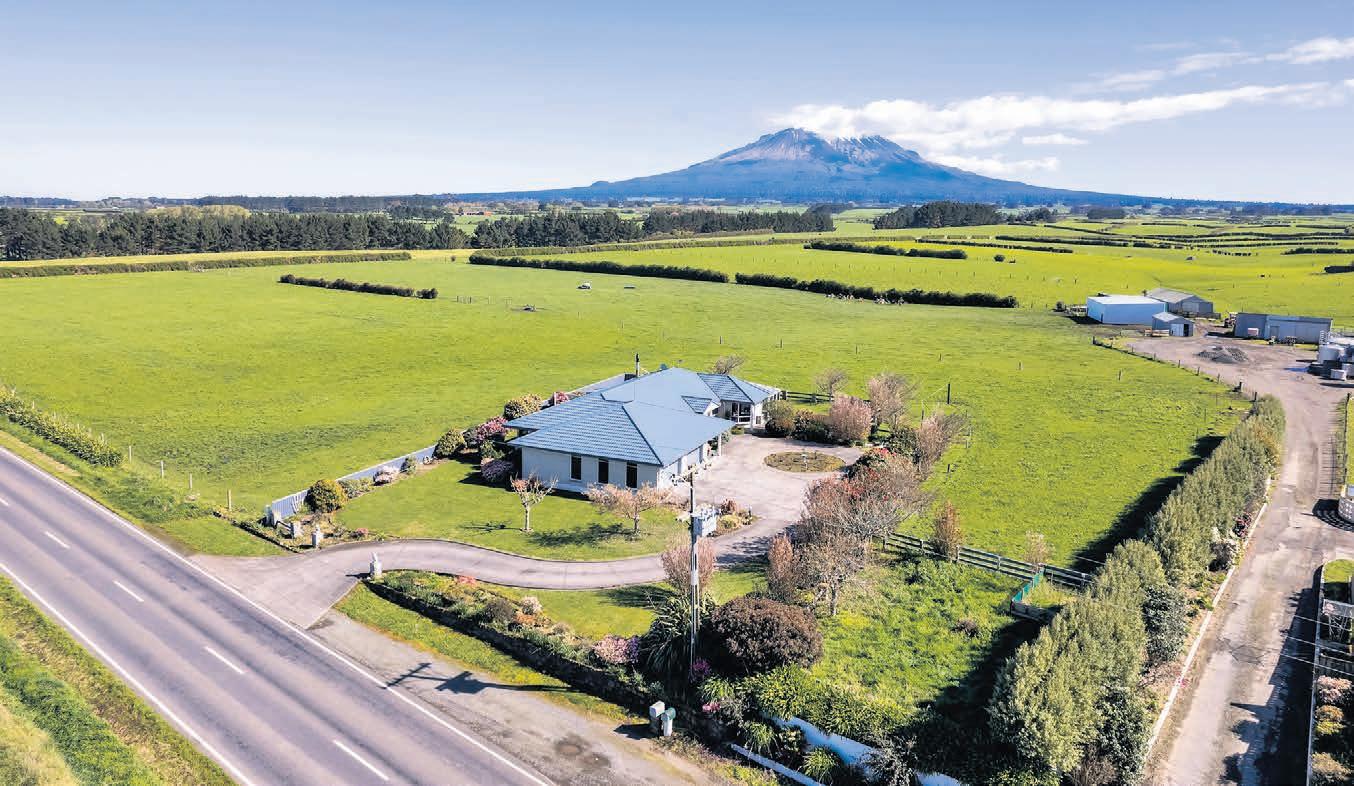
3 1
Tender closes 4.00pm, Tue 6th Dec, 2022, Property Brokers, 227 Devon Street East, New Plymouth View Wed 2 Nov 10.30 - 12.00pm
Wed 9 Nov 10.30 - 12.00pm Web pb.co.nz/NPR109579
Greg O'Byrne

M 027 598 3000 E greg.obyrne@pb.co.nz




Greg
O'Byrne
Kaponga
922
Eltham Road
920
Road Open
Property Brokers Ltd Licensed REAA 2008 | pb.co.nz Proud to be here 38
417 ha - Impressive self contained dairy farm
Makotuku Dairy impresses with scale and superior infrastructure.
This outstanding 417 ha self contained dairy farm located 21 km north east of the Dannevirke township, is highly regarded for its mostly flat to rolling contour, quality soils, excellent infrastructure and modern housing.


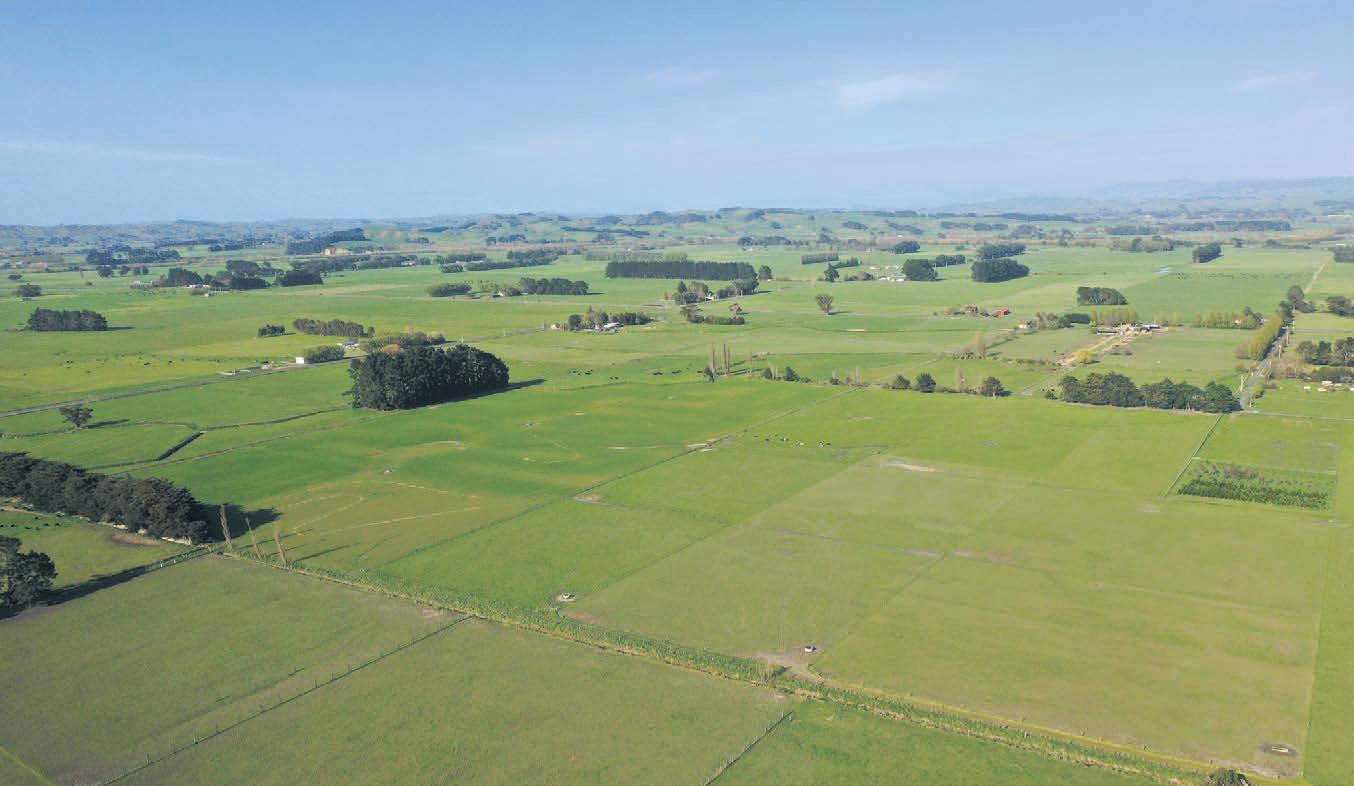



The farm infrastructure includes a 2007 commissioned 50 bail rotary shed with in shed feed system, 200 tonne silo with crusher, 400 cow feed pad, 2 x 350 tonne feed bunkers and centre pivot irrigation. Makotuku Dairy offers an exceptional opportunity to secure a farm with scale, quality infrastructure and increasing productivity.
Tender closes 2.00pm, Tue 15th Nov, 2022, Property Brokers office



4 Stanley Street, Dannevirke View By appointment Web pb.co.nz/DR103595
Jim Crispin M 027 717 8862 E jimc@pb.co.nz
Sam McNair
M 027 264 0002 E sam.mcnair@pb.co.nz
Fertile and flat with location - 122 ha
This former dairy property currently run as intensive bull finishing is located just 3 km to Woodville and is a 34 km drive over the saddle to Palmerston North. This well presented property has been through an extensive development program which includes investment in new pastures, drainage and subdivision. The farm is well subdivided by a range of electric and conventional fencing in good condition with a strategic race system for access to paddocks. With three points of road access the property provides future options for subdivision utilising the numerous records of title. Farm improvements include a disused 36 ASHB with modern effluent system including large storage dam with the former cow yard used as loading & drafting facilities with new Te Pari yards. Adjacent to the cowshed are ample sheds for storage & calf rearing and are complimented by other disused sheds in various locations. The property features a large four bedroom home with generous living areas and a swimming pool.
Tender closes 2.00pm, Wed 23rd Nov, 2022, to be submitted to Property Brokers, 129 Main Street, Pahiatua View By appointment Web pb.co.nz/PR107323
Jared Brock M 027 449 5496 E jared@pb.co.nz
Tararua
Ormondville 236 Tower Street
Tender
Woodville 168 Range Road
Tender
Property Brokers Ltd Licensed REAA 2008 pb.co.nz Proud to be here 39
Toki - 58 ha
Located equally between Pahiatua and Woodville and a 30 minute drive to Palmerston North is this smaller dairy unit which provides an excellent entry to the dairy industry or support/finishing property. The farm has recently had the fencing refurbished which is a mix of conventional roadside boundary fences and internal electric two wire fences in excellent order. The main homestead of four bedrooms and two bathrooms has been modernised over the years and features large outdoor decking providing views over the farm. The highly sought after fertile Manawatu and Heretaunga Silt Loam soils are irrigated via sprinklers providing optimum seasonal growth. The property features a good level of improvements to suit most farming practices including a 25 ASHB cowshed, feedpad, ample implement shedding and a large lockable workshop.
4 2 1

Tender closes 2.00pm, Thu 1st Dec, 2022, to be submitted to Property Brokers, 129 Main Street, Pahiatua View By appointment Web pb.co.nz/PR108001


Jared

M 027 449 5496 E jared@pb.co.nz

Waiwera Station - 674 ha

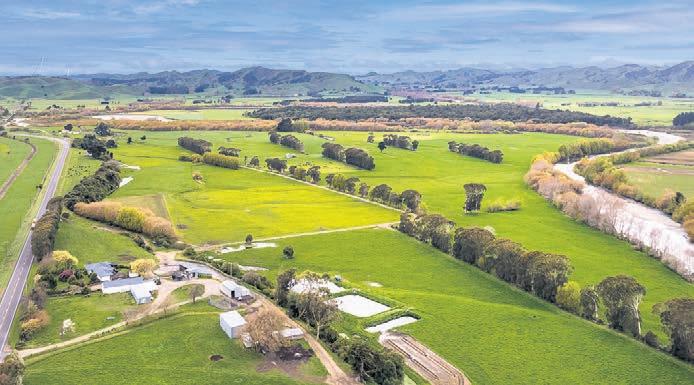

Well located just 26 km west of Pahiatua in a summer safe location and within commuting distance to the Manawatu or Wairarapa regions. The property offers great finishing capability with approximately half of the area easy country and of that about 200 ha suitable for cultivation. Currently operated as a sheep and beef breeding and finishing property, Waiwera has benefited from a long history of investment in fertiliser, fencing and pasture development. Three homes provide ample accommodation with the 4 bedroom main home being set in extensive grounds providing a superior main dwelling. A centrally located woolshed with covered yards (1,000 np) and cattle yards are well accessed by laneways and Kopikpiko Road. Further infrastructure includes two airstrips and bins, a second woolshed & ample shedding to complete. Originally 3 properties amalgamated consisting of 80 ha of bareland, 161 ha plus 3 bedroom home and 431 ha with the remaining infrastructure providing ample purchase options

Tender closes 2.00pm, Thu 8th Dec, 2022, to be submitted to Property Brokers, 129 Main Street Pahiatua
View By appointment
Web pb.co.nz/PR109618
Jared Brock M 027 449 5496 E jared@pb.co.nz


Jared Brock
Pahiatua
81051
State Highway
2
Tender
Brock
Pahiatua 1091 Kopikopiko Road
Tender
Property Brokers Ltd Licensed REAA 2008 | pb.co.nz Proud to be here 40
85.03 ha - Summer safe pastures
Located eight minutes' drive south of Eketahuna and twenty minutes north of Masterton, the 80 ha of effective grazing area on predominantly flat soils of Heretaunga, Matamau and Kopua silt loam. The 36 main paddocks are subdivided with an excellent standard of fencing. This is a fantastic opportunity to secure a smaller entry level farm with extensive infrastructure. Supporting the farms operation are a 5 ASHB milking parlor, a four bay implement shed and workshop, cattle yards and load out facilities. A two stand shearing shed, calf pen and other sheds that are strategically placed around the farm. An aesthetically eye catching farm with mature shelter belts throughout the property. The character four bedroom home has been modernised, the kitchen is central to the open plan living and dining areas which adjoin to the formal separate lounge making this ideal for entertaining. Want to enjoy farming on a smaller scale? Generate income alongside a great lifestyle? this is for you.





4 2
Tender closes 4.00pm, Wed 30th Nov, 2022, Property Brokers Ltd, 84 Chapel Street, Masterton View By appointment Web pb.co.nz/MR109575


Tony McKenna M 027 901 0246 E tonym@pb.co.nz
Te Apiti - 1,177 ha
Te Apiti is located 7.3 km from the Homewood coast, 50 minutes' drive east of Masterton. A mix of medium to steeper hill country, comprising a total of 1,177 ha. A third generation sheep and cattle store farm, Te Apiti offers a range of land use opportunities on a mix of sandstone, clay and argillite soils. Particular attention has been given to maintaining the excellent access, fencing and overall presentation of this property. Divided into two main blocks, comprising 658 ha in a mix of native bush and millable pines with some grazable areas. The main farming area of 517 ha is supported by five sets of satellite yards, airstrip, fertiliser bin and fantastic natural water sources and is subdivided into a total of 61 paddocks. A sound four bedroom family home with numerous station-style outbuildings. A four stand woolshed (500 night pen) and a large four bay implement shed with designated workshop and stables provide the infrastructure and platform for all buyers.
4 1
Tender closes 4.00pm, Wed 23rd Nov, 2022, Property Brokers Ltd, 84 Chapel Street, Masterton View By appointment


Web pb.co.nz/MR109316
Tony McKenna M 027 901 0246 E tonym@pb.co.nz
John Arends
M 027 444 7380 E johna@pb.co.nz
Eketahuna 19 Morgans Road
Tender
Te Wharau
937
Kaiwhata Road
Tender
Property Brokers Ltd Licensed REAA 2008 pb.co.nz Proud to be here 41
142.41 ha - Self contained dairy farm

This very well located property in Central Canterbury is only approximately 30 minutes to Christchurch and minutes to the rural town of Leeston. Special features of this farm is that it is totally self contained. Milking between 300-320 cows with average production over past five years of 115,000 kgMS. A very tidy 24 ASHB shed (4 with cell count monitors). Excellent range of farm sheds and very tidy five bedroom home. Approximately 90 ha of dairy platform and a further 53 ha of dairy support. Irrigation is pivot, lateral move and K-line from two wells. Very seldom do we get the opportunity to market a fully self-contained dairy unit. Take control of your cost...



Ida Valley 2319 Ida Valley-Omakau Road
Tender closes 12.00pm, Fri 25th Nov, 2022 (unless sold prior),
Property Brokers Ashburton

View By appointment Web pb.co.nz/AR105039
Foveran Station

Chris Murdoch M 027 434 2545
Tender
Foveran Station is situated in the Hakataramea Valley, South Canterbury, New Zealand. Expansive and unique best describes Foveran and its sister 'The Brothers' with 2,645 ha ranging from the valley floor to the upper foothills. The property is currently run as a renowned deer breeding, stud property and game park. It is also complimented with merino fine wool and beef production providing enviable scope and balance. Tailored with over 290 ha of spray irrigation with the ability to store over 500,000 m3, this property is set to provide the discerning buyer security in production and performance with multiple income streams. Foveran Station will impress beyond expectations.
Maungatua 171 Lee Canal Road, Taieri Plain
For Sale By Negotiation + GST (if any)
View By appointment Web pb.co.nz/OMR90908
Ross Robertson M 021 023 27220
Barry Meikle M 027 436 5131
John McCone M 027 221 9133



Deadline Sale
Well balanced Central Otago farm
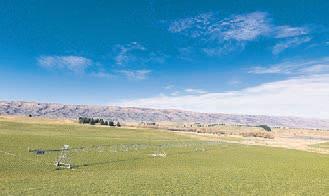

Property Brokers are privileged to offer for sale this 1,144 ha breeding and finishing sheep and beef unit located in the heart of the Ida Valley at 2319 Ida Valley-Omakau Road. Auripo consists of 154 ha irrigated flats, 736 ha non irrigated flats and 254 ha developed hill, making this an extremely well balanced farm. This conservatively farmed property wintered 4,800 1/2 bred ewes, 1,200 hoggets, 100 rams and killers, 235 trading cattle and also offers the options of further production. Improvements include two excellent family homes, workers cottage, woolshed and covered yards plus numerous farm buildings. Irrigation is predominantly by way of two centre pivots, K-line and contour.




3 1
Tender closes 12.00pm, Fri 2nd Dec, 2022, Property Brokers, 21 Macandrew Road, South Dunedin

By appointment Web pb.co.nz/DNR108152
Ray Kean M 027 435 7478
Helen Flintoff
027 367 4063
167.69 ha - High producing dairy farm



171 Lee Canal Road is located in the heart of the popular Taieri Plains, being within easy travelling distance to Dunedin City and Dunedin Airport, consisting of 167.69 ha of high producing fertile soils making this an extremely good semi self-contained dairy unit. Production in 2021/22 season reached 259,000 kgMS from 490 cows milked resulting in a per ha production of 1,545 kgMS per titled ha. 400 cows wintered on platform, plus 200 calves reared with milk from silo up until weaning. Improvements include a 40 ASHB dairy shed with a full mill and feed system in dairy shed, calving pad, numerous implement and calf sheds, fully renovated four bedroom villa.
4 2
Deadline Sale closes Thursday 1st December, 2022 at 12.00pm,

Brokers, 21 Macandrew Road, South Dunedin
appointment
pb.co.nz/DNR109417
Irwell
1267
Leeston Road
Tender
Hakataramea 860 McHenrys Road
View
M
Property
View By
Web
Ray
Kean M 027 435 7478 Property Brokers Ltd Licensed REAA 2008 | pb.co.nz Proud to be here 42
616.83 ha - Glenpark Station


Glenpark Station is only 7 km to Palmerston and 56 km to the port of Otago. A comfortable four bedroom home with mature gardens, the yards have a shearing shed, deer shed, implement shed, and more. This property will give you really good options to run all stock types as the farm is majority deer fenced. Currently running sheep, beef, cull cows, and some deer, with good laneway access through the farm. A lot of the steeper parts of the land have been prepared for the planting of forestry to capture the options of carbon and timber. The vendor has done a lot of re-grassing.

Tender closes 2.00pm, Thu 1st Dec, 2022, Property Brokers, 83 Sophia Street, Timaru


View By appointment
Web pb.co.nz/TMR107832
Shane Spiers M 027 3801 801





Michael Richardson M 027 228 7027
4.0 ha - 'Garden of international significance' Trott's Garden is a renowned garden of international acclaim and has won numerous awards. Formal English gardens segmented by hedges into various styles, water gardens and woodlands. The property has simple open spaces bordered with trimmed hedging, incredible perennial borders, extensive knot gardens, exotic specimen trees, rhododendron plantings throughout the garden. Striking panoramas in every direction. Forty plus years in the making. The Church is an ideal wedding venue with a banquet marquee next door sited centrally and privately for that special day. A 1920's 3 bedroom homestead with some renovations and range of older outbuildings including the old cobbled stables.
4 1 2 1
Tender closes 12.00pm, Wed 30th Nov, 2022 (unless sold prior), Property Brokers Ashburton View By appointment Web pb.co.nz/AL107431




027
Whakarora - 545 ha - Dairy support and finishing

Well located just 38 km from Masterton and 13 km to Tinui Village is Whakarora, currently operated as a large scale dairy support and beef fattening unit. The property has been through an extensive development program over the last 8 years with investment in fertility, subdivision, access and cultivation. With over 370 ha having been cultivated and currently in improved pastures, a further 80 ha is estimated as being suitable for cultivation providing further opportunity. The farming improvements are well suited to the current farming practice which include a metalled central lane providing all weather access, a large set of cattle yards at the entrance to the property as well as a smaller set in the centre of the property. Further infrastructure includes an airstrip and bin, older woolshed and an arrangement of shedding. Accommodation is well provided for with a 4 bedroom home and a cottage. Whakarora provides a turn key finishing or dairy support property in a sought after location.
Tender closes 4.00pm, Tue 29th Nov, 2022, to be submitted to NZR, First Floor, 16 Perry Street, Masterton 5810
View By appointment Web pb.co.nz/MR107543
 Palmerston 714 Palmerston-Dunback Road
Tender
Palmerston 714 Palmerston-Dunback Road
Tender
Property Brokers Ltd Licensed REAA 2008 pb.co.nz
Allenton 371 Racecourse Road, RD 6
Tender
Property Brokers Ltd Licensed REAA 2008 pb.co.nz
Paul Cunneen
M
432 3382 Tinui 253 Bute Road
Property Brokers Ltd Licensed REAA 2008 | pb.co.nz Jared Brock M 027 449 5496 E jared@pb.co.nz Dave Hutchison M 027 286 9034 E dave@nzr.nz Blair Stevens M 027 527 7007 E blair@nzr.nz nzr.nz/RX3423051 NZR Real Estate Ltd Licensed REAA 2008 Jared Brock M 027 449 5496 E jared@pb.co.nz 43 FARMERS WEEKLY – farmersweekly.co.nz – October 31, 2022Real Estate 43
Large scale dairy operation with multiple options
This large-scale dairy farm was converted in 2014. Currently milking 1340 cows, both herds producing 348,015kgMS last season on a milking platform of approx. 510ha. This substantial operation presents a rare opportunity to further develop whilst utilising the current dairy setup. This property offers modern infrastructure with a 60-bail rotary and a 44 ASHB, both with in-shed feeders, automatic cup removers, protrack systems and lined effluent ponds. Centrally raced, with reticulated water supply and a high standard of fencing throughout. There are substantial calf-rearing facilities and six dwellings. Contour is easy rolling to some moderate sidelings. Properties of this size, with multiple income streams, are extremely rare. The money has been spent and the opportunity is now yours. There will be multiple options to purchase, contact today. bayleys.co.nz/2450984
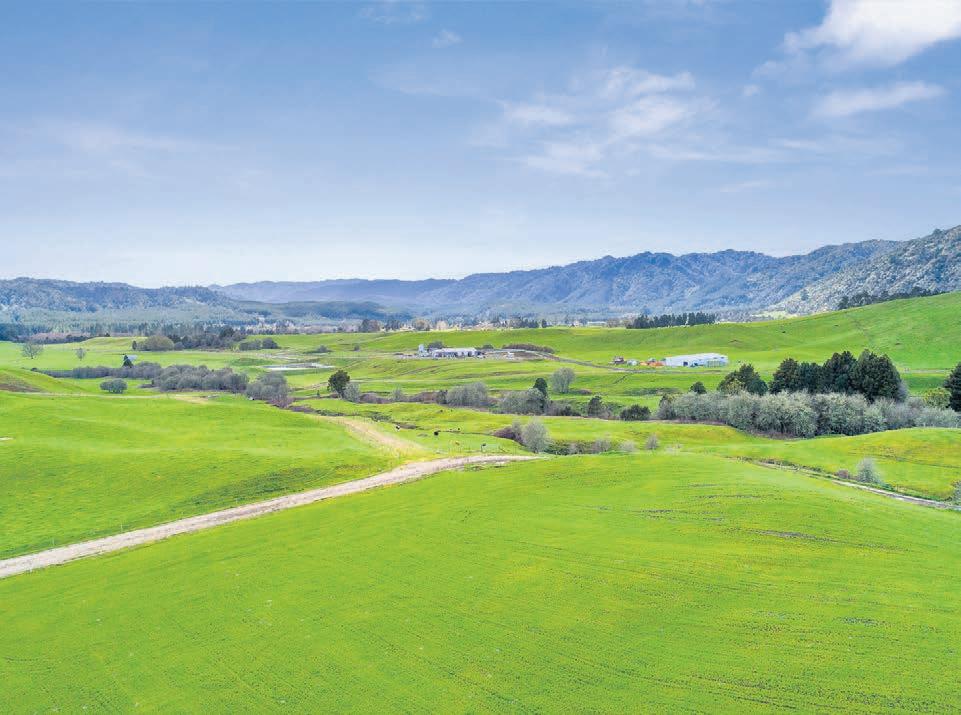


907.54ha
Tender
bayleys.co.nz
Whakatane 283 Minginui Road
(will not be sold prior) Closing 4pm, Thu 24 Nov 2022 1092 Fenton Street, Rotorua View 11am-12pm Thu 3 Nov & Thu 10 Nov Derek Enright 027 496 3974 derek.enright@bayleys.co.nz SUCCESS REALTY LIMITED, BAYLEYS, LICENSED UNDER THE REA ACT 2008
44
Reap the rewards
A fantastic opportunity to purchase scale with a great set-up. The 72 bale Don Chapman rotary is centrally located. Previously 1,100 cows have been milked with production to 350,000kgMS. Production last season was 287,972kgMS from 920 cows (once a day from September). The dairy has a Read Industrial milking plant, ACR’s, vertical discharge chiller unit along with a Packo ice bank water chill. Effluent passes through a concrete sump/ stone trap and pumped to a four million litre Tasman tank with a 1.7 million litre lined pond as a back-up. Effluent is pumped through hydrants and 90mm underground piping to a travelling irrigator covering up to 140 hectares. Water is sourced from the Waihou River with two separate intakes. There is a separate intake for the irrigation system. Ample support buildings, including four dwellings, provide the necessities to run this great operation. bayleys.co.nz/2313812
259ha 4 2 1
Tender (unless sold prior)
Closing 2pm, Wed 23 Nov 2022
96 Ulster Street, Hamilton View 12-1pm Thu 3 Nov Mike Fraser-Jones 027 475 9680 mike.fraserjones@bayleys.co.nz

429ha self contained, award winning dairy farm




Located only 13km North East of Dannevirke in the popular Raumati area, Te Maunga Farm is an award winning self contained farm boasting mainly flat and easy contour. A very well set up farm, improvements include a large four bedroom homestead, three further dwellings, 50 bail rotary shed and a massive number of calf rearing, hay and implement sheds. Being fully self contained the profitability is very good, with the approximately 258 hectare milking platform and approximately 95 hectares of support land. Races are well maintained with the help of the red metal pit and lime quarry. A three year average production of 237,178kg/MS (once a day) as a result of an excellent fertiliser history and pasture renewal programme with 125 hectares irrigated via centre pivot and Bosch long laterals this is a consistent performer. This low cost farming operation is very profitable. bayleys.co.nz/2853055


429ha
Tender Closing 4pm, Wed 16 Nov
17 Napier Road, Havelock North
Tony Rasmussen 027 429 2253 tony.rasmussen@bayleys.co.nz
Monteith 027 807
monty.monteith@bayleys.co.nz
bayleys.co.nz
Te Aroha 227 Endowment Road
SUCCESS REALTY LIMITED, BAYLEYS, LICENSED UNDER THE REA ACT 2008
FINAL NOTICE
Dannevirke
569
Maunga
Road
2022
View by appointment
Monty
0522
EASTERN REALTY LTD, BAYLEYS, LICENSED UNDER THE REA ACT 2008
45
No frills production unit
With most of the capital expenditure having been done, excellent farm layout and good infrastructure, this unit provides a great productive and sustainable dairy operation. Currently milking 330 cows through a 30ASHB with an average production of 142,464kgMS over the past three seasons. An extensive array of shedding includes a large five bay O’Neil half round barn with leanto, three bay workshop, and multiple calf rearing sheds near the working hub plus three dwellings. The effluent system provides ample storage and containment when required then fed to a travelling irrigator covering 35 hectares. Water is sourced from a bore with submersible, pumped through a sand filter to a manacon and pressure fed around the farm to all paddocks. bayleys.co.nz/2313598


132.88ha 3 3
Auction (unless sold prior) 11am, Thu 17 Nov 2022
96 Ulster Street, Hamilton View 12-1pm Wed 2 Nov
Mike Fraser-Jones 027 475 9680 mike.fraserjones@bayleys.co.nz Scott Macdonald 027 753 3854 scott.macdonald@bayleys.co.nz
SUCCESS REALTY LIMITED, BAYLEYS, LICENSED UNDER THE REA ACT 2008
Morrinsville 220 Valintine Road



Great value low-cost production
This dairy unit, between Morrinsville and Hamilton, is run by a very good share milker in conjunction with the adjoining 128 hectare (more or less) dairy unit. A very good 20ASHB is well located. Around 220 cows are milked in a short season from the end of August until the end of March, and this shed begins when cows ‘in milk’ are sufficient to make it sensible. Production has been to 77,000 kgsMS and achieved with minimal inputs of 300 kgs DM per cow. Support buildings adjacent to the dairy include a five bay half round barn and spacious three bay gable shed for calf rearing plus a very tidy three-bedroom home. This is definitely a low-cost production unit which is still going through its final stages of development and will present a great buying opportunity. bayleys.co.nz/2313738




105.91sqm 3 1
Auction (unless sold prior) 11am, Thu 24 Nov 2022
96 Ulster Street, Hamilton View 12-1pm Wed 2 Nov
Mike Fraser-Jones 027 475 9680 mike.fraserjones@bayleys.co.nz
SUCCESS REALTY
Great value opportunity
This dairy unit between Morrinsville and Hamilton is a low cost production unit. This all flat consolidated peat loam farm is currently milking approximately 420 cows with production to 145,000kgMS. The 36ASHB is well located with all support buildings and infrastructure handy to the dairy plus two dwellings. This excellent and great value opportunity is currently run by a very good sharemilker in conjunction with an adjoining 105 hectare (more or less) dairy (same owners) which is also for sale so over the years there has been some interaction between the farms in stock and management movements. This unit/these units have very good infrastructure and are just waiting to be taken to the next level. Definitely a great opportunity and well worth a visit. bayleys.co.nz/2313743


128.39ha 4 1
Auction (unless sold prior) 11am, Thu 24 Nov
Ulster Street, Hamilton
12-1pm
Fraser-Jones 027 475 9680 mike.fraserjones@bayleys.co.nz
Raglan 20 Waimaori Road
Quality farm, so many options
Options abound with this impressive 142.9ha (more or less) dairy unit. Contained within five titles, the property enjoys easy contour, modern improvements and solid production. Operated under the same family for nearly 50 years with the neighbouring 120ha dairy farm also for sale. An excellent 20ASHB is well located along with ample support improvements. Fully self contained, the farm supplies Fonterra with a three year average of 86,551kgMS milking 250 cows. The tidy dwelling features three generous bedrooms, open plan kitchen, dining and lounge and adjacent double garage. The location of the property is second to none, close to the main arterial routes and an easy drive to Raglan. bayleys.co.nz/2313830

142.9238ha
Tender (unless sold prior) Closing 4pm, Tue 22 Nov 2022 96 Ulster Street, Hamilton View 11am-12pm Thu 3 Nov & Thu 10 Nov or by appointment Peter Kelly 027 432 4278 peter.kelly@bayleys.co.nz Angus Kelly 021 165 5031 angus.kelly@bayleys.co.nz
BAYLEYS,
ACT 2008
bayleys.co.nz FINAL NOTICE
Orini 261 Flaxmill Road
LIMITED, BAYLEYS, LICENSED UNDER THE REA ACT 2008
Morrinsville 1477D Piako Road
2022 96
View
Wed 2 Nov Mike
SUCCESS REALTY LIMITED, BAYLEYS, LICENSED UNDER THE REA ACT 2008
SUCCESS REALTY LIMITED,
LICENSED UNDER THE REA
46
Buy one or buy both
This 120ha (more or less) farm is located in the popular dairying area of Te Mata and offers production and lifestyle in one well presented property. The adjoining 142ha dairy farm under the same ownership is also available for sale. The 32ASHB is complete with modern plant and supplies 105,870kgMS to Fonterra milking 285 cows. Ample improvements include calf and implement shedding, bore water and single pond effluent system irrigating 26ha. Soils are a mix of loam and ash as dictated with gently rolling contour. Accommodation is well catered for with a three bedroom home and two bedroom dwelling. Amenities, services and quality schooling are within easy reach with the central location seeing Raglan only 15km away and Hamilton just 45kms. bayleys.co.nz/2313829


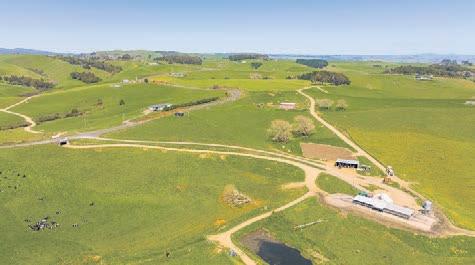

NEW LISTING
120.0311ha
Tender (unless sold prior)
Closing 4pm, Tue 22 Nov 2022
96 Ulster Street, Hamilton View 12.30-1.30pm Thu 3 Nov & Thu 10 Nov or by appointment Peter Kelly 027 432 4278 peter.kelly@bayleys.co.nz Angus Kelly 021 165 5031 angus.kelly@bayleys.co.nz
SUCCESS REALTY LIMITED, BAYLEYS, LICENSED UNDER THE REA ACT 2008
Exclusive large land package
Offering investment return, farming with an eye to the future and horticulture or equine opportunities. Location is a key factor with the main entrance off Cambridge Rd and a second entrance in the middle of suburbia on Shadbolt Drive. Comprising 72.2ha (more or less) in two titles, explore development potential with the property dual zoned with 2.9ha large lot residential. Supplying 108,000kgMS to Fonterra, the versatile land comprises fertile pastures and high producing volcanic ash soil plus mineralised peat across predominantly flat land. The quality dwelling provides comfortable family living with spacious and sun filled living areas that flow seamlessly to the outdoor living space. bayleys.co.nz/2313835
72.747ha 5
Auction (unless sold prior)
11am, Thu 1 Dec 2022 96 Ulster Street, Hamilton View 1-2pm Wed 2 Nov & Wed 9 Nov or by appointment Peter Kelly 027 432 4278 peter.kelly@bayleys.co.nz Angus Kelly 021 165 5031 angus.kelly@bayleys.co.nz
SUCCESS
Okoroire 14 Lake Road
Step into prime Waikato
A desirable combination of quality land located in the popular Okoroire district offers a first farm opportunity or a dairy support to compliment a larger dairy operation. Currently farmed in conjunction with an additional 11ha lease on a neighbouring property (not available) and has been milking 270 cows, producing a five-year average of 130,000kg/ms. The diary is a 24 ASHB with the convenience of a drafting system, meal feeders and a 16 16T silo. Support buildings include a haybarn and five bay implement shed with concrete floor. Effluent storage is presently on a neighbouring farm however vendor will establish a new lined effluent The farm is complimented by two well-maintained homes. Location is great with Matamata a 12-minute drive away. bayleys.co.nz/2400505
Puketotara 487 Pekanui Road
Stunning way to start your rural day
Rarely do all the stars align when it comes to purchasing rural property. On 235 ha (more or less), two titles and centrally located with an equal distance from Otorohanga and Te Awamutu, this is in prime dairy farming county. With production over five years averaging 143,900 kgMS, milking 460 cows through a modern 40 ASHB, everything is made easy with extensive infrastructure including feedpad, maize bunker and three dwellings, the largest of which sits on its own title. A deep well and spring ensure quality water is guaranteed all year round. An aesthetically pleasing property with riparian plantings, native and specimen trees dotted around the property. bayleys.co.nz/2313865

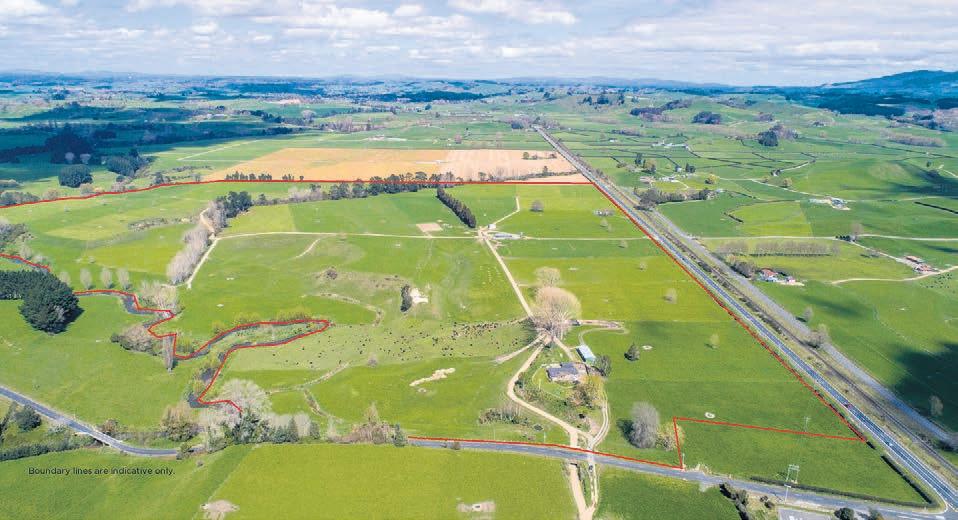




235.08ha
Tender
peter.kelly@bayleys.co.nz
angus.kelly@bayleys.co.nz
bayleys.co.nz
Raglan 49 Te Papatapu Road
Boundary lines are indicative only
Cambridge 3652 Cambridge Road
REALTY LIMITED, BAYLEYS, LICENSED UNDER THE REA ACT 2008
Boundary lines are indicative only
75.3ha Auction (unless sold prior) 11am, Thu 1 Dec 2022 96 Ulster Street, Hamilton View by appointment Neville Jacques 021 774 190 neville.jacques@bayleys.co.nz SUCCESS REALTY LIMITED, BAYLEYS, LICENSED UNDER THE REA ACT 2008
3
(unless sold prior) Closing 2pm, Tue 6 Dec 2022 96 Ulster Street, Hamilton View 11am-12pm Wed 2 Nov Peter Kelly 027 432 4278
Angus Kelly 021 165 5031
SUCCESS REALTY LIMITED, BAYLEYS, LICENSED UNDER THE REA ACT 2008
47
Te Rauamoa Farm
One of the best farms around with great infrastructure, easy contour and facilities to cater for all weather conditions and ease of management making this a very desirable unit. The effective dairy platform is approximately 176 hectares. The 36ASHB is centrally located with well formed races fanning out in both direction to 71 paddocks. Around 420 cows have been milked with production to 203,358kgMS. There is an extensive array of support buildings including two dwellings. The water system comprises a bore with submersible pumping to multiple tanks and pressure pumped to troughs in all paddocks. A top class sharemilker has been in place for eight years and would be a great addition to any investment.
bayleys.co.nz/2313739
Matapu 834 Skeet Road
Golden opportunity on Golden Mile
Coming to the market for the first time in over 45 years, properties of this calibre are a rare commodity. Located in Matapu, it is arguably the creme de la creme when it comes to dairy farming addresses. Consisting of 73.4ha (more







238.91ha 4 2
Tender (unless sold prior)
Closing 2pm, Thu 8 Dec 2022 96 Ulster Street, Hamilton View 12-1pm Tue 1 Nov Mike Fraser-Jones 027 475 9680 mike.fraserjones@bayleys.co.nz
SUCCESS REALTY LIMITED, BAYLEYS, LICENSED UNDER THE REA ACT 2008
Dairy farm with scale and location
Previously milking 800 plus through a 48-ASHB with a five year rolling average of 303,000kgMS. The contour is predominately rolling with steeper sideling’s with a milking platform of 280ha and the balance being used for grazing stock and 30ha planted in trees. A central race system provides access throughout the property and water is supplied via three bores. The infrastructure and systems throughout the farm is excellent, including an inshed feed system and a large calf-rearing facility. Three dwellings and a large implement shed complete this property. This is a rare opportunity to purchase a quality dairy farm with proven production and multiple titles with various options to purchase. bayleys.co.nz/2450977

342ha
Tender (unless sold prior)
Closing 4pm, Thu 17 Nov 2022
1092 Fenton Street, Rotorua View 11am-12pm Wed 2 Nov & Wed 9 Nov or by appointment Derek Enright 027 496 3974 derek.enright@bayleys.co.nz

SUCCESS
73.49ha 4
Tender (unless sold prior) Closing 1pm, Wed 30 Nov 2022 15 Courtenay Street, New Plymouth View 11am-12pm Tue 1 Nov Peter Kelly 027 432 4278 peter.kelly@bayleys.co.nz John Blundell
bayleys.co.nz
Te Awamutu 2838 State Highway 31, Kawhia Road
Rotorua 385 Whirinaki Valley Road
REALTY LIMITED, BAYLEYS, LICENSED UNDER THE REA ACT 2008
027 240 2827 john.blundell@bayleys.co.nz SUCCESS REALTY LIMITED, BAYLEYS, LICENSED UNDER THE REA ACT 2008 SUCCESS REALTY TARANAKI LTD, BAYLEYS, LICENSED UNDER THE REA ACT 2008
or less) the property offers two titles, flat contour, and quality soils. Purchase both or separate titles, being the 53.2 ha block with dwelling and farm infrastructure, or the 20.26 ha block of bare land. Supplying Fonterra, the farm milks 225 cows through a 21 ASHB shed and produces 100,000kgMS. Neatly divided into 28 paddocks connected to a central race, good infrastructure and supplied by the Inaha water scheme, make viewing this trophy farm a priority. bayleys.co.nz/2313873 Taihape Mangaohane Station, 1957 Mangaohane Road 4,840ha Tender Closing 4pm, Wed 7 Dec 2022 17 Napier Road, Havelock North View by appointment Tony Rasmussen 027 429 2253 tony.rasmussen@bayleys.co.nz Pete Stratton 027 484 7078 peter.stratton@bayleys.co.nz EASTERN REALTY LTD, BAYLEYS, LICENSED UNDER THE REA ACT 2008 BARTLEY REAL ESTATE LTD, BAYLEYS, LICENSED UNDER THE REA ACT 2008 Scale, contour, development 4,840 hectare iconic sheep and beef station • Superb mix of contour: 800 hectares flat, 991 hectares rolling and 1,175 hectares easy • Very high level of subdivision and productive improvement Excellent water supply reticulated to 320 troughs • Consistently carrying circa 40,000 quality stock units • Quality station infrastructure and buildings Nestled between the Rangitikei River and the Ruahine Forest Park, just some 100 kilometres east of Hastings and Napier Inspections by qualified purchasers only. bayleys.co.nz/2853087 48
Taihape 101 Mangapapa Road
Rawhiti - breeding and finishing
800 hectares (more or less) in a superb location just off State Highway 1, south of Taihape, featuring large areas of cultivated contour, a grand villa renovated in 1994, and a 280ha deer unit.
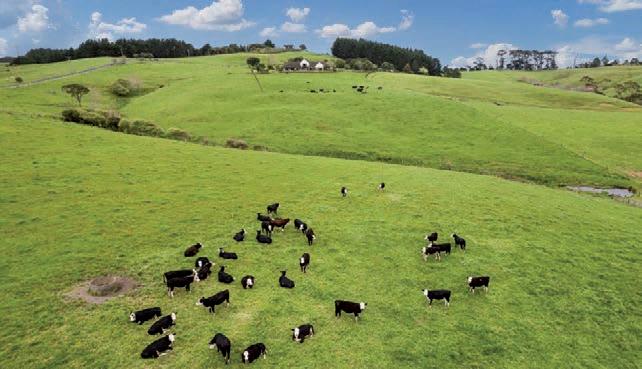



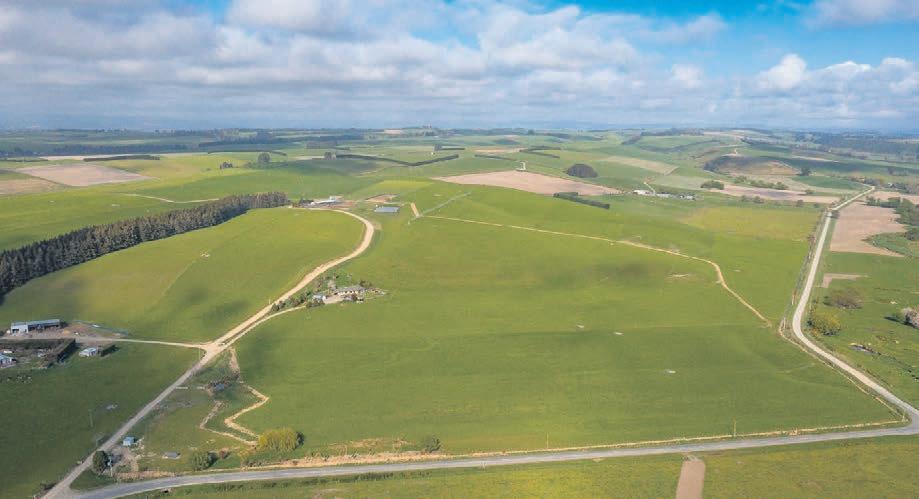

Three distinct blocks; Mangapapa Road boasts 338ha, the fourbedroom homestead, five stand woolshed and managers home plus large areas of cultivated contour. This adjoins the Papakai Road block of 127ha with new sheep and cattle yards. 334ha on Torere Road has an intensive deer operation with a purpose-built deer shed, three-bedroom cottage and sheep facilities. Rawhiti's 100 paddocks, easy contour and high fertility allows for versatility, finishing most progeny alongside a velvet operation. bayleys.co.nz/2900518
800.2454ha
Tender (unless sold prior)
Closing 2pm, Thu 1 Dec 2022 PO Box 8, Taihape View by appointment Pete Stratton 027 484 7078 peter.stratton@bayleys.co.nz BARTLEY REAL ESTATE LTD, BAYLEYS, LICENSED UNDER THE REA ACT 2008

NEW LISTING

Canterbury 359 Goodwin Road, Temuka
Well equipped dairy operation
Located between Temuka and Geraldine, this property is a wellequipped, substantial dairy operation which is performing well with a budgeted annual production of circa 140,000KgMS. At approximately 103.22 hectares, the property is milking 345 cows through the well-maintained 30ASHB dairy (with room to expand to 36AS). The shed is centrally located for ease of stock movement and includes in-shed feeding plus automated cup removers improving efficiency. The well-maintained infrastructure includes two main houses and a separate single person’s quarters. The proximity to both Timaru and Geraldine and the variety of nearby schooling options make it a great fit for a family and attractive to staff. bayleys.co.nz/5519722
103.2201ha
Set Sale Date (unless sold prior) 12pm, Mon 21 Nov 2022 3 Deans Avenue, Chch View by appointment Craig Blackburn 027 489 7225 craig.blackburn@bayleys.co.nz Hamish Lane 027 685 6204 hamish.lane@bayleys.co.nz
WHALAN AND PARTNERS LTD, BAYLEYS, LICENSED UNDER THE REA ACT 2008
Barfoot & Thompson Limited
Licensed REAA 2008
49 FARMERS WEEKLY – farmersweekly.co.nz – October 31, 2022Real Estate 49






50





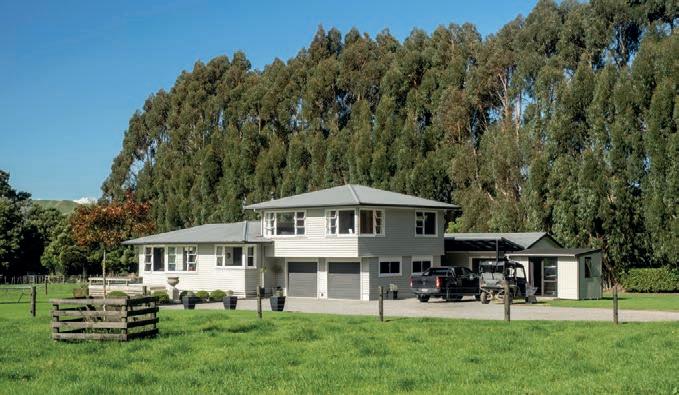
51











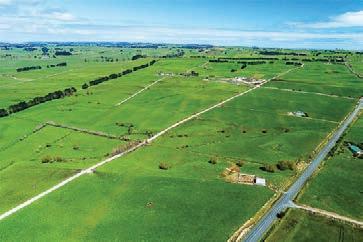





455 WEST COAST ROAD, TE KOPURU 6 2 4 We put you first After many years farming the owners have decided to change from dairy farming. This gives you a chance to buy this spectacular 184ha dairy farm which you would be proud to own. The farm has 3 titles and is showing excellent profit margins. Buildings include a 33 ASHB dairy shed, 300 cow feed pad, 2 x 3-bedroom homes plus a large range of sheds and 3 x deep water bores. It also has horticulture possibilities due to an immense dam being constructed close by for irrigation. Shares can be bought per Ha of irrigation. This should add considerably to the value of the land in the future. Excellent fishing opportunities at Glinks Gully within 10 minutes drive from the farm. Price: $7,250,000 +GST (if any) View Online: MRU2678 Call Gary or Debbie to for a confidential discussion or to view. 09 439 7295 l 09 431 1016 110 Victoria Street, Dargaville 143 Hurndall Street, Maungaturoto www.roperandjones.co.nz Dargaville Realty Ltd Licensed Agent REAA 2008 LK0113608© 52 FARMERS WEEKLY – farmersweekly.co.nz – October 24, 2022 Real Estate52
Multiple Purchasing Options Available






Bound to get interest either as a larger self-contained dairy, an affordable medium sized farming operation or perhaps an attractive good contoured grazing/ dairy support property. This unique, aesthetically appealing property, situated 17 kms West of Te Kuiti is a must view this spring and will be sold with the following purchasing options.
- 225.4002 Ha: The whole farm, self-contained dairying with all titles
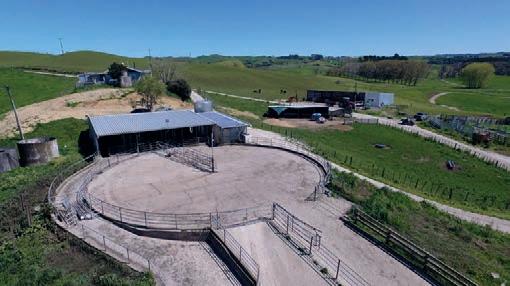
infrastructure.
For Sale Tender closes Thurs 24 Nov, 1pm (unless sold prior)
View Open Days: Wed 2 Nov, Wed 9 Nov, Wed 16 Nov, all 11.00 - 1.00pm
blueribbonharcourts.co.nz/property/OH9688
Large Dairy Without The Large Price Tag
If enviable contour, complaint effluent storage and a good track record of production up to 176,000Kg/ms sounds like a bit of you, then a price guide under $30,000/ha will probably sound even better.

Located just 17 kilometres East of Te Kuiti the challenge is on to find a better farm for this kind of money.

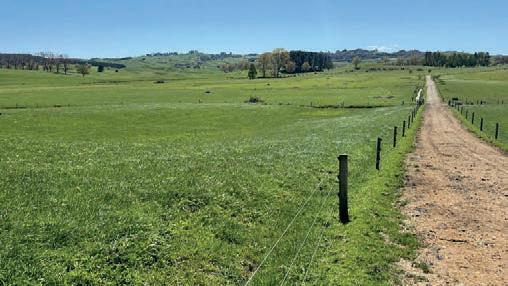



- 214 .9184 hectares (513 acres)
- Milking 497 cows
For Sale Tender closes Thurs 24 Nov, 1pm (unless sold prior)
View Open Days: Tues 1 Nov, Tues 8 Nov, Tues 15 Nov, all 11.00 - 1.00pm
blueribbonharcourts.co.nz/property/OH9684








Kerry Harty M 027 294 6215 P 07
- 107.1991 Ha: As a smaller more affordable
unit with a good balance of contour
- 79.3806 Ha: Bare land ideal grazing block or first farm

- 38.0350
Good contoured support block
With relocating vendors who are genuinely on the market and realistic about price expectations, there is no better time to buy than now. The adjoining dairy farm of 214 Ha is also for sale and


appeal
- 170 hectares flat, balance gentle to medium rolling - 40 Bale Rotary Cowshed
- Good standard of support buildings
- Two x three bedroom dwellings Seriously for sale and not just testing the market with the option to buy as a going concern with the herd. The adjoining farm of 225 hectares is also for sale with multiple land area options available for those also looking to combine for a larger self-contained farming operation.
Blue Ribbon
the price indicates,
Unit of 111 Hectares
is seriously
market and with a three year average production of 85,000 Kg/Ms represents true value for
- 111.1644
and
dairy
Ha :
will
to those looking for scale and a larger dairying venture. Te Kuiti 788 Troopers Road Blue Ribbon Realty Limited Licensed Agent REAA 2008 Kerry Harty M 027 294 6215 P 07 873 8700 E kjharty@harcourts.co.nz
Te Kuiti 135 Whataroa Road
Realty Limited Licensed Agent REAA 2008
873 8700 E kjharty@harcourts.co.nz For Sale $2,500,000 plus GST if any View Open Homes: Fri 4 Nov, 11.00 - 12.00pm, Fri 11 Nov, 11.00 - 12.00pm blueribbonharcourts.co.nz/property/OH9672 Priced to Sell Dairy
As
this property
on the
money.
ha more/less (274 acres) ( subject to survey) - 83 ha utilised as dairy platform milking 230 cows - 25 ha of recently planted Manuka/native & pine areas - Good standard of support buildings - 20 aside cowshed - Spacious two storey four bedroom home Whether it be farmed as a dairy or perhaps a change to an easy-care dairy support/grazing or finishing block, this property is a “must view” this spring. Located within a 30 minute commute to Otorohanga or Te Awamutu and handy to Hamilton. Otorohanga 67 Okoko Road 4 2 1 2 111 Ha Blue Ribbon Realty Limited Licensed Agent REAA 2008 Kerry Harty M 027 294 6215 P 07 873 8700 E kjharty@harcourts.co.nz Accelerating success. 53 FARMERS WEEKLY – farmersweekly.co.nz – October 31, 2022Real Estate 53



colliers.co.nz Accelerating success. 54
Trelinnoe Station is situated in the Te Pohue district in Hawke’s Bay, approximately 45 kilometres north west from Napier City. The pastoral farm is utilised for a mixture of sheep and beef breeding and finishing. The 1,117.8891 ha property is contained within five titles and offers a good balance of contour. There is a full complement of infrastructure which includes the main four bedroom homestead, three bedroom cottage, singleman’s quarters, four stand woolshed, implement sheds/workshop and supplementary farm buildings. Quality stock handling facilities are strategically placed around the property for easy management. A strong fertiliser history and continued investment into subdivision has seen the property benefit with increased productivity gains in recent years. Given the location, standard of infrastructure and years of capital investment this property is ready for the new owner to secure a quality asset.
Hadley Brown 027
hadley.brown@colliers.com



also
of developed accretion. Also available is a 98 ha runoff adjoining the milking platform. 80% of this block having easy/rolling contour, separate water system, fertility and new grasses, it compliments the dairy unit or an outstanding finishing/run off block. This property will be offered for sale as a whole or in the two options.
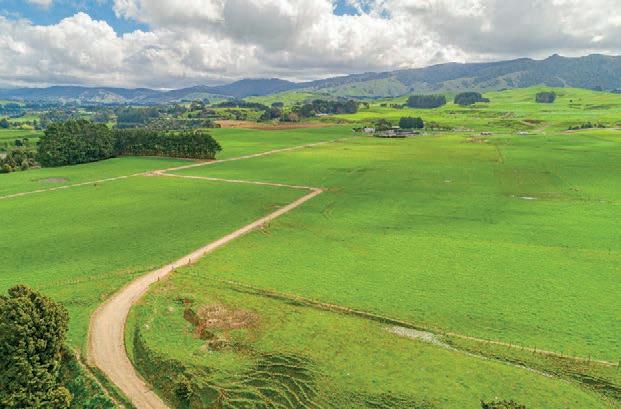





Deadline Sale closing Thurs 8 December 2022 at 2pm (plus GST if any) 556-558 Old Coach Road, Te Pohue, Hastings, Hawke’s Bay CRHB Limited Licensed REAA 2008 Land Area: 1,117.8891 ha (more or less) Sheep/Beef breeding/ finishing station Multiple dwellings Great infrastructure Trelinnoe Station colliers.co.nz/p-NZL67020685 Sheep/Beef New Listing Tender closing Thurs 24 November 2022 at 2pm (plus GST if any) 275 Kopikopiko Road, Pahiatua, Tararua CRWAI Limited Licensed REAA 2008 Land Area: 221.0708 ha (more or less) Dairy unit Two three bedroom homes One of the Best Dairy Jason Waterman 027 376 8313 jason.waterman@colliers.com Rob Deal 027 241 4775 rob.deal@colliers.com High performing, top level infrastructure, free draining soils and regular rainfall. The farm has a milking platform of 140 ha, all in new high performing grasses and milking 400 cows including some winter milking. Production averaging 171,250kgms. A 40 AS Herringbone Shed built in 2016 with all the latest technology. Great support shedding and two good homes. Flat contour over two terraces, all new water systems, multiple metal pits for races and extensive native plantings in retired areas all add to the appeal of this property. With a titled area on the dairy farm of 122 ha there is
25 ha
442 3539
Accelerating success. colliers.co.nz colliers.co.nz/p-NZL67021043 High producing land New Listing 55




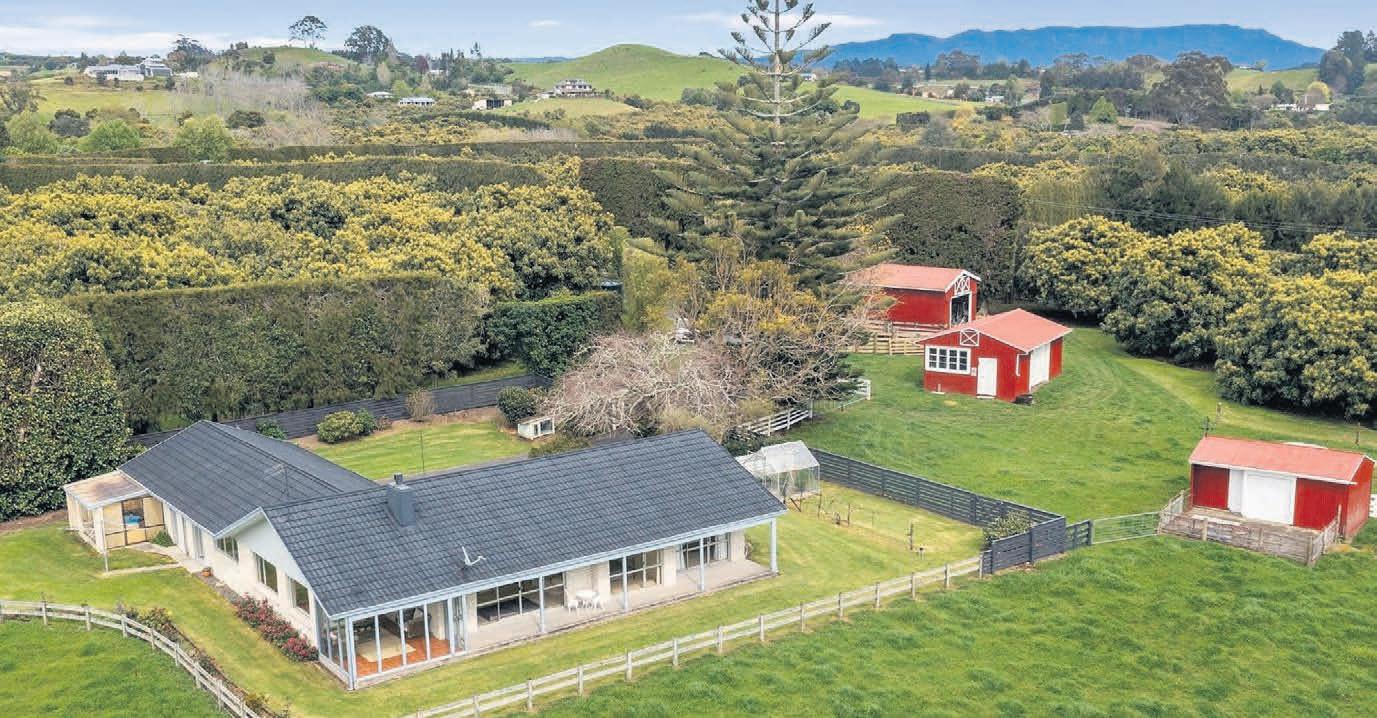



AUCTION OPEN DAY PRL Enterprises Ltd t/a PRL Rural Licensed REAA2008 MREINZ 021 373 113 bjp@prl308.co.nz • 499 Waipapa Road, R D 7, Te Awamutu • 311.97 hectares • contour varies from flat land to easy rolling to steeper sidlings • soil types include volcanic ash & silt loams with a rhyolite quarry as a bonus • attractive woodlots, amenity plantings, specimen trees & pockets of native bush • 3 year average 877 cows produced 325,293 kgs ms per season • outstanding centrally located amenities include a 60 bale rotary dairy shed; large areas of concrete; feed pad; feed bunkers; solids separating effluent systems; 10m litre lined effluent pond; extensive calf rearing facilities + implement shedding • 4 good dwellings including 2 x 3 brm homes, 1 x 4 brm home & 1 x 2 brm cottage, all nicely situated with sunny, north facing views to Maungatautari Mountain • easy access to attractive Lake Arapuni for water sports, boating and fishing • highly recommended for those seeking growth and investment opportunities Ph Brian Peacocke 021 373 113 TradeMe search # R1415 Sale by Auction: Wed, 23 November from 1.00pm A quality larger scale dairy unit featuring excellent centrally located facilities, situated midway between the Arohena & Wharep apa districts, 34 kms south east of Te Awamutu. Te Awamutu District Carlyle Farm Open Day: Thurs, 3 Nov 11.00am 1.00pm eves.co.nz Boundary lines are indicative only New Listing Whakamarama 571 Old Highway 3 2 1 2 eves.co.nz/ebt13795 Top Performing Avocado Orchard with Three Titles Owner is retiring from this low altitude, multi award winning avocado orchard. Spread over three titles, this is being sold as one lot. Unencumbered Te Puna Inlet views, fantastic pasture for those beefies, and a manicured orchard that has been grown and nurtured from scratch by current owner. Title one is 7.5280 hectares (approx.), add to that, the two more flat lifestyle sections - 5,002sqm (approx.) and 4,995sqm (approx.) that are currently planted and run as part of the orchard and you have a great asset for a capital gain return in the future. All trees at final spacing year on year average of over 23+ tonnes per hectare (approx.). Asking Price $4,600,000 + GST (if any) View 11am-12pm Sun 6 Nov & Sun 13 Nov or by appointment Danny Redwood 021 0259 2351 danny.redwood@eves.co.nz EVES Realty Ltd, Licensed under the REAA 2008 56 FARMERS WEEKLY – farmersweekly.co.nz – October 24, 2022 Real Estate56
Trophy Farm Opportunity


'Chequers' - Outstanding 872 hectare trophy farm opportunity. Traditionally and conservatively run sheep and beef breeding and finishing property with top infrastructure on the market for the first time in 47 years. Most of the farm is flat to easy rolling contour, running up to some steeper hill country. Well maintained laneways make farm management a pleasure. All farm buildings and amenities are catered for to a high level plus an excellent airstrip. Fantastic water supply. For many decades the vendors have carried out a planting programme which has resulted in an ambient park-like setting. The magnificent five-bedroom homestead features natural timbers, exposed beams, rustic brickwork and imported hand-painted ceramics. The homestead is set in English inspired gardens with a native bush backdrop. There are also two other worker houses maintained to a high standard. There is a house situated by a swan filled lake which is, quite simply an exquisite place. A once in a lifetime opportunity to purchase one of the region's most prestigious farms.
pggwre.co.nz/TEK36682
Tomarata Dairy Unit
186 hectares in three titles in the heart of arguably Northland's most productive dairy




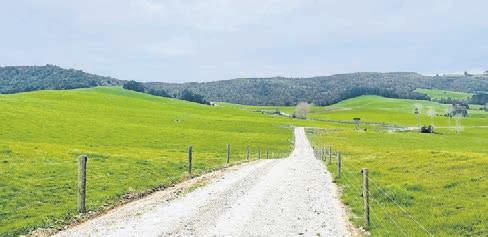




this is a highly impressive unit producing a best of 265,000kg MS from approximately 500 autumn
cows. A significant winter milk contract has secured a premium to the current owners, along with feed pads and facilities ensuring maximum feed utilisation. Three homes and significant farm infrastructure with a fully upgraded water system and excellent access tracks. Opportunities to
a
a balance
steeper
TENDER
(Unless Sold By
Closes 11.00am
Friday 25 November
VIEW 10.00-1.00pm
Treaty)
Wednesday 2 & 9 November E pwylie@pggwrightson.co.nz M 027 473 5855


suitable
290ha*
PGG Wrightson Real Estate Limited, licensed under REAA 2008 Helping grow the country
FINAL NOTICE ARIA, WAITOMO,
WAIKATO
1741
Tikitiki Road
Private
Peter Wylie pggwre.co.nz/WEL36730 EXCLUSIVE
TOMARATA, AUCKLAND 29
Dunning Road Exceptional
Approximately
area,
dairy
finalise a wetland covenant to create three additional lifestyle titles with consent already in place. 3 1 1 SALE BY SET DATE Plus GST (if any) (Unless Sold Prior) Closes 2.00pm Friday 11 November VIEW By Appointment Only E teamscott.tapp@pggwrightson.co.nz M 021 418 161 Scott Tapp pggwre.co.nz/ASH36616 EXCLUSIVE HAZELBURN, SOUTH CANTERBURY 'Rockpool' - 290 Hectares* 'Rockpool' is located in the Raincliff area and is currently run as a deer unit but would be
for cattle and sheep. Farming approximately
(freehold and accretion land) and subdivided into 44 paddocks, including
64ha trophy/game park. 'Rockpool' has
of contours and soils with flats, rolling hills and
country with picturesque limestone outcrops. Good deer handling facilities with hydraulic crush and various other implement/support buildings. Access throughout the property via a central laneway with arterials. *Subject to issue of new titles for accretion claim. DEADLINE PRIVATE TREATY Plus GST (if any) Closes 1.00pm Tuesday 22 November E simon.richards@pggwrightson.co.nz M 027 457 0990 Simon Richards E rford@pggwrightson.co.nz M 027 433 6883 Robin Ford For more great rural listings, visit www.pggwre.co.nz Helping grow the countrywww.pggwre.co.nz PGG Wrightson Real Estate Limited, licensed under the REAA 2008 NZ’s leading rural real estate company RURAL | LIFESTYLE | RESIDENTIAL 57











































SCAN HERE TO VIEW MAGAZINE PGGWRE.CO.NZ PGG Wrightson Real Estate Limited, licensed under REAA 2008 Find your new view! The Spring 2022 edition of Property Express is out now, showcasing the best rural properties in New Zealand. 58
30th
2nd
11.00am
Robert Dabb 027
robert@rals.co.nz

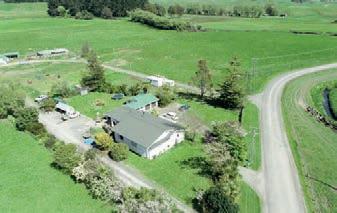





Richard Anderson 027 543





PGG
Wrightson
Real Estate Limited, licensed under REAA 2008 Helping
grow the country
pggwre.co.nz/ASH36655 EXCLUSIVE NORTH OTAGO 390 Steward Road 'Simpson Park' - A Tier One Dairy Unit - 149ha 'Simpson Park' is a tier one spray irrigated, high performing dairy unit in the heart of the Waitaki Plains. A 54-bail rotary dairy shed, equipped with all modern technology. Irrigated by one of the cheapest irrigation schemes in the country - Lower Waitaki Irrigation - sitting at around $100/ha water costs. Two Valley pivots covering approximately 110ha with the remainder by K-Line irrigation. Consistently milking between 560-570 cows (wintering 580 cows. Three homes. A consistent, low-cost, farm with ideal location. Seldom do properties of this calibre appear - this is a must view property. DEADLINE PRIVATE TREATY Plus GST (if any) (Unless Sold Prior) Closes 12.00pm Friday 11 November M 027 215 8666 Dave Heffernan M 021 918 233 Dan van der Salm RURAL | LIFESTYLE | RESIDENTIAL Rural and Lifestyle Sales.com Ltd Licensed REAA 2008ruralandlifestylesales.com For Sale By Tender Horowhenua Dairy Opportunity - 154.7 ha (subject to survey) Kuku Beach Road, Ohau Farm Open Farm
1610 richard@rals.co.nz
255 3992
• Farms of this scale and quality are rarely available in the Horowhenua, located 10km south of Levin • Consented to milk 620 cows averaging 304,500kgMS • Currently peak milk 600 cows including 40% autumn calving • Highly productive Kairanga silt loam and Tukituki stony silt loam soils • 50 bail rotary dairy with a concrete platform Feed pad and large capacity silage bunker are adjacent to the dairy Tenders Close:
November 2022 at 56 Stafford St, Feilding. View: Wednesday
& 9th November
- 1.00pm Property ID RAL958 59 FARMERS WEEKLY – farmersweekly.co.nz – October 31, 2022Real Estate 59 Advertise with us Reach hundreds and thousands of rural New Zealanders every week Call Grant 027 887 5568
RAMS










RURAL















www.dyerlivestock.co.nz Ross Dyer 0274 333 381 STOCK REQUIRED 1YR FRSN BULLS 250 300kg 2&3YR ANG/ANGX STEERS 480 580kg 60 MA COWS & CALVES 2YR ANG & XBRED HEIFERS 400 470kg STOCK FOR SALE 50 1YR SPECKLE PARK STEERS 300kg 40 1YR SPECKLE PARK HEIFERS 290kg E info@rdlfinance.co.nz A Financing Solution For Your Farm SOUTHDOWNS 4 Purebred predictability www.southdownsheep.org.nz LK0112870© 60 MPlace/Livestock 06 8356863 . 021 061 1800 www.craigcojetters.com powered by Guaranteed Performance Save time and Money . Flystrike and Lice cost $$$ Quick to Set up . Easy to use . Job Done CRAIGCO SHEEP JETTERS SHEEP JETTERS SINCE 1992 CRAIGCO SENSOR JET Robust construction. Auto shut gate. Adjustable V panels Total 20 Jets. Lambs 5 jets. Side jets for Lice. Davey Twin Impeller Pump. 6.5 or 9.0 Hp motors 06 8356863 . 021 061 1800 www.craigcojetters.com powered by Guaranteed Performance Save time and Money . Flystrike and Lice cost $$$ Quick to Set up . Easy to use . Job Done CRAIGCO SHEEP JETTERS SHEEP JETTERS SINCE 1992 CRAIGCO SENSOR JET Robust construction. Auto shut gate. Adjustable V panels Total 20 Jets. Lambs 5 jets. Side jets for Lice. Davey Twin Impeller Pump. 6.5 or 9.0 Hp motors06 8356863 . 021 061 1800 www.craigcojetters.com powered by Guaranteed Performance Save time and Money . Flystrike and Lice cost $$$ Quick to Set up . Easy to use . Job Done CRAIGCO SHEEP JETTERS SHEEP JETTERS SINCE 1992 CRAIGCO SENSOR JET Robust construction. Auto shut gate. Adjustable V panels Total 20 Jets. Lambs 5 jets. Side jets for Lice. Davey Twin Impeller Pump. 6.5 or 9.0 Hp motors CRAIGCO SENSOR JET Guaranteed Performance Save time and money. Flystrike and Lice cost $$$ Quick to set up. Easy to use. Job done 06 835 6863 • 021 061 1800 www.craigcojetters.com Robust construction. Auto shut gate. Adjustable V panels Total 20 jets. Lambs 5 jets. Side jets for lice. Davey Twin Impeller Pump 6.5or 9.0 Hp motors LK0113335© Heavy duty, long lasting incinerators Three sizes available Phone 021 047 9299 irontreeproducts.co.nz LK0112754© Contact us to discuss your requirements anytime. Competitive Rates Kitset Sheds & Fencing Supplies. Phone: 027 963 5396 Email: trutimbernz@gmail.com LK0113245© NZ’s Top 200* FE Rams for Wiltshires (*FE top 11% nprove™ , 197 x 2021 rams) Leading the development of Shedding Sheep in NZ. • First (1995) to performance select on Animalplan/SIL • First (2006) to Ramguard™ Facial Eczema Test, currently 0.53 • First (2012) to Carla™ antibody parasite test • Hoof Score (2016) every year, every toe, every hogget ram and ewe, scored in a roll over crate Viewing at Matamata. Private sales. Taupo Auction. Arvidson Wiltshires arvidsonz@gmail.com 027 2771 556 or 09 296 0597 LK0113535© Marketplace60 Livestock DOLOMITE For a delivered price call .... NZ’s finest BioGro certified Mg fertiliser 0800 436 566 ATTENTION FARMERS ATTENTION FARMERS FLY OR LICE problem? Electrodip – the magic eye sheepjetter since 1989 with unique self adjusting sides. Incredible chemical and time savings with proven effectiveness. Phone 07 573 8512 www.electrodip.com ANIMAL HANDLING GOATS WANTED www.drench.co.nz farmer owned, very competitive prices. Phone 0800 4 DRENCH (437 362). ANIMAL HEALTH DOGS FOR SALE DOGS FOR SALE 30c/40c PER KG dags fadges/bales. Replacement woolpacks. PV Weber Wools. Kawakawa Road, Feilding. Phone 06 323 9550. MORTGAGE RESCUE. If a mortgagee sale is looming on your horizon, contact us as soon as! Justyn and Rodney - mortgagerescue@ protonmail.com 5-YEAR-OLD Heading bitch, suit small place. Very well bred. 6-MONTH-OLD Heading dog pup, great breeding. Phone 027 243 8541. Taihape. HUNTAWAY AND HEADING dogs. Deliver NZ wide. www.youtube.com/user/ mikehughesworkingdog/ videos - 07 315 5553. 12 MONTHS TO 5½-yearold Heading dogs and Huntaways wanted. Phone 022 698 8195. DOGS WANTED ACCURATE AND PRACTICAL farm maps showing area sizes of paddocks and vegetation. Visit farmmapping.co.nz for a free quote. FARM MAPPING WANTED NATIVE FOREST FOR MILLING also Macrocarpa and Red Gum New Zealand wide. We can arrange permits and plans. Also after milled timber to purchase. NEW ZEALAND NATIVE TIMBER SUPPLIERS (WGTN) LIMITED 04 293 2097 Richard. FORESTRY GOATS WANTED. All weights. All breeds. Prompt service. Payment on pick up. My on farm prices will not be beaten. Phone David Hutchings 07 895 8845 or 0274 519 249. Feral goats mustered on a 50/50 share basis. NZ KELP. FRESH, wild ocean harvested giant kelp. The world’s richest source of natural iodine. Dried and milled for use in agriculture and horticulture. Growth promotant / stock health food. As seen on Country Calendar. Orders to: 03 322 6115 or info@nzkelp.co.nz HORTICULTURE LEASE LAND WANTED SHEEP AND BEEF block. 1500-5000su. Mid 30s Couple. Phone 027 498 9293. BROOKLAND SIMMENTAL, LBW, short gestation, bulls, suitable for beef or dairy, EBV’s available. Phone 06 374 1802. LIVESTOCK FOR SALE FALLOW DEER for sale. 40 years breeding. Manawatū area. Phone 021 886 065. WILTSHIRES-ARVIDSON. Self shearing sheep. No1 for Facial Eczema. David 027 2771 556.
FOR SALE HAIR SHIRE® Low input meat rams! www.organicstud. nz 027 225 5283. tim@ organicstud.nz
MASSAGE RELAXING FULL BODY massage in rural Ohaupo. Unwind. De-stress. www. ruralmassage.co.nz or call 027 529 5540. WHAT’S SITTING IN your barn? Don’t leave it to rust away! We pay cash for tractors, excavators, small crawler tractors and surplus farm machinery. Ford –Ferguson – Hitachi – Komatsu – John Deere and more. Tell us what you have no matter where it is in NZ. You never know.. what’s resting in your barn could be fattening up your wallet! Email admin@ loaderparts.co.nz or phone Colin on 0274 426 936 (No texts please) WANTED TO BUY STOP BIRDS NOW! ZON BIRDSCARER EARMARKERSHOOF TRIMMER LK0113663© FOR ONLY $2.30 + gst per word you can book a word only ad in Farmers Weekly Classifieds. Phone Debbie on 0800 85 25 80. BOOK AN AD. For only $2.30 + gst per word you can book a word only ad in Farmers Weekly Classifieds section. Phone Debbie on 0800 85 25 80 to book in or email wordads@globalhq.co.nz Advertise with us Call Debbie 027 705 7181
SALE TALK
The preacher’ Sunday sermon was “Forgive your enemies”.

He asked how many of the congregation have forgiven their enemies? About half held up their hands. He then repeated his question. Now about 80% held up their hands. He then repeated his question once more. All responded , except for one elderly lady. “Mrs Johnson, are you not willing to forgive your enemies? “
“I don’t have any.” she says.
“Mrs Johnson that is very unusual. How old are you?” “Ninety three,” she replied.


“Mrs Johnson please come down in front and tell the congregation how a person cannot have an enemy in the world?”
The little sweetheart of a lady tottered down the aisle and said “I outlived every one of them!”
Here at Farmers Weekly we get some pretty funny contributions to our Sale Talk joke from you avid readers, and we’re keen to hear more!






If you’ve got a joke you want to share with the farming community (it must be something you’d share with your grandmother...) then email us at: saletalk@agrihq.co.nz with Sale




in the subject line and we’ll print it and credit it to you.



2nd ANNUAL RAM SALE Friday 11th November 2022, 1pm On farm at 15 Arnold Rd, RD 25, Pohokura, Stratford PLUS Open day, showcasing both Beef Shorthorn and Wiltshire studs from 11am Auctioneer: JEREMY NEWELL P: 06 762 8080 ❘ 027 664 8835 e: jeremy@jrnlivestock.co.nz Vendor: AARON & AMANDA HARRIS P: 06 762 3520 e: millvalleynz@gmail.com n 20 x 2th PB Wiltshire rams to be auctioned n Over 11 years of breeding – SIL recorded progeny since 2012 n Hassle-free, hill country rams n No shearing, no dagging LK0113360© BEEFGEN is currently purchasing animals for live export for December delivery: 2021 Holstein Friesian Heifers (chance mated) 2022 Autumn Born Holstein Friesian Heifers Please contact your local agent for further information. BEEFGEN : Brian Pearson : 021 0907 1688 BEEFGEN : Jess Crow : 022 074 1210 BEEFGEN Office : 06 927 7154 LK0113337© 26th Annual NI Perendale Ram Sale 1pm Monday 18th November 2019 Te Kuiti Saleyards 70 Top Rams for sale by 9 North Island Breeders Rams all selected from top 20% of Vendors Flock New Venue Contact: Sale Secretary: Cam Heggie PGG Wrightson Philip Brandon Ph: 027 501 8182 Ph:07 873 6313 E: pa.brandon@farmside.co.nz Catalogue available online 12th Nov: www.perendalenz.com 29th Annual NI Perendale Ram Sale 12 Noon Monday 14th November 2022 Te Kuiti Saleyards 70 Top Rams for sale by 10 North Island Breeders Contact: Sale Secretary Philip Brandon 07 873 6313 e: pa.brandon@farmside.co.nz Cam Heggie, PGG Wrightson 027 501 8182 Catalogue available online 8th November www.perendalenz.com LK0113314© Check out Poll Dorset NZ on Facebook LK0112874© 61 MANA STUD PERFORMANCE SHEEP GENETICS Malcolm Wyeth 06 3727875 On Farm 127 Admiral Road, Gladstone, Masterton. Inspection invited from 1.30pm 2022 RAM SALE Tuesday 15th November at 1.30pm Rams selected on structural soundness and high performance data 50 Stud and Top Commercial Romney Rams to be sold at Auction Romney and Romdale rams also available for private sale SIL Maternal worth indexes from 2500 to 3300 All enquiries: Please contact Malcolm Wyeth 027 252 7151 Tom Suttor/PGG Wrightson 027 446 9967 or Simon Smith/PGG Wrightson 027 444 0733 LK0113487©FE tested rams at .52mg/kg LWT available for sale FARMERS WEEKLY – farmersweekly.co.nz – October 31, 2022Livestock 61
Talk
Conditions apply












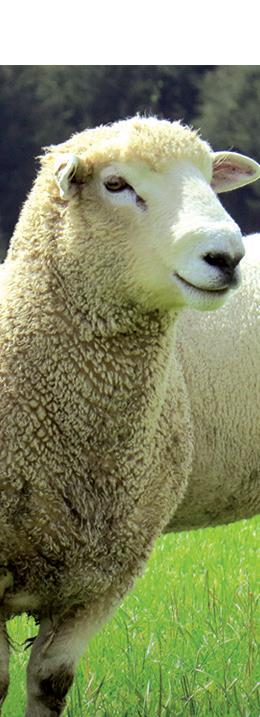















www.nikaucoopworth.co.nz 09 2333 230 100 RAMS FOR SALE Friday 4 Nov 2022 at 12.30pm, Frankton Saleyards The ewes are very maternal with exceptional eczema tolerance and have great milking ability. We get a high scanning percentage every year and draft 85% of terminal lambs and 30% of Coopworth male lambs off mum to the works mid-November at good weights. Kate has done a lot of work on improving the quality of feet and we rate her rams above the rest. Roger and Bronwyn Crawford, Matira. Thursday 17th Nov 2022, 10am-3pm Nithdale Station 338 Nithdale Rd, Gore (meet at the woolshed) RAM VIEWING OPEN DAY INCLUDING ELITE RAM SALE Register at www.yourbid.co.nz (TOP 10%) 62 FARMERS WEEKLY – farmersweekly.co.nz – October 31, 2022 Livestock62 Stewart Morton 06 328 5772 • Andrew Morton 06 328 2856 RD 54 Kimbolton, Manawatu • pakiroms@farmside.co.nz • 170 clients last year purchased or leased Paki-iti rams • Bred on a 870ha hard hill country property rising up to 637m asl (2090f asl) • Breeding for constitution, longevity, structural soundness and then performance • Constitution = moderate frame, deep bodied type of sheep • Performance = Growth, fertility, survival, meat yield, incorporating FE tolerance and parasite resistance • 11 years of breeding Romtex, utilizing a stabilised SIL recorded Romtex flock • Paki-iti maternal Romtex offer faster growth rates and higher meat yields • Romtex rams sold as 22th rams PAKI-ITI ROMNEY & ROMTEX PAKI-ITI ROMNEY PAKI-ITI ROMTEX Visit paki-iti.co.nz to view our breeding programs LK0113283© 38 Tuesday 22nd November 2022, 12pm Te Kūiti Selling Centre ANNUAL SALE OF PERFORMANCE RAMS Many reports of farmers getting "good lambs" by our rams. GENETICS All our sale rams, Suffolk, Poll Dorset and X-Bred have been bred and selected for ancestry, performance, longevity and soundness (foot score). Sires are in the NZTW top 20 for their respective breeds. PERFORMANCE PROOF th


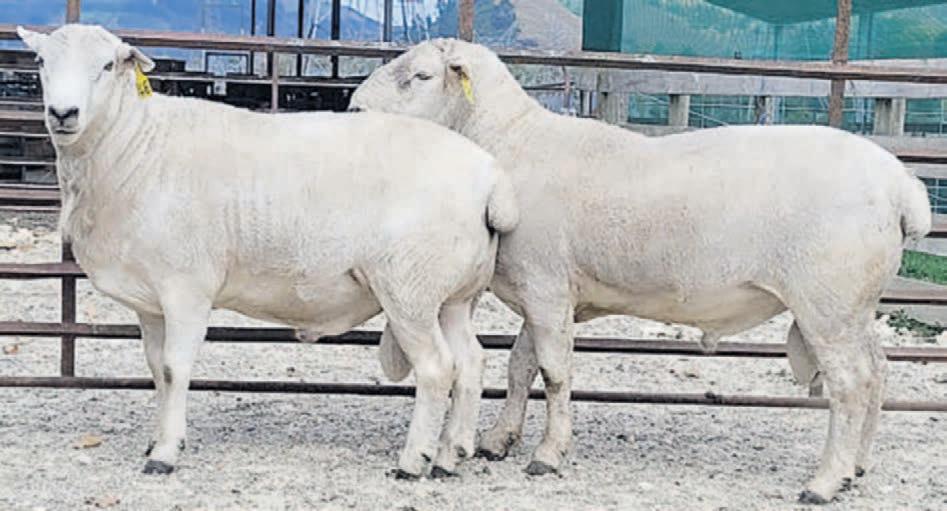

































FOR YOUR NEAREST SUFFOLK BREEDER VISIT nzsheep.co.nz/suffolk SUFFOLK – NO. 1 TERMINAL BREED THAT WILL GIVE YOUR LAMBS 100% BLACK COLOUR BLACK COLOUR = PROVEN STORE PREMIUMS it’s real, just ask your stock agent BLACK COLOUR = 100% HYBRID VIGOR that’s more growth, more meat and more live lambs SU F F O LK S EAL OF P E R FORMAN C E BLACK COLOUR MATTERS That’s more money for you, proving that BLACK COLOUR DOES INDEED MATTER when using terminal sires KAAHU GENETICS KAAHU WHITE™ MATERNAL SHEDDING RAMS 3rd ANNUAL SALE SIL Recorded... All traits measured and recorded Top Production Low input extremely high output Our ewes pregnancy scanned 197% this year Carcass meaty and high yielding EMA muscle scanned & Sires CT scanned for yield Great eating quality Eczema tolerance Ramguard testing @.37 Murray Sargent 027 392 7242 | murraysargent@hotmail.com Cam Heggie - 027 501 8182 Alan Aldridge - 027 472 0901 Sale Day - Friday November 18th, 1pm Approximately 150 2th rams for sale by Auction Approximately 50 maiden 2th ewes for sale by Auction On farm @154 Whakamaru Road, SH 30, Whakamaru. Livestreamed on Open Day - Thursday 3rd November, 1pm - 3pm KAAHU GENETICS Find us on Upcoming Auctions TUESDAY 1 NOVEMBER 9am Heartland Bank Young Auctioneer Competition THURSDAY 3 NOVEMBER 1pm Waimai Romney Elite Ram Sale FRIDAY 4 NOVEMBER 10am Palmerston 2nd Spring Cattle Sale 12pm St Leger Romney Ram Sale 12.30pm Nikau Coopworth Ram Sale Regular Livestream coverage of eight North Island Saleyards. bidr.co.nz Pure-bred Beltex rams Result of embryo transplant First time in North Island Thursday, 10 November, 1.00pm Viewing from 11.00am 506 Batley Road, Maungaturoto, Northland ¾ Beltex Cross Rams 50% Beltex Cross Rams 50% Beltex Suffolk Cross Rams Higher dressing yield and meat ratio Enquiries to: Rex Roadley 09 4318 266 or 021 08155123 rex.roadley@farmside.co.nz Or PGG Wrightson Livestock Agents Cam Heggie 0275 018 182 (Genetics) Darryl Williamson 0294 329 285 Livestreamed on LK0113603© BATLEY BELTEX RAM SALE Helping grow the country Friday 4 November 10.00am | Palmerston Saleyards All cattle yarded overnight and sold over scales Comprising Approx: • 10 Angus 2yr Steers 10 Speckled Park X 2yr Steers 15 Angus & Angus X 2yr Heifers 6 Hereford/Friesian X 2yr Heifers • 90 Stabilizer 1yr Steers • 42 Simmental 1yr Steers 26 Simmental/Hereford X 1yr Steers 20 Simmental/Devon X 1yr Steers 170 Angus & Angus X 1yr Steers 50 Hereford 1yr Steers 14 Simmental 1yr Heifers 30 Charolais X 1 yr Heifers 122 Angus & Angus X 1yr Heifers • 11 Angus/Hereford 1st X 1yr Heifers • 21 ¾ Angus X 1yr Heifers • 52 Hereford 1yr Heifers Gerard Shea (PGW) 027 442 5379 Callum Stalker (RLL) 027 473 0846 PALMERSTON 2ND SPRING CATTLE SALE NZ’s Virtual Saleyard For more info - bidr.co.nz 63 FARMERS WEEKLY – farmersweekly.co.nz – October 31, 2022Livestock 63 • No dagging • No shearing • No dip, drench or chemicals since 1989 Also Tufty® (polled Highland) bulls, cows and calves available. HARDY, LOW INPUT EASY CARE MEAT SHEEP Hair Shire® Stud Ram Sire “Gladiator” progeny for sale Ph 027 225 5283 www.organic-rams.co.nz tim@organicstud.nz Hair Shire® Rams LK0113656© Helping grow the country Key: Dairy Cattle Sheep Other Tuesday, 8th November 2022, 11am Approx 1800 Cattle comprising: 20 MA Cows & Calves @ foot 330 2yr Ang Strs 40 2yr Bulls 175 2yr Hfrs 700 1yr Ang Strs 120 1yr Exotic Strs 100 1yr Bulls 120 1yr Ang Hfrs(Capital Stock) 230 1yr Hfrs Several lines of quality home bred hill country cattle. Enquiries to: Jamie Hayward 027 434 7586 Chris Hurlstone 027 598 6542 MATAWHERO CATTLE SALE GISBORNE: Matawhero Combined Ram Sale Friday, 25th November 2022 Mangahauhau Hampshire Ram Sale Friday, 2nd December 2022 Te Ruanui Poll Dorset Ram Sale Friday, 9th December 2022 EAST COAST: Turiroa Onfarm Ram Sale, Wairoa Thursday, 8th December 2022 Enquiries to: Emma Pollitt 027 597 5821 UPCOMING RAM SALES
Spring bull sales produce good averages and highlights

a top of $8200 and an average of $2879.
WAIKATO yearling bull sales produced the highlights of the spring calendar, led by $21,500 for Twin Oaks S053, bought by Wyuna Station at Glenorchy.
Vendors Roger and Susan Hayward, at Te Akau, sold 48 of 49 Angus bulls offered and made the season’s highest average of $6820.
Angus yearling bulls averaged in the range $3000 to $3600 for most vendors, with standouts for Turihaua at $6388, Glen R at $5823, Stokman at $5737 and Komako at $5473.
Within the Angus NZ ranks, Te Atarangi in Northland had the largest offering with 115 bulls, 112 of which were sold, and the average $3884 was $200 a head better than in 2021.
Rockley Angus, at Balfour in Southland, had one of the latest sales, on October 19, and topped the spring highlights with $24,000 paid by Blair and Paige Crawshaw, Tawa Hills Angus.

Rockley sold 32 of 37, averaged $6195 and had another transfer to Bannockburn Angus at $10,500.
Craigmore Herefords at Ohaupo near Hamilton sold 103 bulls with
Stokman Angus, Rotorua, made $23,000 for Stokman Resilient S265, bought by Hawke’s Bay commercial farmer Peter West, a long-time buyer at Stokman sales.
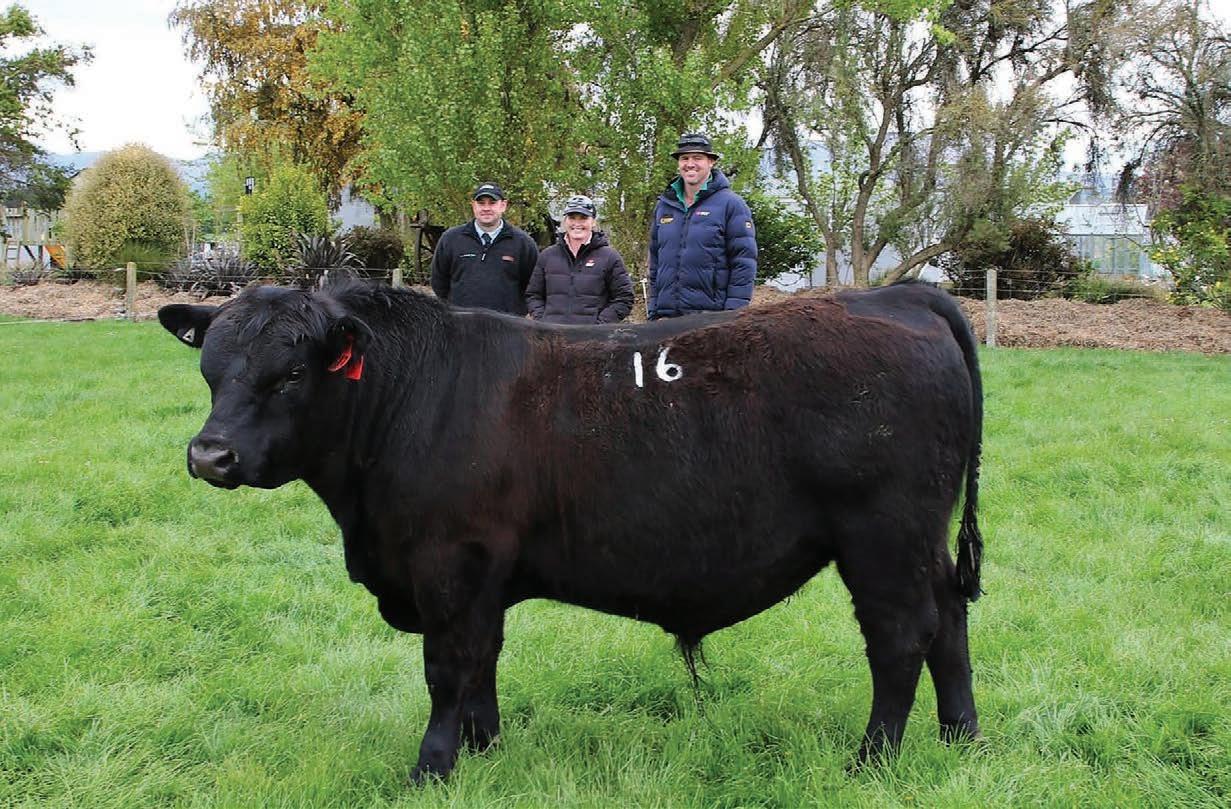
Stokman also had transfer bulls sold at $16,500, $16,000 and $15,000.
Kokonga Herefords, Waikaretu, had a top price of $11,000 for Kokonga Xcel 1100 and had a full clearance of 49 bulls with an average of $3720.

Mahuta Herefords at Glen Murray in northern Waikato sold Mahuta Routeburn 1059 for a top price of $14,000 to Craigmore Herefords.
Willowspring Herefords sold a bull for $10,000 to Tawanui Herefords, and Westholm Herefords got $7800 for a bull sold to Flagstaff Herefords.
The biggest Hereford vendors were Riverton Ezicalve at Whanganui and Morrison Ezicalve at Marton. Riverton averaged $3639 for 109 sold and the Morrisons $3000 for 89 sold.
Among the highest prices during the spring sales, $13,500 was paid by Taimate Angus for Matai Mara 21 33, while McFadzean Cattle Company got $13,200 for Meat Maker 1451, purchased by Grassendale Genetics.
In Hawke’s Bay, Rissington Cattle Company sold 171 bulls with Angus, Simmental and composite breeding with an average of $7324 and a top price of $14,500 to Lone Star Farms.
Bill Sweeney, New Zealand Farmers Livestock general manager, said the condition of bulls offered in auctions was good for the time of the year but bulls in

paddock sales were lighter because of a very hard autumn.
“Clearance was very good across all the sales we were involved in with very few bulls passed in and [those that were], were sold reasonably quickly in the paddock afterwards.”
Sweeney said prices paid for yearling bulls during the spring were on par with last year, some up and some down.
The giant BullsEye sale at Huntly in northern Waikato featured more than 350 service bulls offered from six breeds, all two-year or threeyear bulls.
Herefords averaged $2480 across the 160 head sold, both two-year and three-year.

Rising two-year Angus bulls averaged $2320 for 50 sold, R2yr Murray Greys were $2453 across 25 sold and R2yr Red Devons averaged $2200 for 20 sold.
Jersey bulls averaged $2305 for all 100 sold, both R2yr and R3yr.
Rising two-year Friesian-cross recorded bulls averaged $2010 for 12 sold.
Silverstream Charolais at Ataahua near Christchurch conducted its first ever spring sale online only, without any strong
expectations of how it would go.
Anna Fisher said they were excited with the level of interest in their bulls, and in Charolais generally, and expect to have more spring sales in future.
Two autumn-born bulls made $9000 – Silverstream Statesman S10 to Mt Potts Station, Ashburton Gorge, and Silverstream Sierra S2 to Owen Harvey from Martinborough.
Spring-born Silverstream Sussex S235 sold to Whakamarumaru Station in Hastings for $5250.
Silverstream sold all 22 bulls and averaged $4800.
Nearby Sudeley Angus, Irwell in Canterbury, had a full clearance of 32 yearling bulls at $4080 average and had a top price of $8500 paid by Tom Waldron.
Meadowslea Angus, Fairlie, sold 66 yearling bulls and averaged $3600 and 28 2yo bulls averaging $4600. Top price was $10,500 paid by Dickie Sansom.
Vendor David Giddings said 550 buyers were online via Your Bid from throughout the whole country.
North Canterbury vendor Te Mania Angus sold 31 yearling bulls, averaged $4371 and achieved a top price of $9500.
Hugh Stringleman
MARKETS
Bulls
SUMMIT: Lot 16 for Rockley Angus sold for $24,000, purchased by Carrfields agent
Robbie Kirkpatrick for Tawa Hills, with vendors Katherine and Philip McCallum.
GOING
UP COUNTRY:
Silverstream Statesman
S10 is going to work
on Mt Potts Station, Ashburton Gorge, after
selling for $9000 in Silverstream’s first spring sale. Results published are from data provided to
AgriHQ
Want to get the most out of your bull? Start by pairing him with the best females in your herd by using DNA powered testing portfolio Ella Holland National Territory Manager P: 06 323 4484 M: 027 386 2410 E: ella@pbbnz.com www.pbbnz.com Contact Ella for your Free Igenity genetics handbook 64 Farmers Weekly 2022 Spring Bull Sale Results IN PARTNERSHIP WITH
30 $3,286.00 $5,200.00
Glanworth/Waigroup Angus Pahiatua
Glen R Angus Darfield 2-year 25 $5,600.00 $8,500.00 Hurunui Hills Partnership
Hallmark and Waiterenui Angus Raukawa 45 45 $4,360.00
Heather Dell Angus Rotorua 23 23 $3,204.00 $8,000.00 Rotowai Angus
Kakahu Angus Geraldine
58 $5,089.00 $9,500.00 Melior Farms
Komako Angus Pohangina 30 $5,473.00 $11,000.00 Sami and Laura Werder
LJ Ranui Angus Whanganui 32 32 $3,584.00 $9,000.00 Rotowai Angus Maranui Herefords & Angus Waihi 11 11 $2,686.00 $4,100.00 Bexley Station
Matai Mara Angus Cambridge 6 5 $5,340.00 $13,500.00 Taimate Angus
Matauri Angus Dargaville 16 16 $3,694.00 $5,000.00
Meadowslea Angus & Sheep Genetics Fairlie Yearling 66 66 $3,600.00
Meadowslea Angus & Sheep Genetics Fairlie 2-year 29 28 $4,600.00 $10,500.00 Dickie Sansom
Mt Mable Angus Kumeroa 25 20 $3,300.00 $8,400.00 Tapiri Angus
Piquet Hill Farms Te Akau 20 18 $2,200.00 $4,700.00
Puke-Nui Angus Taumarunui 26 24 $2,337.00 $3,200.00
Rockley Angus Balfour Yearling 37 32 $6,195.00 $24,000.00 Tawa Hills Angus Stern Angus Pleasant Point 38 38 $4,500.00 $10,000.00 Lake McKay Station
Stokman Angus Rotorua 97 94 $5,737.00 $23,000.00 Peter West, Hawkes Bay (Commercial)
Sudeley Angus Irwell Yearling 32 32 $4,080.00 $8,500.00 Tom Waldron
Takapoto Angus Cambridge 40 38 $3,352.00 $10,000.00
Te Atarangi Angus Te Kōpuru Yearling 115 112 $3,884.00 $10,100.00 Onetai Station, Mokau
Te Mania Angus Cheviot Yearling 31 31 $4,371.00 $9,500.00 Bullock Hill Farming
Timperlea Angus Oxford 22 22 $10,500.00 Will Jamison
Totaranui Angus Pahiatua 87 82 $3,820.00 $9,000.00 Commercial
Turihaua Angus Gisborne 2-year 9 8 $6,562.00
Turihaua Angus Gisborne
26 $6,142.00 $14,000.00 Ratanui Angus
$6,820.00 $21,500.00 Wyuna Station, Glenorchy (Commercial) Waitangi
Twin Oaks Angus Ngāruawāhia
CHAROLAIS
$3,996.00 $6,500.00 Roger and Becky Boese (Commercial)
$5,500.00
$8,200.00 Rock-End
$2,650.00 Kairaumati Polled Herefords
$3,569.00 Kairaumati Polled
$4,700.00 Horizon Herefords Kokonga Herefords
$3,720.00 $11,000.00 Otapawa Poll Herefords Mahuta
$14,000.00 Craigmore Polled Herefords Maranui Herefords
$4,000.00 Kairaumati Polled Hereford Stud
$4,700.00 Mendip Hills Station
$6,000.00 Steve Morgan
Results published are from data provided to AgriHQ STUD LOCATION AGE OF BULL TOTAL OFFERED TOTAL SOLD AVERAGE PRICE TOP PRICE SOLD TO ANGUS
38
Yearling
Yearling 28
49 48
Angus Waitangi 86 78
Woodbank Angus Kaikōura 37 36 $3,594.00
Silverstream Charolais Ataahua 22 22 $4,800.00 HEREFORD Ardo Herefords Marton Yearling 95 89 $3,000.00 $6,000.00 Bryce Heard, Hoko Herefords Ardo Herefords Marton 2-year 32 32 $3,300.00 Bushy Downs Herefords Te Awamutu Yearling 30 22 $2,845.00 $4,000.00 Commercial Bushy Downs Herefords Te Awamutu 2-year 63 60 $3,342.00 $5,100.00 Commercial Craigmore Polled Herefords Ohaupo 113 103 $2,879.00
Herefords Hurstpier Polled Hereford Stud Tikorangi 40 40 $3,000.00 Kaipara Herefords Te Kōpuru 91 $2,315.00
Colville 20 Month 26 26
Herefords Colville Yearling 24 22 $2,940.00
Tuakau Yearling 49 49
Herefords Tuakau 55 55 $4,540.00
& Angus Waihi 21 21 $2,526.00
Matapouri Hereford Whangarei 2-year 46 46 $3,310.00 Matapouri Hereford Whangarei Yearling 73 73 $2,716.00 Matariki Herefords Kaikōura 31 31 $3,045.00
Maungahina Stud Masterton 25 25 $3,300.00
Momona Herefords Tirau 50 50 $2,524.00 $3,300.00 Commercial Otengi and Waimaire Polled Hereford Stud Kaeo 2-year 16 16 $3,525.00 $4,200.00 Otengi and Waimaire Polled Hereford Stud Kaeo Yearling autumn born 15 15 $3,326.00 Otengi and Waimaire Polled Hereford Stud Kaeo Yearling spring born 32 25 $2,968.00 $6,500.00 Ratanui Hereford Cambridge 62 62 $2,474.00 $3,300.00 Wayne Clarke Riverlee Downs Hereford Kimbolton 63 53 $2,900.00 $3,300.00 Commercial Riverton Ezicalve Herefords Fordell Yearling 109 109 $3,639.00 $7,100.00 Commercial Riverton Ezicalve Herefords Fordell 2-year 35 35 $3,591.00 Shrimpton's Hill Herefords Cave 2-year 177 175 $2,350.00 $3,600.00 Poplars Farm Willowspring Herefords Otorohanga R1 11 11 $3,681.00 $10,000.00 Tawanui Herefords Willowspring Herefords Otorohanga R2 1 1 $8,000.00 Commercial MURRAY GREY Torrisdale Winton 40 31 $2,760.00 $4,600.00 Premier Cattle Company Cambridge 5 $2,360.00 SPECKLE PARK Maungahina Stud Masterton 23 23 4200 9500 Sarah and Martin Forsyth Premier Cattle Company Cambridge 25 25 $3,885.00 $6,500.00 Warwick Mason, Waiotira OTHER Rissington Cattle Company Napier 171 171 $7,324.00 $14,500.00 Lone Star Farms 65 Farmers Weekly 2022 Spring Bull Sale Results IN PARTNERSHIP WITH
Markets
Excuse me, where is the spring flush?
Wet and cold conditions in parts of the North Island and uncomfortably dry weather further south have conspired to delay the annual bolting of grass that fattens pastures this time of year – and that is enough to blunt the edge of the store cattle market
 Suz Bremner MARKETS
Suz Bremner MARKETS
Beef and sheep
in the south and east of both main islands too.”
That has had a significant impact on store cattle sales around the country and a clear divide has emerged between the short-term lines that are still being chased and anything too longer term or of lesser quality.
spring
come.
yet
WeatherWatch forecaster Phil Duncan says that while October was generally warmer, it was at the wrong part of the day-night cycle to promote grass growth.

“La Niña easterlies (cool off the sea for eastern regions like Hawke’s Bay and Canterbury) have lowered daytime temperatures along with more cloud cover. While this may have meant fewer frosts and slightly milder nights, the daytime temperatures have clearly been down in most places. The weekly injections of southerlies have been noticeable
The spring cattle sales started with their usual gusto, in anticipation of a growthy spring, but as the weeks have gone by without that spring flush, the edge has come off the market for the longer term cattle. There is no one-size-fits-all scenario for the lack of grass either as, for areas of the North Island the flush has been delayed due to very wet conditions and cooler temperatures, while regions such as Waikato and Canterbury are already uncomfortably dry for the time of year.
Yearling dairy-beef steers went through a strong patch at the dairy-beef dominant yards of Feilding, Frankton, Rangiuru and


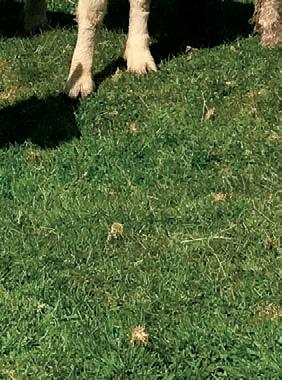
The store cattle market needs an injection of grass, whether that be growth from warmer days or rainfall, and there is a light at the end of the tunnel for the regions in need of sunshine at least.
Temuka in early September. In North Island yards, averages of $3.78-$3.92/kg were achieved, but within a week values dropped 30-40c/kg. The last few sales of September and into recent weeks posted averages of $3.28-$3.49/ kg. For Frankton and Rangiuru that was balanced to some extent by a lift in average weights of



approximately 40kg, yet Feilding weight averages were largely unchanged. At Temuka, from midAugust to mid-September, this class averaged $3.41-$3.45/kg for 200-240kg – yet has dropped to $3.06-$3.13/kg for 254-298kg in recent weeks.
The market for yearling traditional steers has been more resilient, especially in the North Island and if they are straight black or Angus-Hereford. They have, however, followed the same pattern of the edge coming off, when typically a grass market would have kicked in and added more fuel to the buying fire.
Stortford Lodge peaked at $4.42/ kg mid-September though for an average weight of 247kg. More recently average weights of 290330kg have been recorded and
around the country but any

per-kilogram averages have varied from $3.98/kg to $4.27/kg. Trading at Feilding from late August to late September was relatively consistent at $4.02-$4.27/kg for 232-288kg averages, while more recently average weights have climbed to 303-305kg, but prices have dropped more than the extra weight adjustment to $3.76-$3.86/ kg.
The store cattle market needs an injection of grass, whether that be growth from warmer days or rainfall, and Duncan assures us there is a light at the end of the tunnel for the regions in need of sunshine at least. He reports that there are more westerlies and northerlies in the coming weeks, which will help to lift temperatures and keep the clouds from blocking the sun too much.
All Rams sold with a FE INDEX R a m H g t s A t P a p a r a t a w e a r e n o w i d e n t i f y i n g s h e e p w i t h l o w e r m e t h a n e e m i s s i o n s . M e e t i n g T h e M e t h a n e C h a l l e n g e w w w . p a p a r a t a . c o . n z 3 4 t h A n n u a l R a m S a l e o n f a r m , T a t u Oh u r a , T h u r s d a y 1 7 t h N o v e m b e r , 2 0 2 2 Catalogues mailed to past buyers & available on website Top 1 3 0 rams available so you get top pick Next cut available for paddock sale Contact Trevor Johnson on 0 2 7 2 2 0 9 5 6 7 or Seymour Spence 0 7 8 9 3 8 8 4 4 66
AS WE reach the end of October, farmers would usually be shutting the hay paddocks up and planning feed rotations around the grass that is bolting away. But once again 2022 has defied the norm and the
flush is
to
Proudly sponsored by
MIXED
MARKET: Short-term cattle are still
proving to
be very
popular at
saleyards
longer-term or lesser quality lines are struggling without the normal spring
grass
market
to
drive competition.
Weekly saleyards
New season lambs are still slow to come out but there has already been a price adjustment as the market responds to falling schedules and a cautious outlook. To date, the largest entry of lambs has been sold at Stortford Lodge, where just over 3200 were presented at the last sale. Prices dropped $35 per head compared to the first lambs offered for the season two weeks earlier, yet relative to last year’s prices there was only a $5 per head decrease. All lambs offered were terminal-cross mixed-sex and the top lines made $131-$147, while the balance traded at $98.50-$130.50.
Mixed-age Simmental cows, 636-676kg
2-year Hereford-Friesian
2-year dairy-beef steers 3.3
2-year heifers 3.15
Yearling dairy-beef steers 3.40-3.64
Yearling Shorthorn-Friesian heifers 3.34
Yearling beef-cross heifers 3.10-3.15
Aut-born weaner dairy-beef heifers 480-550
Tuakau
2-year beef & dairy-beef
2-year beef & dairy-beef heifers, 300-400kg 3.22-3.31
Yearling traditional steers, 250-350kg 3.25-3.48
Yearling traditional heifers, 250-300kg
Prime steers, 500-700kg 3.33-3.49
Prime heifers, 500-600kg 3.39-3.48
Boner cows, 450-600kg
Frankton
2-year dairy-beef steers, 445-541kg
Aut-born yearling Speckle Park-cross steers, 422kg, one line 3.29
Yearling Hereford-Friesian steers, 253kg, one line 3.6
Yearling dairy-beef steers, 253-323kg 3.47-3.55
Yearling Angus-Friesian steers, 316-366kg 3.29-3.35
Yearling Friesian steers, 326-365kg 2.52-2.58
Yearling dairy-beef heifers, 197-330kg 2.94-3.08
Yearling dairy-beef heifers, 196-256kg
Prime dairy-beef heifers, 490kg
Frankton
2-year dairy-beef steers, 415-463kg
2-year dairy-beef heifers, 424-442kg
Aut-born 2-year Charolais-cross steers, 380-407kg
Yearling Charolais-cross steers,
Yearling
Prime
2-year Angus steers, 395-502kg 3.51-3.66
2-year dairy-beef steers, 419-565kg 3.41-3.57
2-year Limousin heifers, 471kg, one line 1600
Yearling Angus steers, 268-322kg 3.69-3.98
Yearling Angus steers, 194-263kg 4.08-4.28
Yearling beef-cross steers, 279-403kg 3.16-3.54
Yearling Hereford-Friesian steers, 298kg, one line 3.99
Yearling dairy-beef steers, 230-345kg 3.24-3.61
Yearling Friesian bulls, 148-155kg 4.63-4.73
Yearling beef-cross heifers, 210-243kg 645-730
Yearling Hereford-Friesian heifers, 218-309kg 610-950
| October 21 | 387 sheep
$/kg or $/hd
Mixed-age ewes & lambs, very good ewes, docked lambs 134.5
Mixed-age ewes & lambs, good ewes, undocked lambs 121-126
Prime ewes, all 92-185 Prime hoggets, all 137-247
Taupo | October 20 | 581 cattle
$/kg or $/hd
Mixed-age traditional cows, 627-702kg 2.31-2.39
2-year dairy-beef steers, 520-548kg 3.23-3.34
2-year dairy-beef steers, 372-446kg 3.08-3.10
2-year Speckle Park-cross heifers, 392-470kg 1250-1430
Aut-born yearling traditional steers, 397-413kg 3.71-3.81
Yearling dairy-beef bulls, 252kg, one line 3.44
Yearling Friesian bulls, 239kg, one line 3.65
Yearling Friesian-cross bulls, 242-301kg 3.08-3.10
Yearling Hereford-Friesian heifers, 307kg 3.42-3.63
Yearling dairy-beef heifers, 234-334kg 3.15-3.25
Yearling Angus-Friesian heifers, 263-288kg 2.98-3.04
Taranaki | October 20 | 382 cattle
$/kg or $/hd
Aut-born weaner Friesian bulls, 203-210kg 785-795
Aut-born weaner Hereford-Friesian heifers, 126-146kg 540-660
Weaner dairy-beef steers, 118-132kg 620-660
Weaner Hereford-Friesian bulls, 106-161kg 610-660
Weaner Friesian bulls, 91-116kg 490-510
Weaner dairy-beef heifers, 110-135kg 505-590
Taranaki | October 26 | 545 cattle
Yearling dairy-beef
Yearling Charolais-Friesian
$/kg or $/hd
2-year dairy-beef steers, 400-455kg 3.39
2-year Friesian bulls, 486-626kg 3.50-3.51
2-year Friesian heifers, 533kg 3.06
Yearling Angus-Friesian steers, 196-231kg 3.44-3.49
Yearling Hereford-Friesian steers, 300kg 3.57
Yearling Charolais-Friesian heifers, 286kg 3.09
Yearling dairy-beef heifers, 275-285kg 2.85
Prime dairy-beef steers, 730-741kg 3.60-3.71
66-67 Markets
Kaikohe | October 26 | 450 cattle $/kg or $/hd
steers 3.52-3.55
| October 20 | 1200 cattle $/kg or $/hd
steers, 400kg-plus 3.22-3.49
2.90-3.15 Tuakau | October 26 | 360 cattle $/kg or $/hd
2.18-2.70
| October 25 | 320 cattle $/kg or $/hd
3.17-3.34
2.68-2.86
average 3.23
| October 26 | 546 cattle $/kg or $/hd
3.00-3.20
3.05-3.19
3.32-3.34
299-323kg 3.69-3.73
dairy-beef heifers, 247-323kg 2.99-3.12
South Devon steers, 574kg 2.57 Prime dairy-beef , 584-689kg 3.35-3.42 Rangiuru | October 25 | 309 cattle, 55 sheep $/kg or $/hd 2-year Hereford-Friesian steers, 346-402kg 3.16-3.47
steers, 215-280kg 860-980
heifers, 275kg, one line 3.38 Prime Angus-Friesian steers, 605-652kg 3.51-3.77 Prime dairy-beef heifers, 498-532kg 3.11-3.27 Boner Friesian cows, 492-610kg 2.53-2.62 Te Kuiti | October 20 | 1171 cattle $/kg or $/hd Mixed-age Angus cows, 443-562kg 2.26-2.37
2.72-2.79
Matawhero
FARMERS WEEKLY – farmersweekly.co.nz – October 31, 2022Markets 67
Rongotea | October 25
2-year Hereford-Friesian heifers, 436-533kg
2-year Angus-cross heifers, 428-493kg
Yearling
Yearling
Yearling
Yearling Friesian
Yearling Hereford-Friesian
Yearling Angus heifers, 190-222kg
Aut-born weaner Friesian
ewes
lambs, terminal-cross, docked
or $/hd
2-year Speckle Park-cross heifers, 403-463kg 3.18-3.32
Yearling Hereford-Friesian steers, 223-308kg 2.35-3.41
Yearling Angus-cross steers, 299kg 3.35
Yearling other dairy steers, 218-289kg 2.11-2.34
Yearling Friesian bulls, 275kg 3.13
Aut-born weaner beef-cross steers, 200-225kg 600
Aut-born weaner beef-cross heifers, 153-190kg 550-600
Boner Friesian cows, 340-393kg 2.08-2.32
Masterton & Martinborough | October 26 | approx 800 cattle $/kg or $/hd
2-year Simmental-cross steers, 525kg 1855 top price
2-year traditional steers, 420-530kg 3.55-3.75
2-year Simmental-cross heifers, 455kg 1635 top price
2-year traditional heifers, 400-450kg 3.30-3.60
2-year traditional heifers, under 400kg 3.10-3.30
Yearling traditional steers, 350-370kg 3.60-3.75
Yearling traditional heifers, 200-260kg 3.40-4.00
Yearling traditional heifers, under 200kg 650-700
Coalgate | October 20 | 517 cattle, 2936 sheep
or $/hd
Mixed-age Angus cows & calves, 484kg 1410
2-year Hereford-Friesian steers, 437-478kg 3.01-3.14
Yearling traditional steers, 236-248kg 3.47-3.52
Yearling Friesian
235-324kg 2.90-3.09
Yearling Hereford-Friesian
Prime
271-288kg 2.74-2.99
505-677kg
68 FARMERS WEEKLY – farmersweekly.co.nz – October 31, 2022 Markets68 Stortford Lodge | October 26 | 806 cattle, 3791 sheep $/kg or $/hd 2-year traditional steers, 499-569kg 3.77-3.80 2-year traditional steers, 396-522kg 3.62-3.72 2-year traditional heifers, 391-493kg 3.34-3.56 2-year traditional heifers, 343-365kg 3.18-3.24
Angus steers, 212-327kg 3.85-3.93 Yearling Hereford-beef steers, Chatham Islands, 159-221kg 3.17-3.28 Yearling Friesian bulls, 228-233kg 3.63-3.67 Yearling Angus heifers, 291-308kg 3.48-3.63 Store terminal-cross mixed-sex lambs, new season, good 131-147 Store terminal-cross mixed-sex lambs, new season, medium 103-132 Dannevirke | October 20 | 372 sheep $/kg or $/hd Prime ewes, all 114-159 Prime hoggets, all 71-181 Feilding | October 21 | 606 cattle, 1782 sheep $/kg or $/hd 2-year straight-beef steers, 487-616kg 3.60-3.80 2-year Murray Grey-Friesian heifers, 353-383kg 3.04-3.13
Angus steers, 230-366kg 3.81-3.96
dairy-beef steers, 233-293kg 3.56-3.63
bulls, 223-286kg 845-890
heifers, 240-318kg 3.05-3.18
580-705
bulls, 147kg 610 Mixed-age
&
125-132 5-year ewes & lambs, terminal-cross, tails 110 Store hoggets, good 149 Feilding | October 25 | 136 cattle, 1930 sheep $/kg or $/hd Boner Friesian cows, 457-627kg 2.00-2.28 Boner Friesian & Friesian-cross heifers, 465-478kg 2.77-2.84 Prime ewes, good 136-150 Prime male hoggets, heavy 161-221 Prime ewe hoggets, heavy 150-203 Prime mixed-sex hoggets, very heavy 215.5-221 Prime mixed-sex hoggets, heavy 170-210
$/kg
3.09-3.21
3.01-3.18
$/kg
bulls,
heifers,
steers,
3.34-3.45 Prime dairy-beef heifers, 465-613kg 3.20-3.35 Mixed-age ewes & lambs, all 86-140 Store hoggets, all 60-148 MARKET REPORT Subscribe from only $100* per month agrihq.co.nz/our-industry-reports Know the market A comprehensive, easy-to-read, weekly summary of NZ’s agricultural markets including sheep, beef, venison, dairy, grain, and wool. * Prices are GST exclusive
Prime ewes,
Prime hoggets,
Prime mixed-sex
2-year dairy-beef steers, 425-497kg 3.01-3.06
2-year dairy-beef heifers, 344-395kg 2.61-2.82
Yearling traditional steers, 296-363kg 3.06-3.28
Yearling dairy-beef heifers, 235-268kg 600-700
Prime dairy-beef steers, 533-625kg 3.19-3.42
Prime traditional bulls, 572kg 3.28
Prime traditional heifers, 505-535kg 3.31-3.36
Mixed-age ewes & lambs, all 86-129
Prime ewes, most 100-176
Prime hoggets, most 120-185
Temuka
2-year traditional steers, 400-490kg 3.31-3.48
2-year beef-cross bulls, 304-480kg 3.13-3.19
2-year traditional heifers, 381-451kg 3.26-3.41
Yearling Angus steers, 275-303kg 3.79-3.97
Yearling beef-cross bulls, 180-279kg 3.10-3.23
Yearling Angus heifers, 222-340kg 3.29-3.53
Temuka | October 25 | 312 cattle, 5103
Prime Hereford-Friesian steers, 500-750kg 3.29-3.41
Prime Angus heifers, 500-555kg 3.27-3.45
Boner Friesian heifers, 449-452kg 2.85-3.08
Mixed-age ewes & lambs 110
Store mixed-sex hoggets, heavy 152-193
Prime ewes,
•
Balclutha
Prime
Prime
Prime
Charlton
Mixed-age
October 20
Gore | October 26 | 996
2-year Hereford-Friesian steers, 429-463kg
•
$/kg
2-year dairy-beef steers, 369-436kg 3.29-3.33
2-year Friesian steers, 431-464kg 2.80-2.85
2-year Angus heifers, 434-523kg 3.50-3.58
2-year dairy-beef heifers, 361-447kg 3.24-3.31
Yearling traditional steers, 281-298kg 880-1040
Yearling Angus heifers, 219-313kg 3.39-3.53
Yearling dairy-beef heifers, 265-305kg 2.82
Yearling dairy-beef heifers, 230-247kg 580-670
Yearling Speckle Park-cross heifers, 188-198kg 2.50-2.58
Lorneville | October 25 | 871 cattle
$/kg or $/hd
2-year Hereford-Friesian steers, 383-419kg 3.42-3.44
2-year Friesian steers, 345-428kg 2.84-3.03
2-year beef-cross heifers, 319-406kg 2.51-3.28
Yearling traditional steers, 302-375kg 940-1160
Yearling Hereford-Friesian steers, 232-382kg 600-1265
Yearling dairy-beef steers, 195-354kg 540-1160
Yearling Friesian steers, 265-325kg 700-810
Yearling dairy-beef bulls, 233-348kg 600-1040
Yearling Friesian bulls, 176-337kg 480-1000
Yearling Hereford-dairy heifers, 168-339kg 460-985
Yearling Angus-Friesian heifers, 188-330kg 510-920
In the unlikely event FMD was to enter New Zealand, it would devastate our primary sector and rural communities. OSPRI is working closely with the Ministry for Primary Industries (MPI) and the primary sector to ensure we are best-using the tools and data we have available to support a response team in the event of an outbreak.
If you have followed all of the steps and still need help, our Support Centre is ready to assist you. Call 0800 482 463
69 Bonus Free Ad 120mm h x 262mm w NAIT is an OSPRI programme Failure to comply with NAIT obligations may result in fines or prosecution issued by the Ministry for Primary Industries. For more information about your obligations as a PICA, please visit our website ospri.co.nz.
Please do the following: • Ensure your contact details in NAIT are correct • Tag AND register all of your NAIT animals
Record all movements within 48 hours
Sign up to MyOSPRI It’s critical your data in NAIT is accurate so our biosecurity response team can rapidly track and trace the disease, improving the likelihood of eliminating it sooner. Play your part, update NAIT Foot and Mouth Disease For more information see OSPRI.co.nz 69
most 90-200
most 140-255
lambs, new season 192 Canterbury Park | October 26 | 434 cattle, 2138 sheep $/kg or $/hd
| October 20 | 1340 cattle $/kg or $/hd
sheep $/kg or $/hd
good 120-158 Prime mixed-sex hoggets, good 160-196
| October 26 | 409 sheep $/kg or $/hd
ewes 100-181
hoggets 110-213
ram hoggets 30-100
|
| 295 sheep $/kg or $/hd
ewes & lambs 100 Prime ewes 70-189 Prime hoggets 194 average
cattle
or $/hd
3.40-3.47
FARMERS WEEKLY – farmersweekly.co.nz – October 31, 2022Markets 69

70 FARMERS WEEKLY – farmersweekly.co.nz – October 31, 2022 Markets70 AgriHQ market trends Sheep Meat Slaughter price (NZ$/kgCW) Last week Last year North Island lamb (18kg) 9.25 9.65 North Island mutton (25kg) 5.95 6.70 South Island lamb (18kg) 9.25 9.40 South Island mutton (25kg) 5.90 6.75 Export markets (NZ$/kg) China lamb aps 13.11 12.98 Wool (NZ$/kg clean) Two weeks ago Last year Coarse crossbred ind. 2.66 2.63 37 micron ewe 30 micron lamb Beef Slaughter price (NZ$/kgCW) Last week Last year North Island P2 steer (300kg) 6.90 6.60 North Island M2 bull (300kg) 6.50 6.50 North Island M cow (200kg) 4.90 4.90 South Island P2 steer (300kg) 6.65 6.30 South Island M2 bull (300kg) 6.35 6.15 South Island M cow (200kg) 5.00 4.80 Export markets (NZ$/kg) US imported 95CL bull 9.48 9.32 US domestic 90CL cow 9.77 8.47 Venison Slaughter price (NZ$/kgCW) Last week Last year North Island AP stag (60kg) 8.80 7.05 South Island AP stag (60kg) 8.85 7.00 Fertiliser NZ average (NZ$/tonne) Last week Last year DAP 1794 1135 Super 509 342 Urea 1340 955 Urea (Coated) 1339 Exports NZ Log Exports (thous. Tonnes) Sep Last year China 1,683,156 1,147,424 Rest of world 213,832 107,519 Carbon price (NZ$/tonne) Last week Last year NZU 81.3 65.3 Cattle Sheep Deer Fertiliser Forestry Steer slaughter price ($/kgCW) Lamb slaughter price ($/kgCW) Lamb average export value (NZ$/kg) Stag Slaughter price ($/kgCW) Beef average export value (NZ$/kg) Data provided by FORESTRY REPORTS Subscribe from only $100* per month agrihq.co.nz/our-industry-reports See the wood for the trees Be across domestic & international markets by subscribing to NZ’s most authoritative forestry analysis. * Prices are GST exclusive 5.5 6.0 6.5 7.0 Oct Dec Feb Apr Jun Aug North Island South Island 7.5 8.0 8.5 9.0 9.5 10.0 Oct Dec Feb Apr Jun Aug North Island South Island 6.0 7.0 8.0 9.0 10.0 11.0 Apr Jun Aug Oct Dec Feb 5-yr ave Last year This year 6.0 7.0 8.0 9.0 10.0 11.0 Apr Jun Aug Oct Dec Feb 5-yr ave Last year This year 6.0 6.5 7.0 7.5 8.0 8.5 9.0 Oct Dec Feb Apr Jun Aug North Island South Island
market trends
Close
ArborGen Holdings Limited 0.220.270.199
The a2 Milk Company Limited 5.926.584.2
Comvita Limited 3.253.782.98
Delegat Group Limited 10.2514.4510
Fonterra Shareholders' Fund (NS) 3 3.782.75
Foley Wines Limited 1.381.571.34
Greenfern Industries Limited 0.1250.250.089
Livestock Improvement Corporation Ltd (NS) 1.351.731.3
Marlborough Wine Estates Group Limited 0.1950.260.155
NZ King Salmon Investments Limited 0.231.380.187
PGG Wrightson Limited 3.95.763.9
Rua Bioscience Limited 0.250.530.23
Sanford Limited (NS) 4.125.074.03
Scales Corporation Limited 4.745.594.07 Seeka Limited 3.885.363.75
Synlait
Limited (NS) 3.23.583.02
7171 FARMERS WEEKLY – farmersweekly.co.nz – October 31, 2022Markets 71 7.00 7.50 8.00 8.50 9.00 9.50 10.00 May-21 Jul-21 Sep-21 Nov-21 Jan-22 Mar-22 May-22 $/kg MS Sept. 2021 Sept. 2022 NZX
Company Close YTD HighYTD Low
Milk
T&G Global Limited 2.693.012.59 S&P/NZX Primary Sector Equity Index 123941429311724 S&P/NZX 50 Index 110471315010588 S&P/NZX 10 Index 107621272510291
of market Listed Agri shares GrainDairy Dairy Futures (US$/t) Nearest contract Last price* Prior week4 weeks prior WMP 341035603825 SMP 327034503650 AMF 570058255950 Butter 491050005300 Milk Price 9.429.7510.05 * price as at close of business on Wednesday Data provided by Canterbury feed wheat ($/tonne) 5pm, WednesdayMilk price futures ($/kgMS) Canterbury feed barley ($/tonne) Waikato palm kernel ($/tonne)WMP futures - vs four weeks ago (US$/tonne) 7.00 7.50 8.00 8.50 9.00 9.50 10.00 May-21 Jul-21 Sep-21 Nov-21 Jan-22 Mar-22 May-22 $/kg MS Sept. 2021 Sept. 2022 S&P/NZX 10 INDEX 10762 S&P/FW PRIMARY SECTOR EQUITY 12394 S&P/NZX 50 INDEX 11047 Get exclusive daily news, weekly analysis, competitions and prizes, special offers and discounts. farmersweekly.co.nz/everyday farmersweekly.co.nz/everyday ‘EVERYDAY’ Subscribe to Farmers Weekly Online 7.0 8.0 9.0 10.0 11.0 Oct DecFeb AprJunAug Oct Sep-2023 Sep-2024 350 400 450 500 550 600 650 700 Oct DecFeb AprJunAug Oct 350 400 450 500 550 600 650 700 Oct DecFeb AprJunAug Oct 3000 3200 3400 3600 3800 4000 4200 Nov Dec Jan Feb Mar Apr Latest price 4 weeks ago 300 350 400 450 500 550 Oct DecFeb AprJunAug Oct
Watch out for chinks in the armour
AFRONT with some rain moved onto the South Island to start last week but the further north this front travelled the more it weakened. The upper South Island wouldn’t have seen much at all , though Buller and parts of the West Coast saw some rain.
The North Island has been a bit dry although higher inland areas, East Cape and eastern Northland haven’t fared too badly recently. Still, the North Island’s ground moisture is looking fairly good. Canterbury and the Nelson/Marlborough regions are our dry spots.


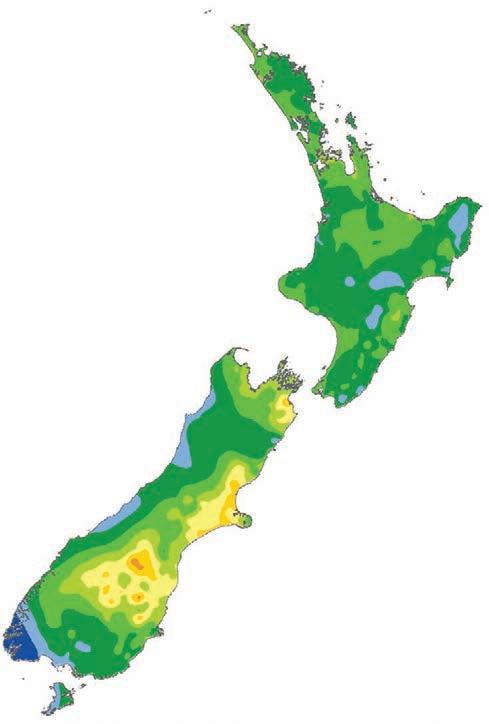
Some rain affected the West Coast on Wednesday and Thursday, also the southeastern corner of the South Island. Friday and Saturday saw northerlies build with heavier rain move into the West Coast. Thankfully Nelson and Marlborough got some rain on Saturday. Rain reached the North Island on Sunday with spits spreading eastwards.
This week a northwesterly airflow lies over the South Island with plenty of rain due for the West Coast. Nelson/ Marlborough is mainly dry apart from a front overnight Wednesday into early Thursday, which brings rain for a time.
The far south being in the middle doesn’t have a totally dry week but it’s not all that wet either. Wednesday and Thursday see some wet weather here for a time and
9am
perhaps overnight Saturday as a southwest front heads in.
The east coast will understandably be drier than the West Coast. A few chinks in the armour exist, though: Monday may see the return of some unstable falls and
Last 15 days rain

Observed rainfall 9am 10/10/2022 to 9am 25/10/2022

possible thunderstorms. Thursday, and Sunday may see showers move through with southerly changes.
The North Island has two main chances of precipitation this week: Monday with showers for the lower North Island mainly
Observed mean temperature 9am 10/10/2022 to 9am 25/10/2022




in the west, then, when a front moves through on Thursday, expect rain in the west with the chance of a heavy fall or two. Scattered rain spreads eastwards. It will be mainly dry beyond that with high pressure keeping frontal activity further south.
KEVIN WHITE OF BRADFIELDS CONTRACTING TALKS ABOUT CLAAS GRASS HARVESTING EQUIPMENT





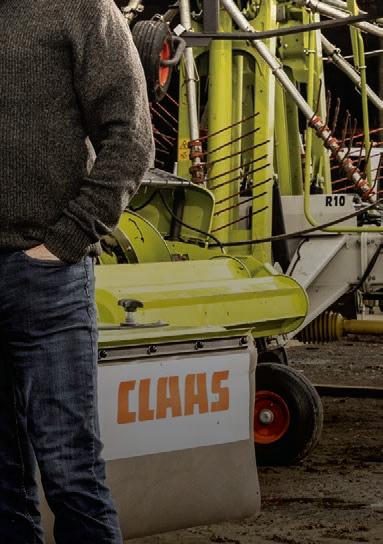

With up to 50 operators out in the field and as many pieces of equipment during peak harvest; reliability and efficiency are key for Kevin and Kirsten White in the South Waikato. Bradfields covers a relatively vast area from as far south as Waiouru, Kawhia in the east and the Bombays in the north. This big catchment means harvesting a wide range of farm types and some hard land contours under the usual time pressure at peak harvest. For Kevin this means ‘purchasing the market leader for gear.’ This is where the CLAAS equipment and the support he gets from CLAAS Harvest Centre come in.

CLAAS DISCO MOWER
CLAAS LINER RAKE
CLAAS VOLTO TEDDER
KEVIN WHITE Bradfields
“ FOR
US IT’S THE RELIABILITY OF THE CLAAS GEAR. THEY GO OUT IN THE MORNING AND COME BACK IN THE EVENING, JOB DONE. ”
THE PROFESSIONAL’S CHOICE For your local dealer go to: claasharvestcentre.com LAN 246 8 72 Weather
Weather ruralweather.co.nz
Deficit
25/10/2022
Soil moisture Temperature

















































































































































































 Hugh Stringleman NEWS Wool
NEW ZEALAND Merino
Hugh Stringleman NEWS Wool
NEW ZEALAND Merino







 Charlie Williamson TECHNOLOGY Solar
Charlie Williamson TECHNOLOGY Solar




































 Richard Rennie TECHNOLOGY Communication
Richard Rennie TECHNOLOGY Communication




















 Annette Scott PEOPLE Awards
Annette Scott PEOPLE Awards































 Geoff Crawford Hikurangi
Geoff Crawford Hikurangi


 Semi-retired Wairarapa farmer and businessman: dath.emerson@gmail.com
Semi-retired Wairarapa farmer and businessman: dath.emerson@gmail.com











































































 Conrad Wilkshire General Manager Rural Property Brokers Ltd
Conrad Wilkshire General Manager Rural Property Brokers Ltd
























 Ohaupo 250 Forkert Road
Tender
Karapiro 2279 and 2291 Maungatautari Road
Tender
David McGuire
Ohaupo 250 Forkert Road
Tender
Karapiro 2279 and 2291 Maungatautari Road
Tender
David McGuire




























 Greg O'Byrne
Greg O'Byrne




































































 Palmerston 714 Palmerston-Dunback Road
Tender
Palmerston 714 Palmerston-Dunback Road
Tender






























































































































































































































































































 Suz Bremner MARKETS
Suz Bremner MARKETS
























